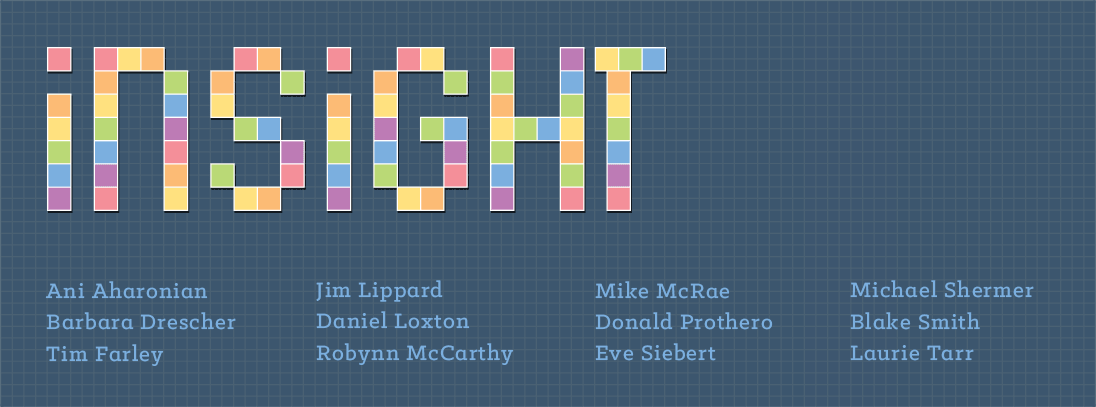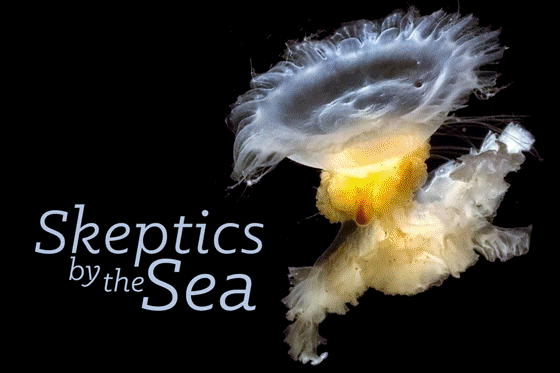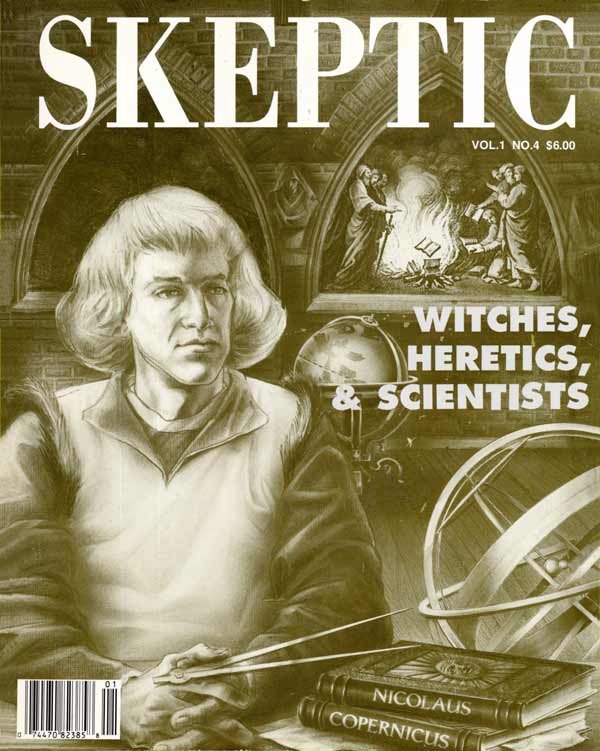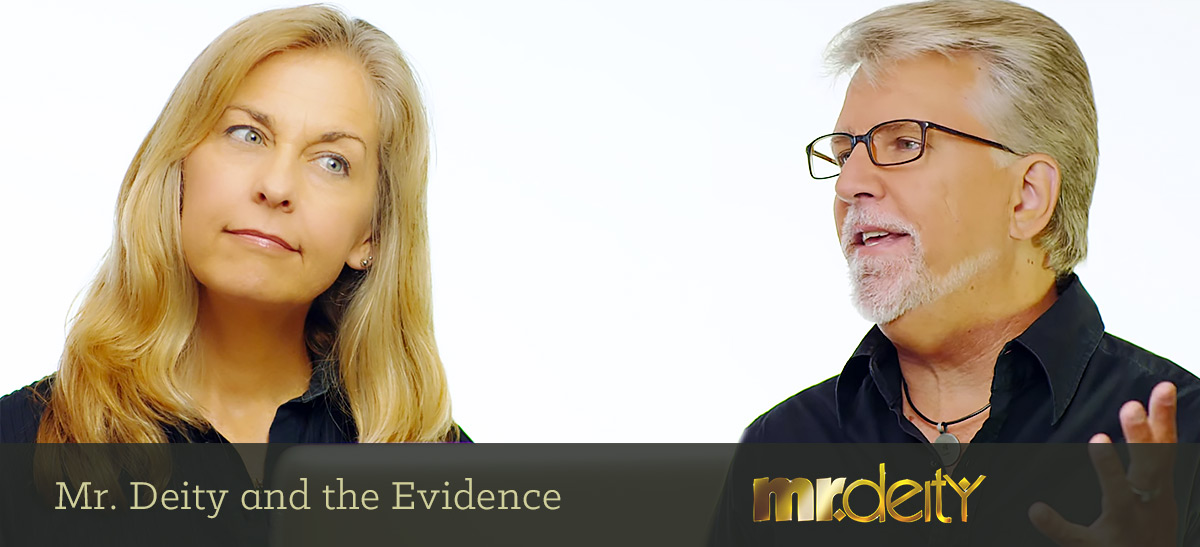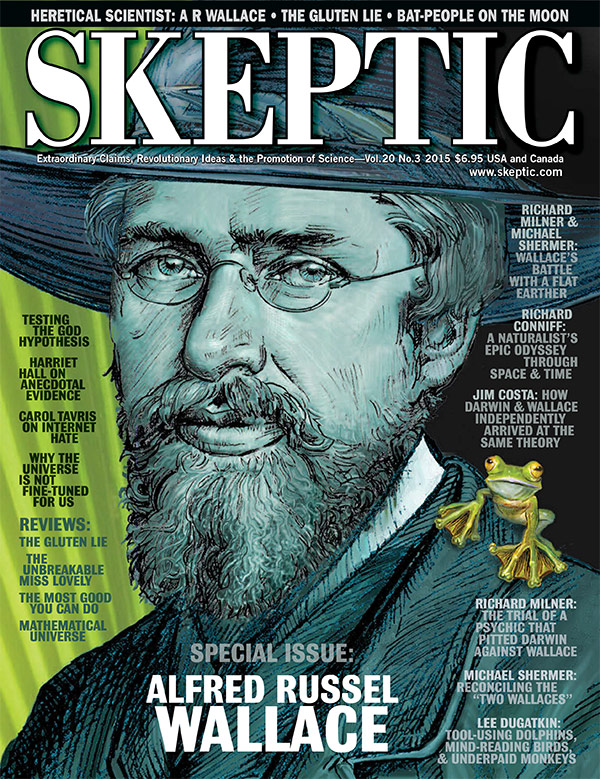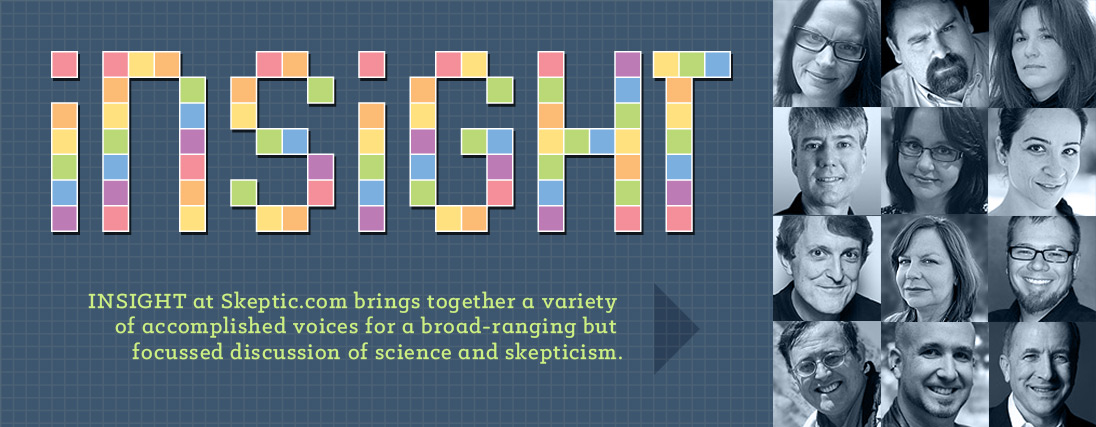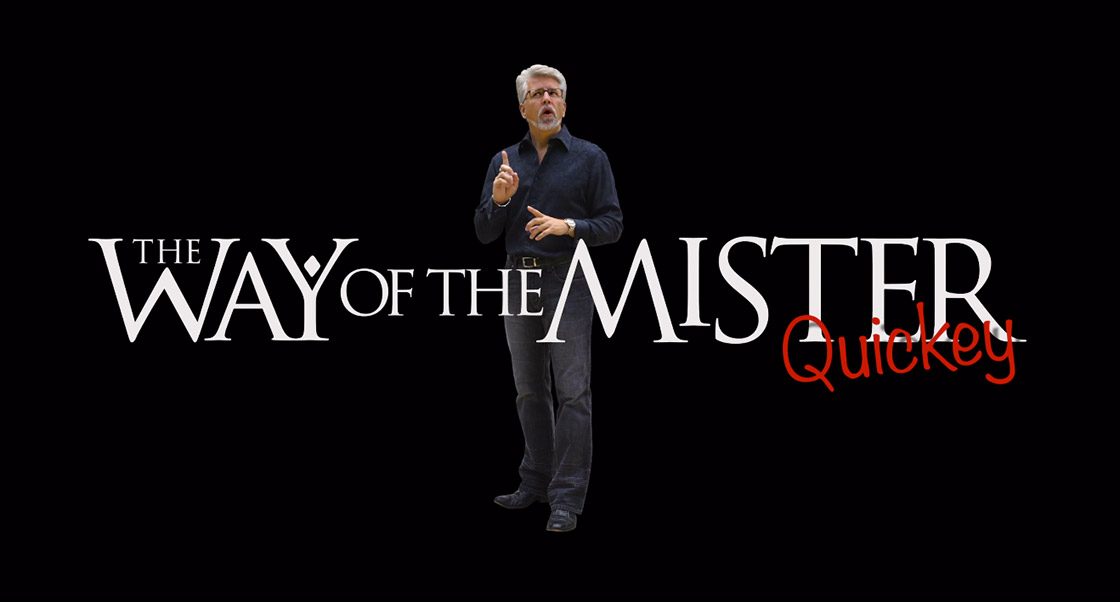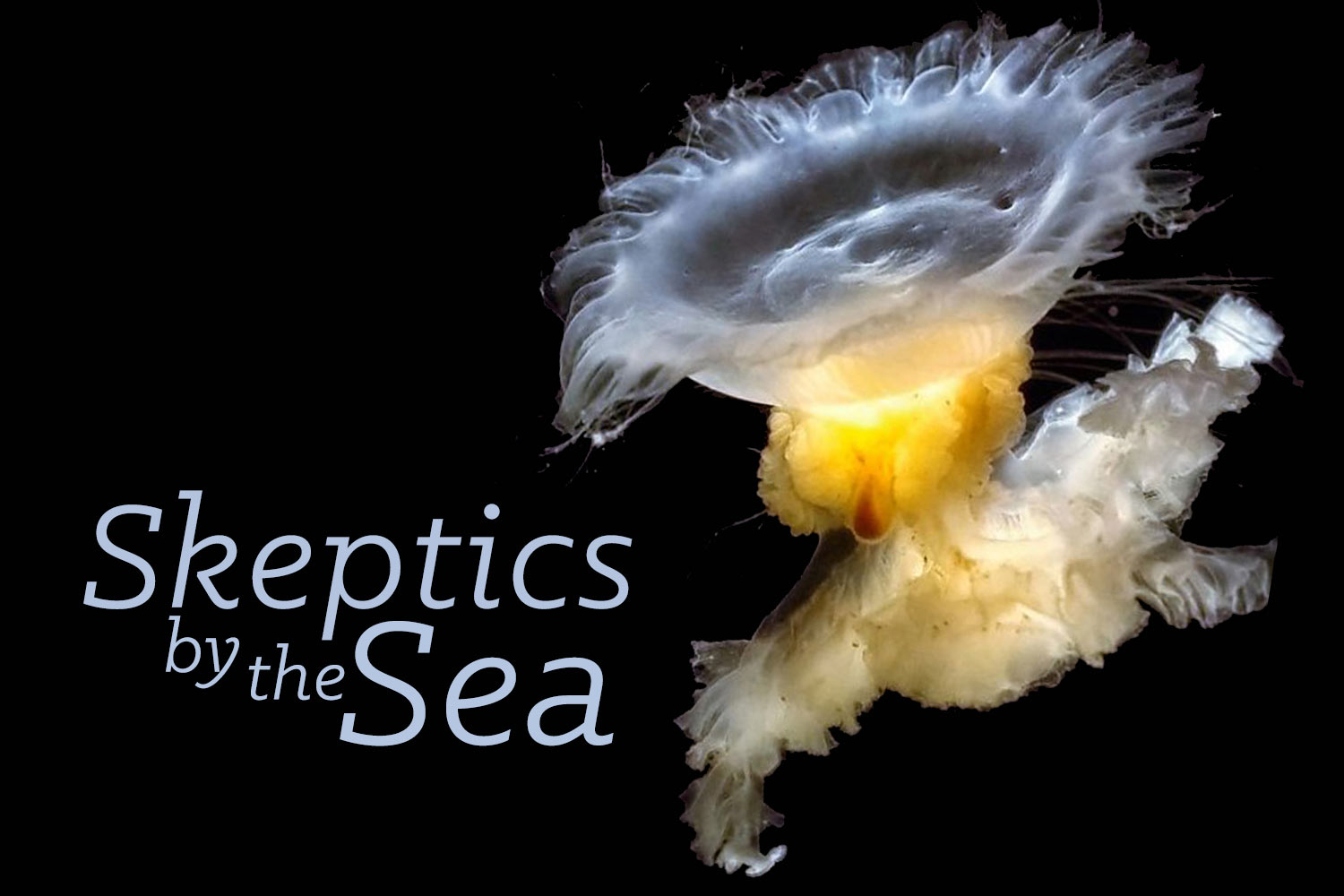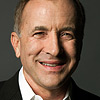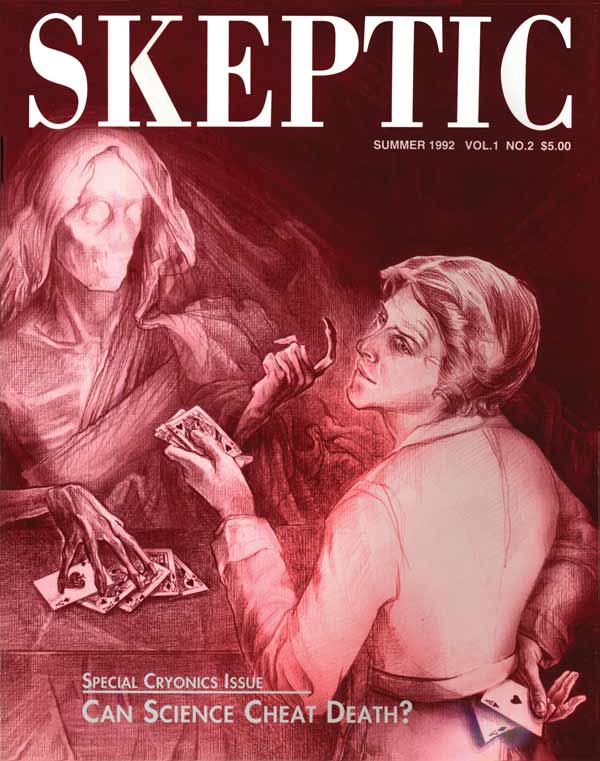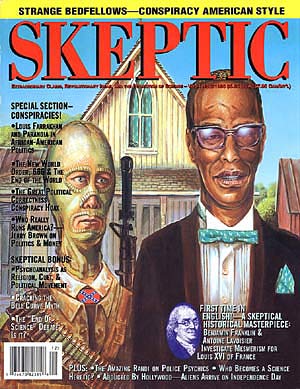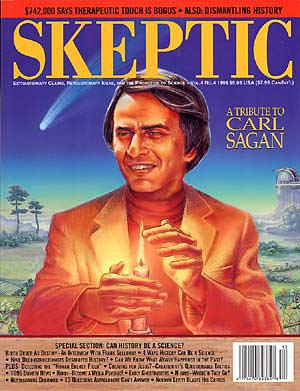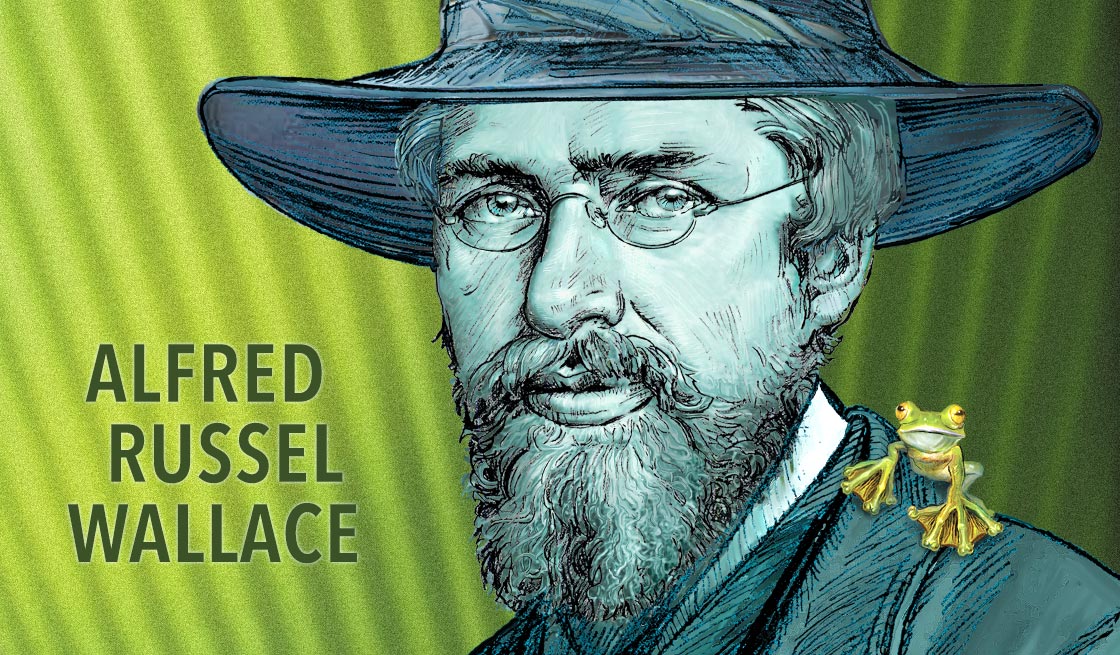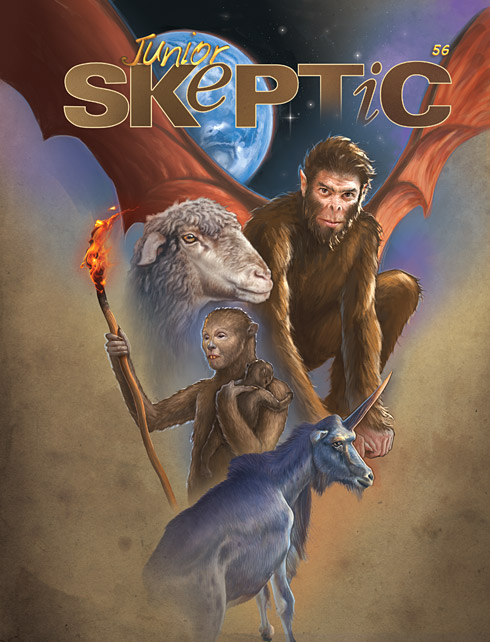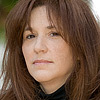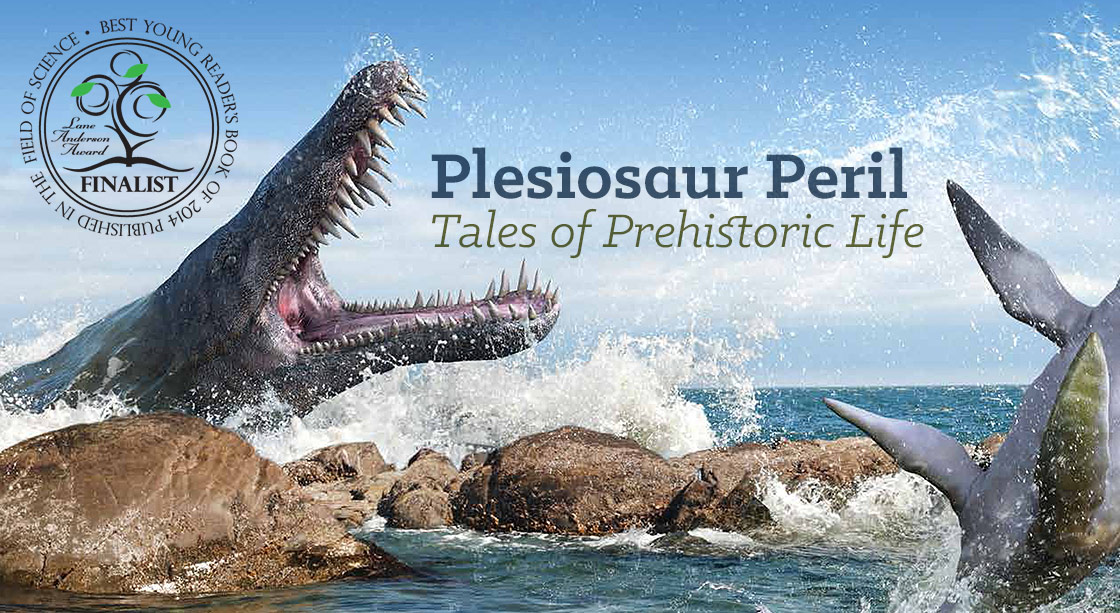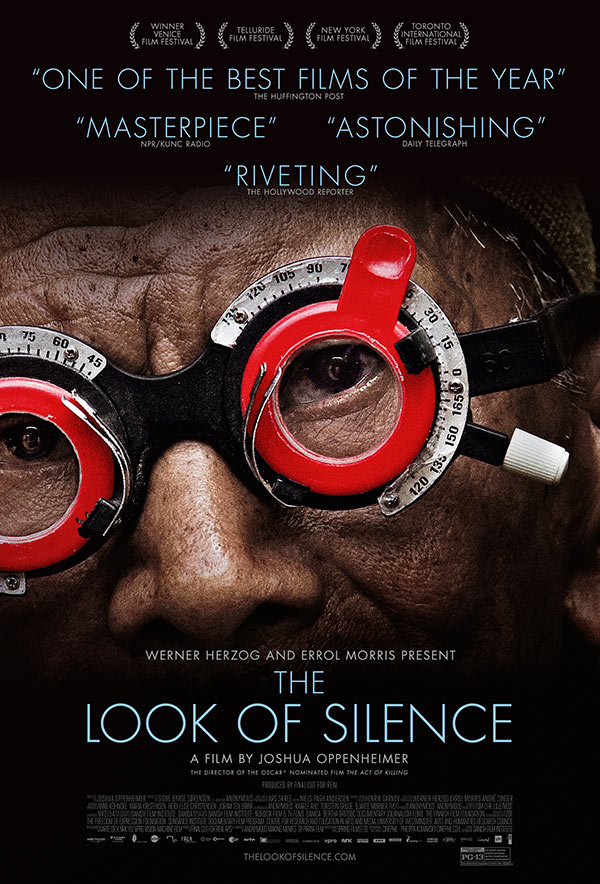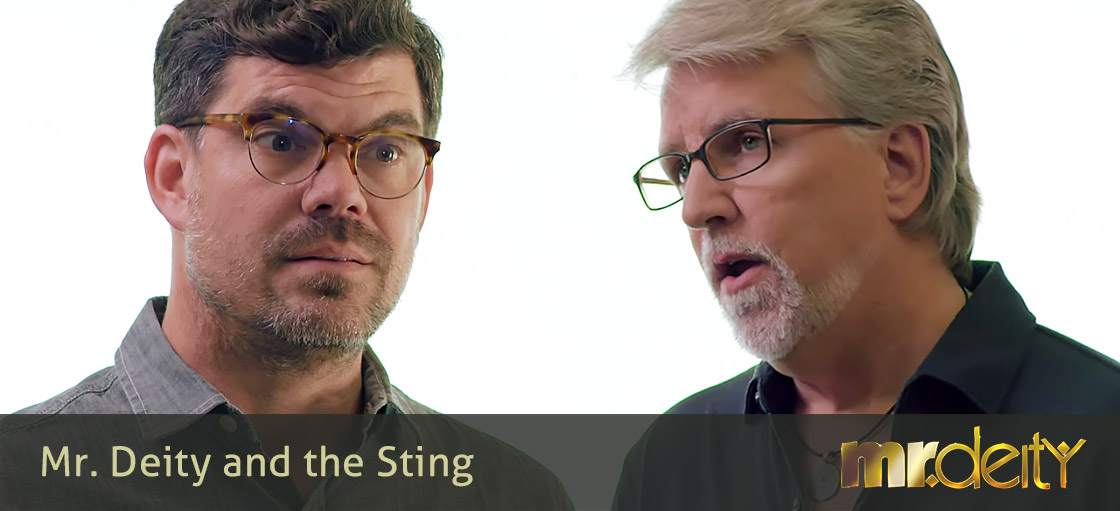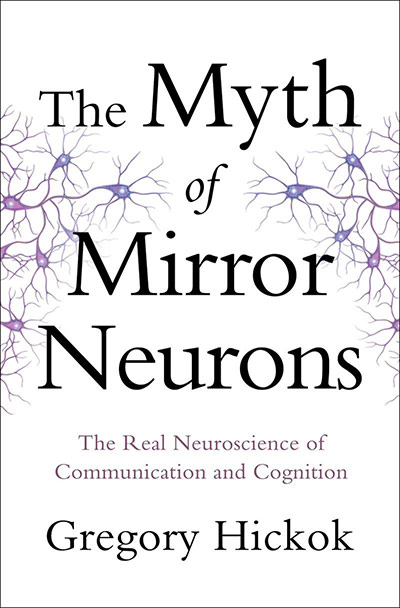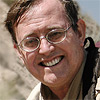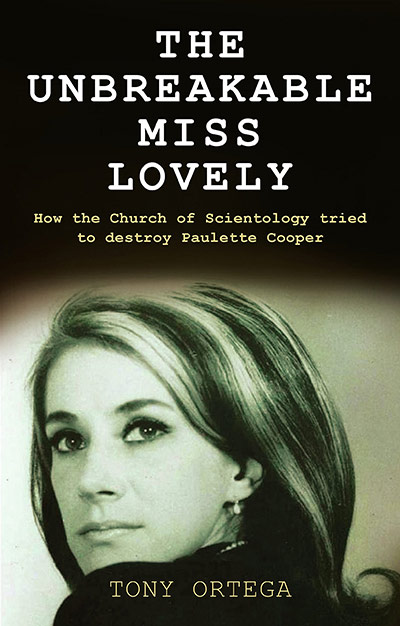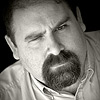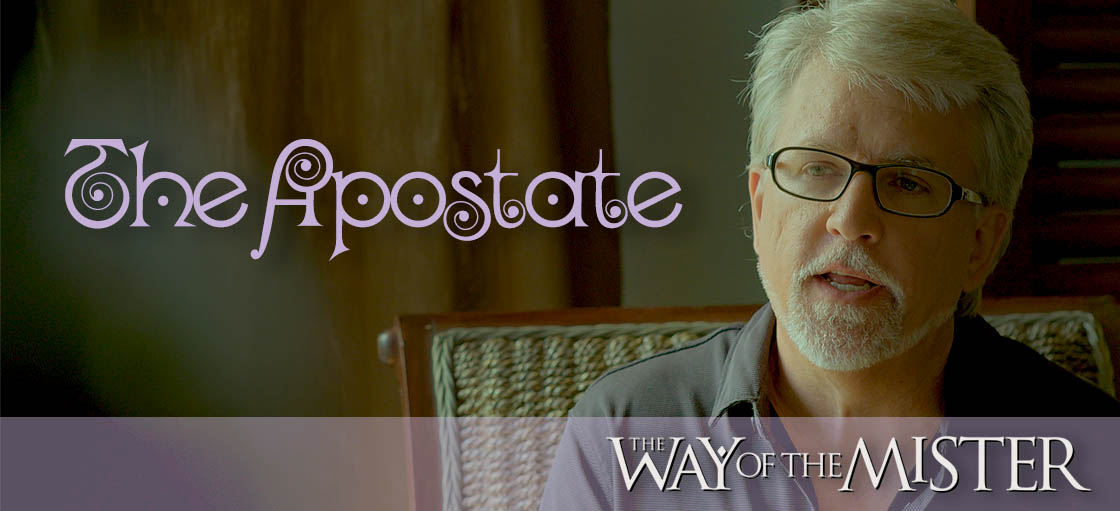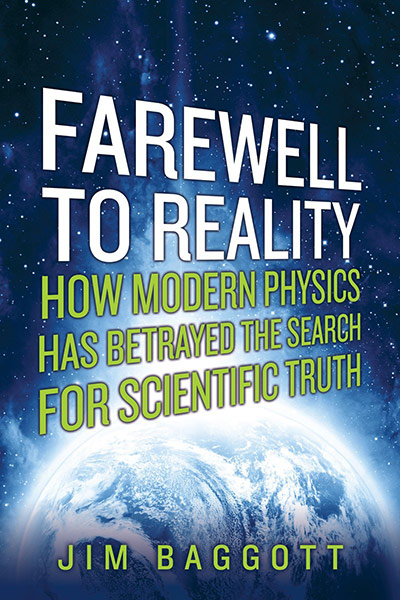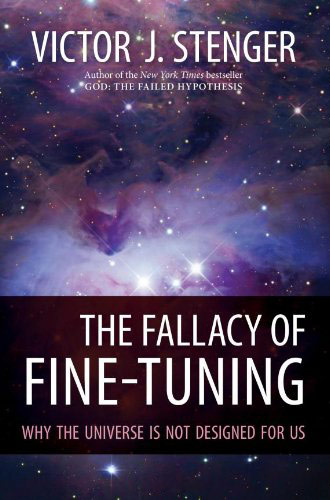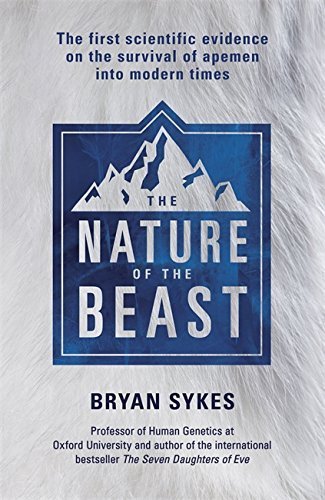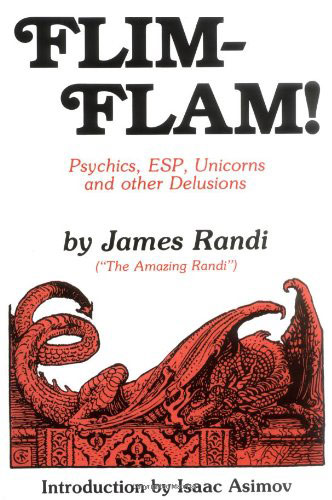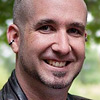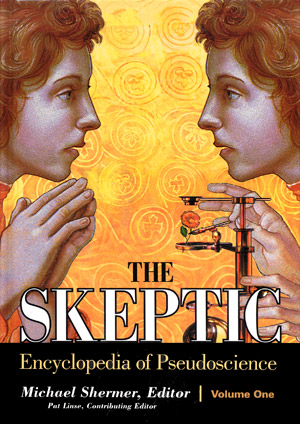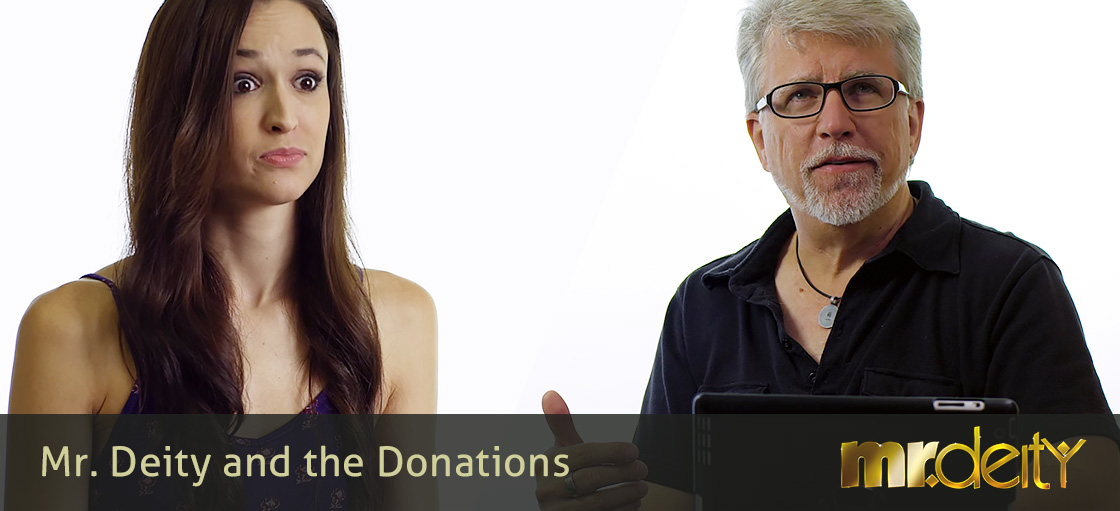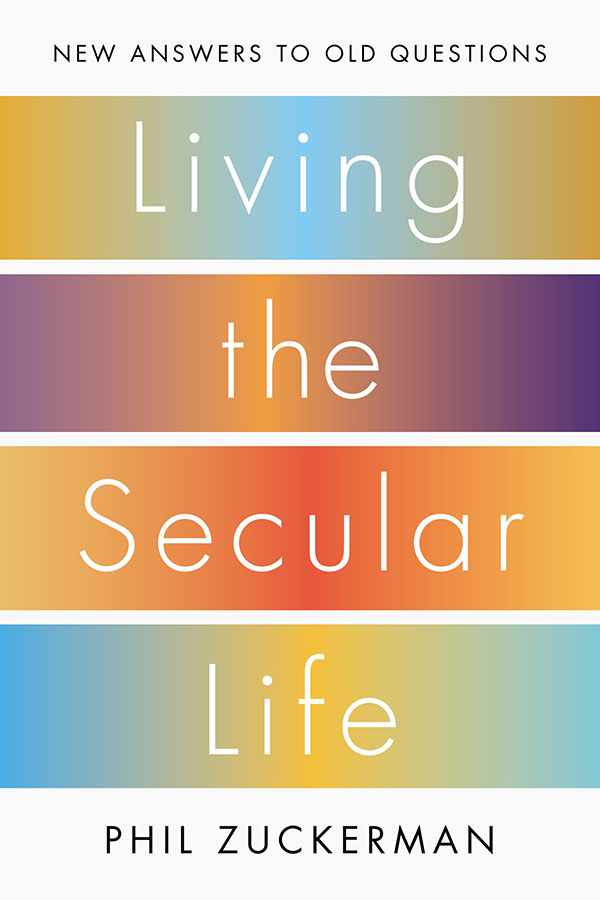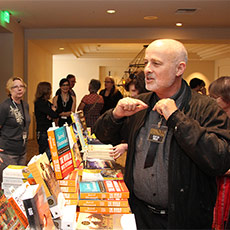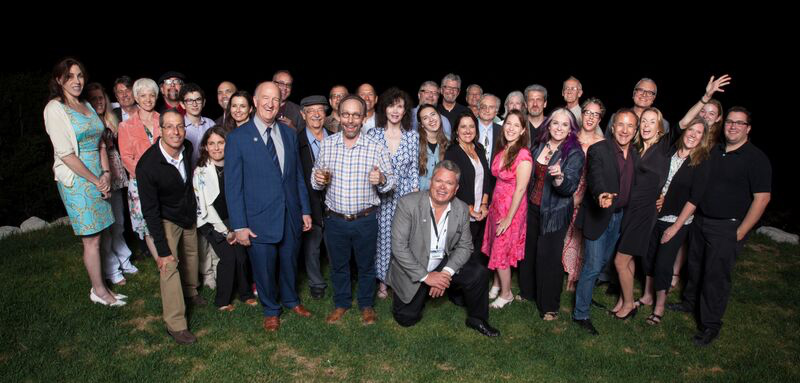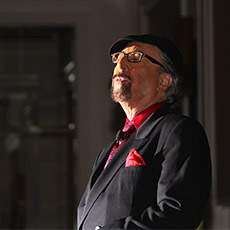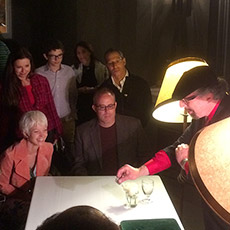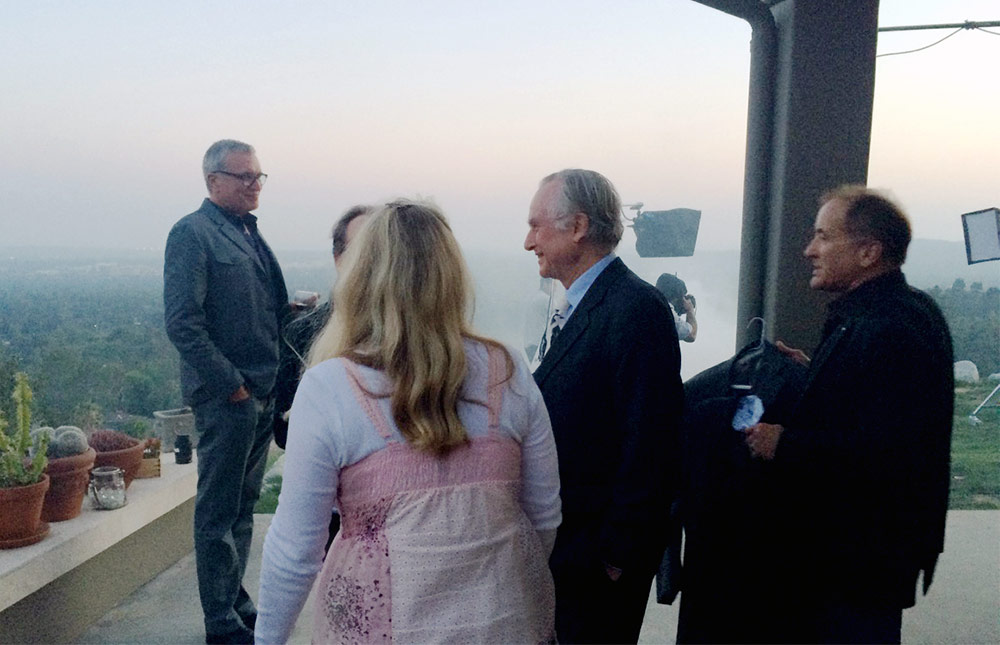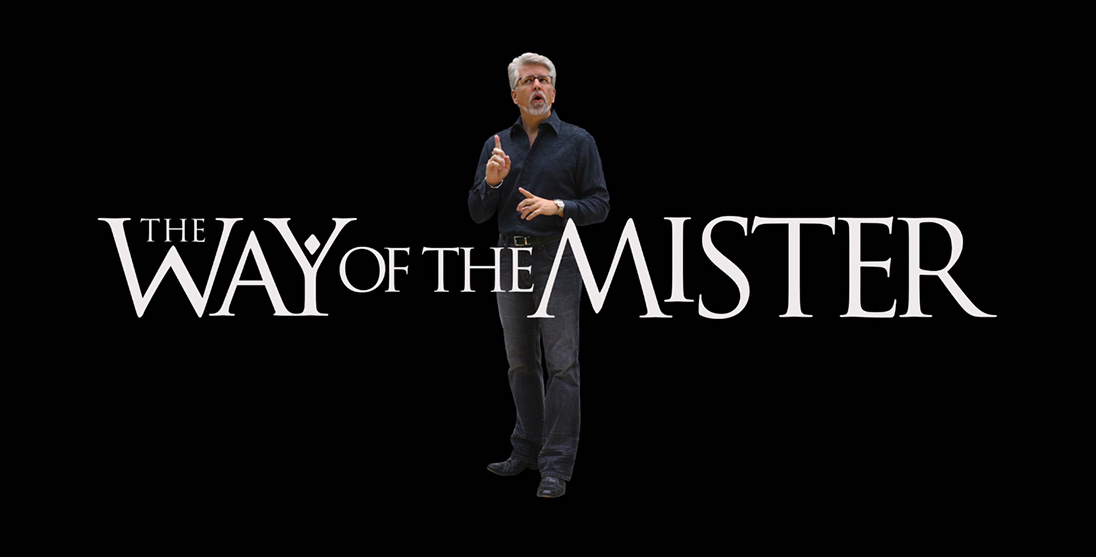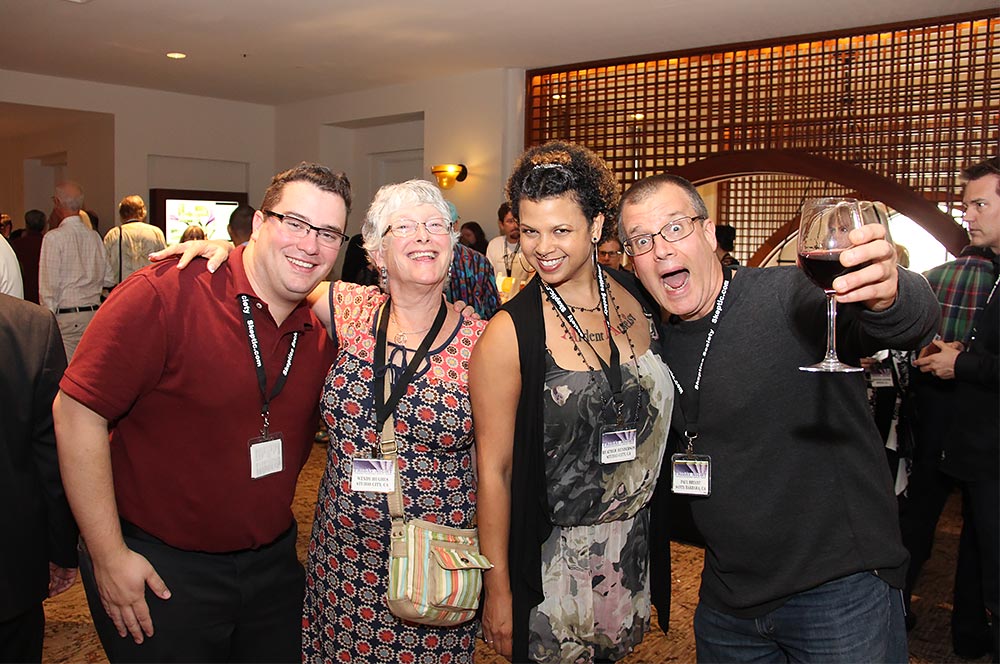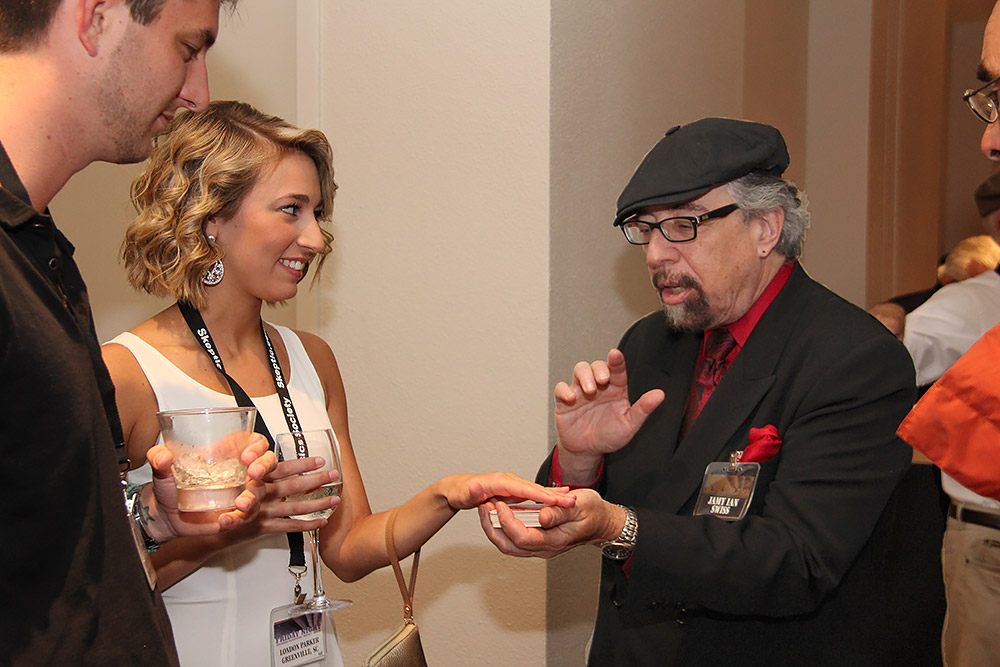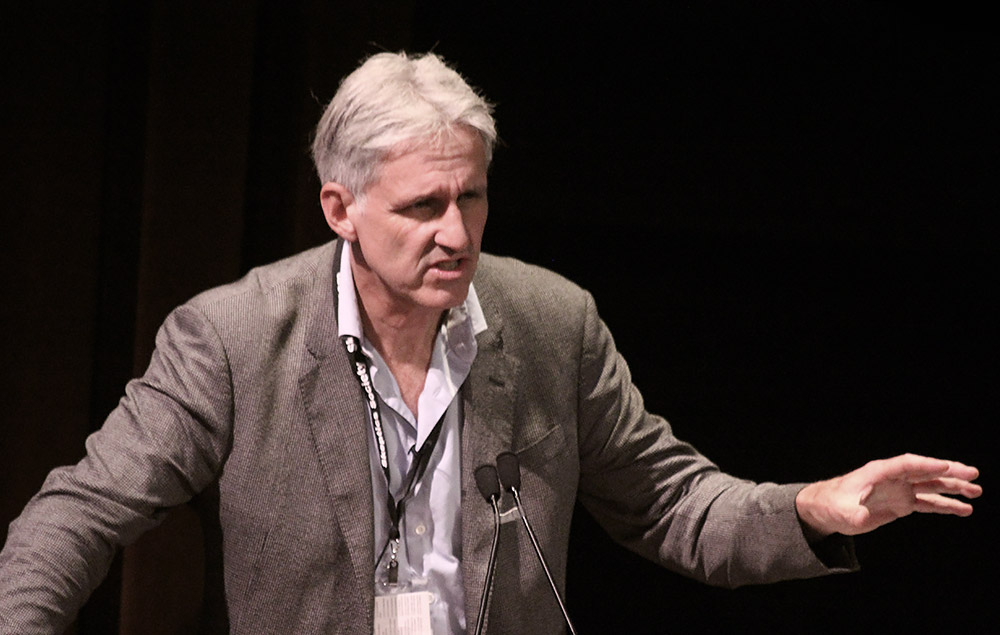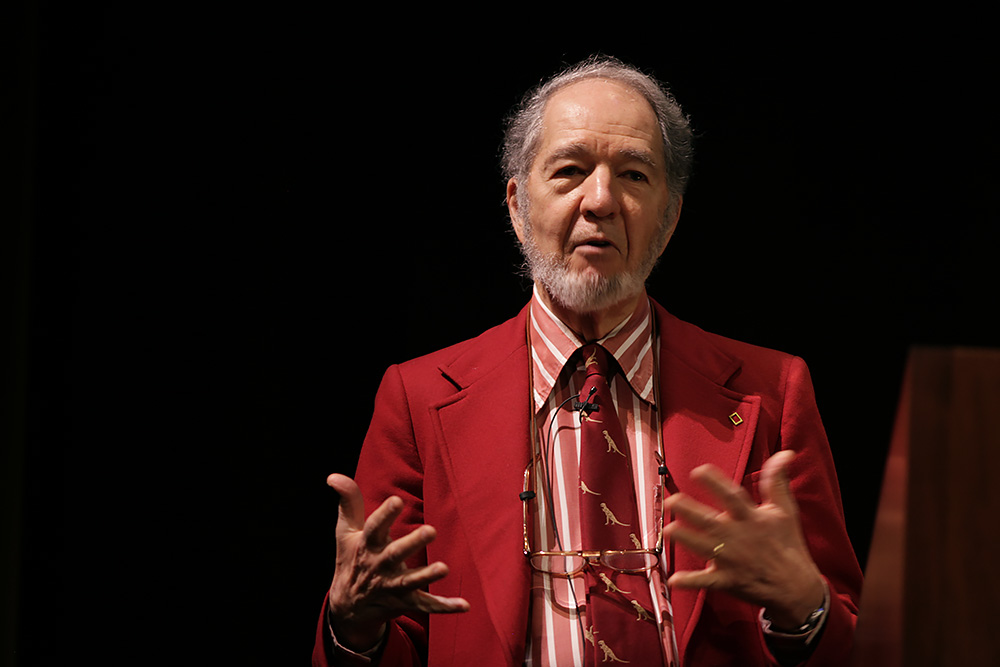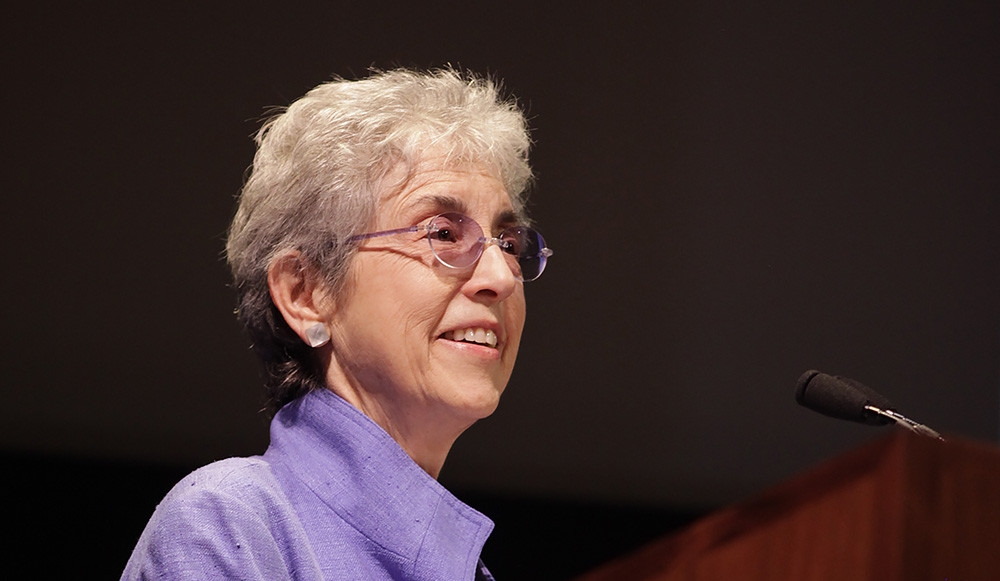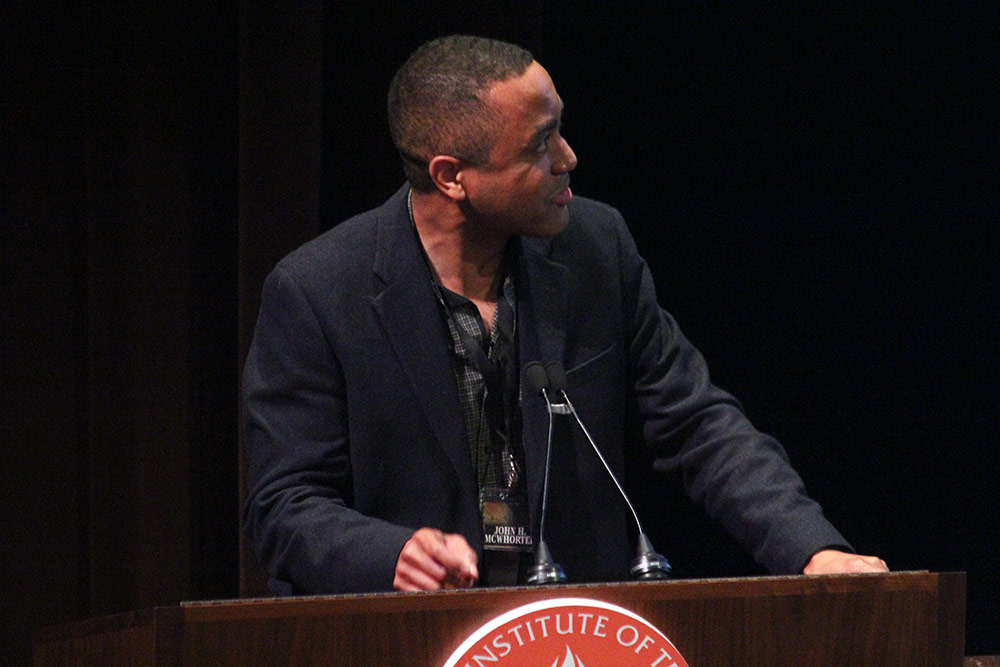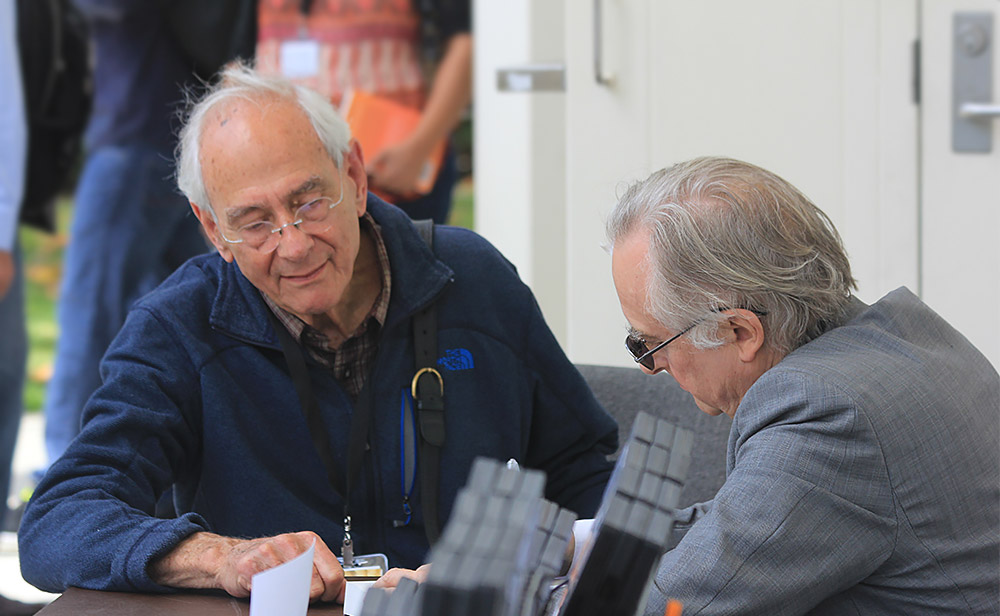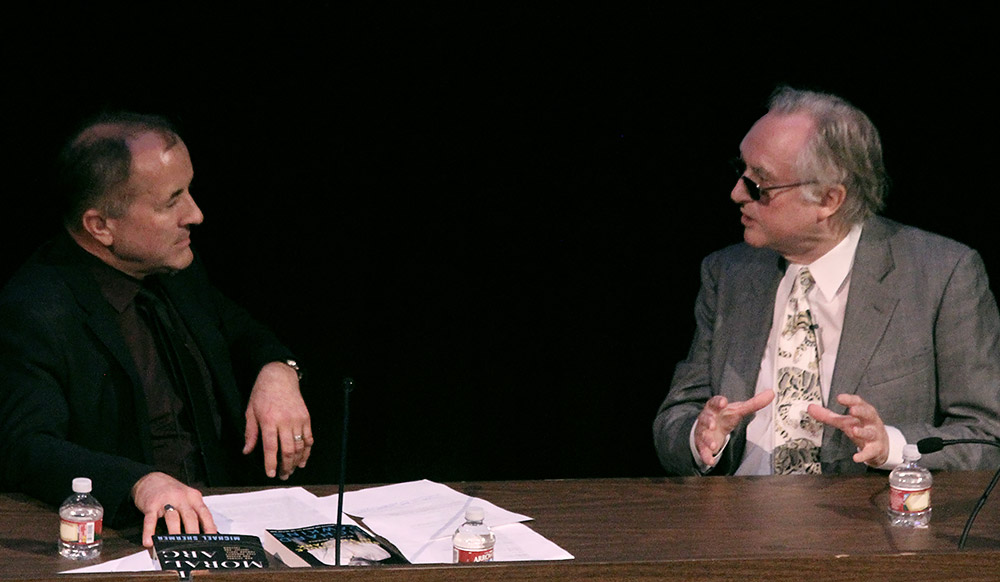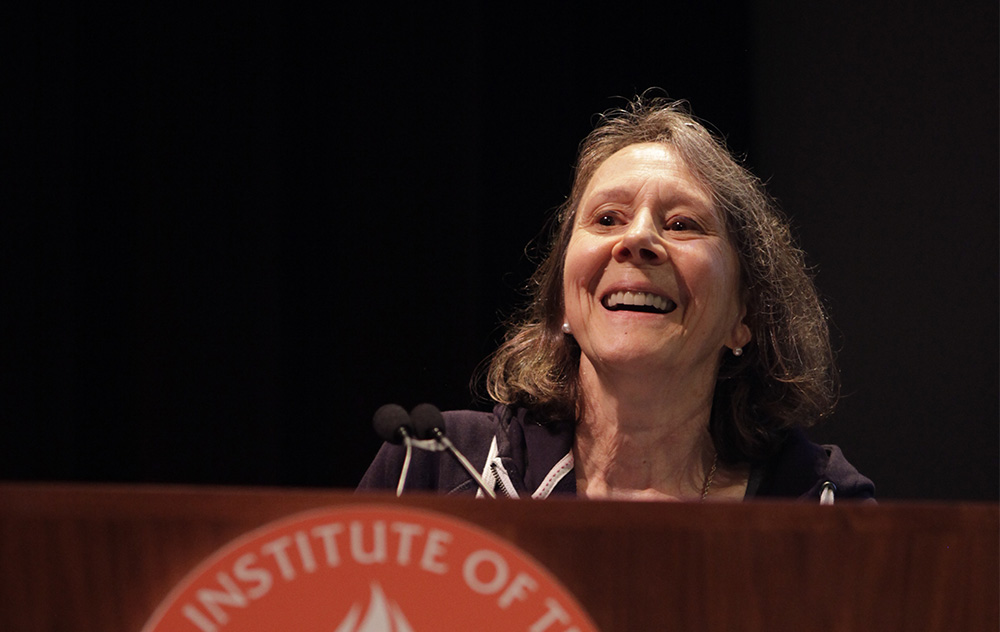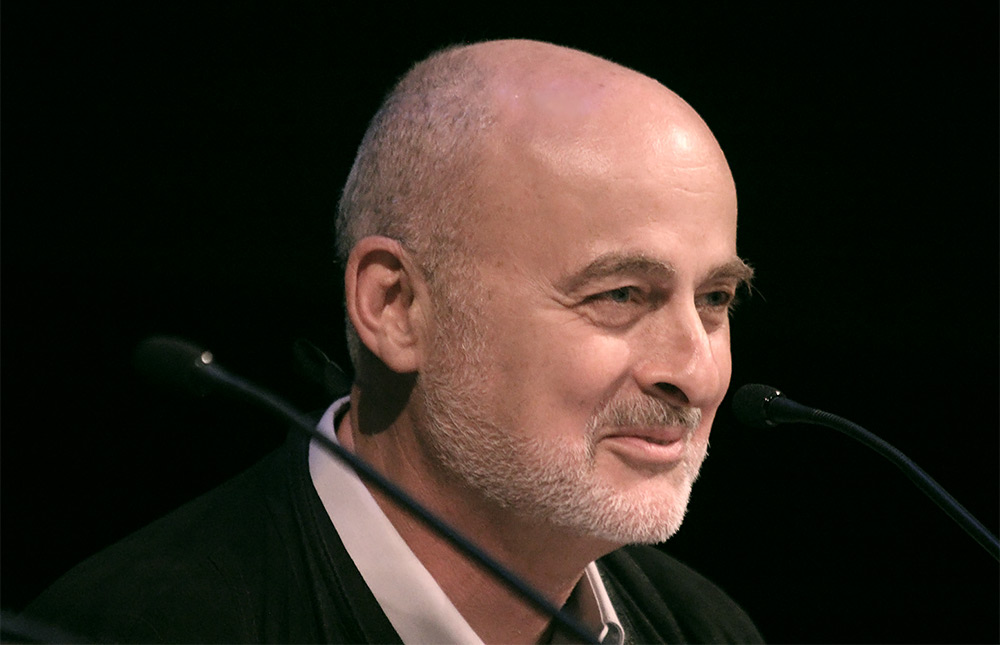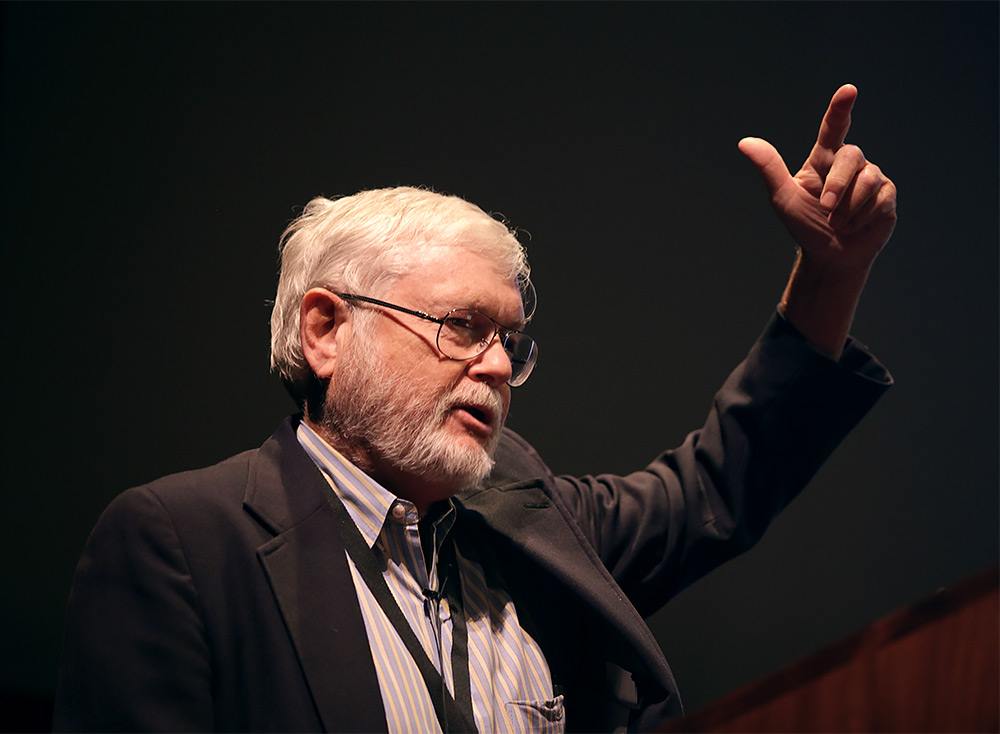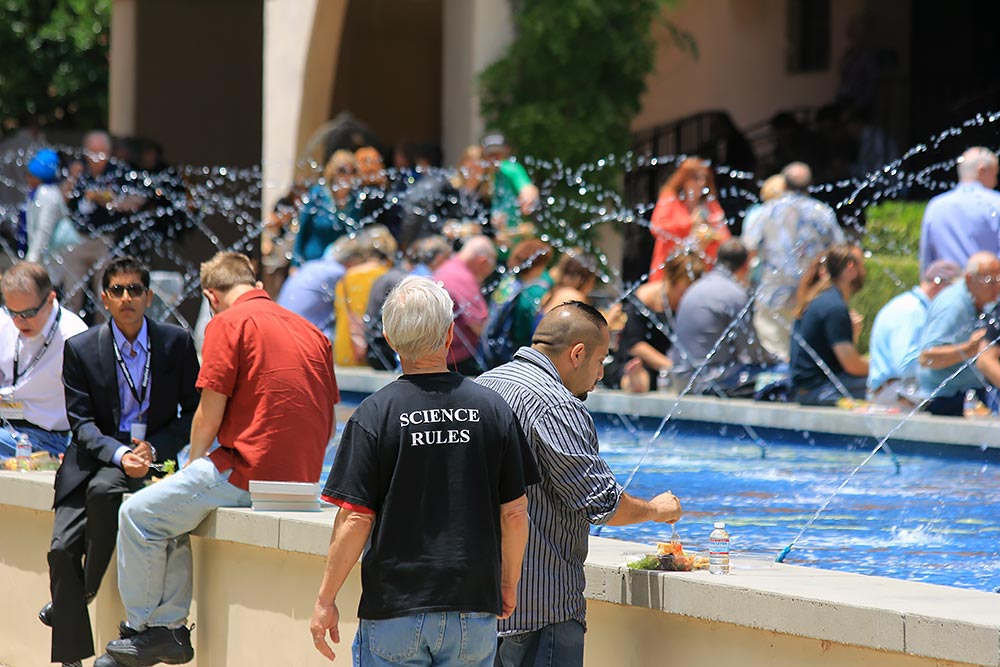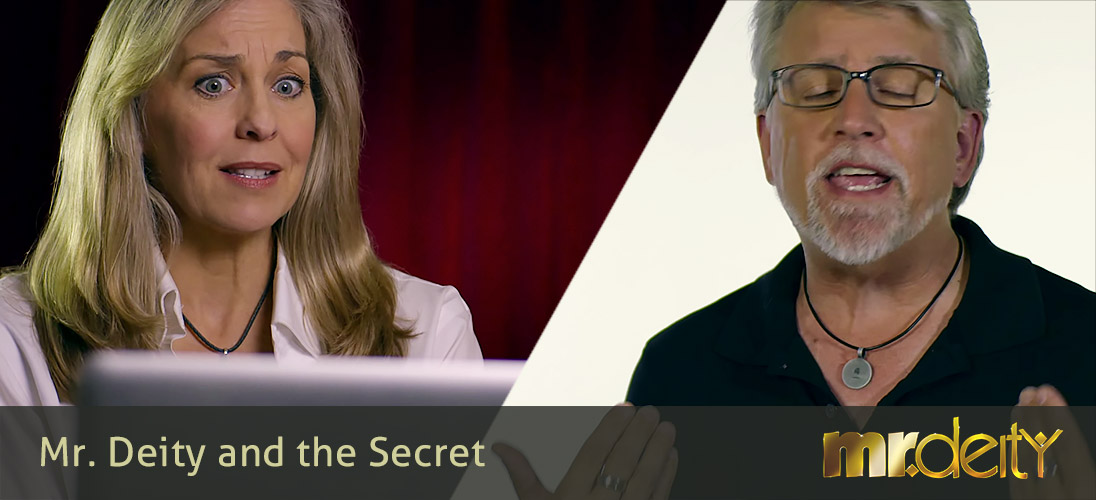eSkeptic for October 10, 2015
In this week’s eSkeptic:
SCIENTIFIC EXPLORATION
Sunny weather predicted for whale watching this weekend!
- Join us for a 2–2.5 hour cruise,
- Explore the Aquarium of the Pacific,
- Hear Dr. Prothero lecture on “The Sixth Extinction in the Oceans,”
- Hear Dr. Shermer lecture on “Why Darwin Matters: Evolution, Creationism, and Ben Carson’s Scientific Illiteracy.”
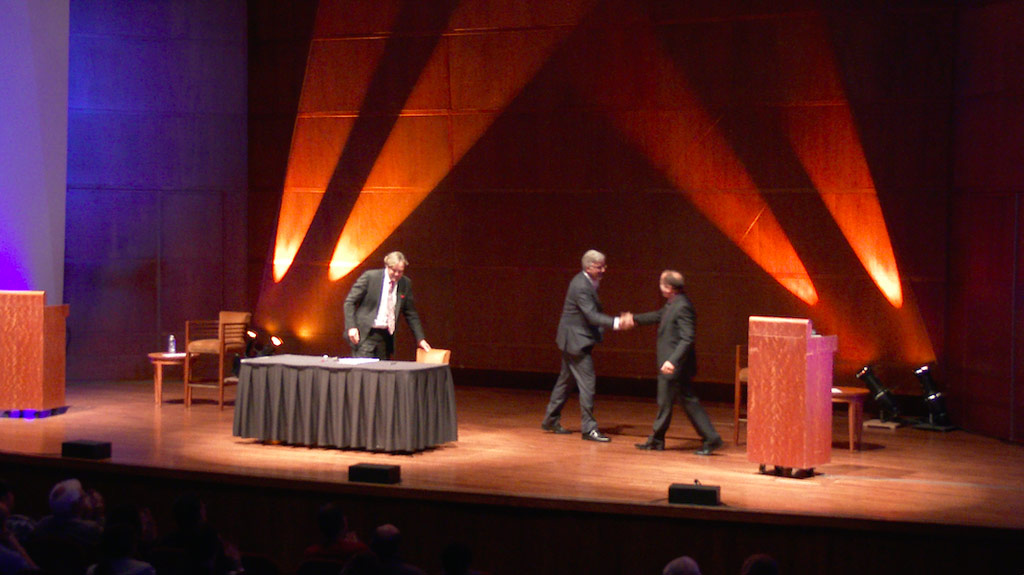
About this week’s eSkeptic
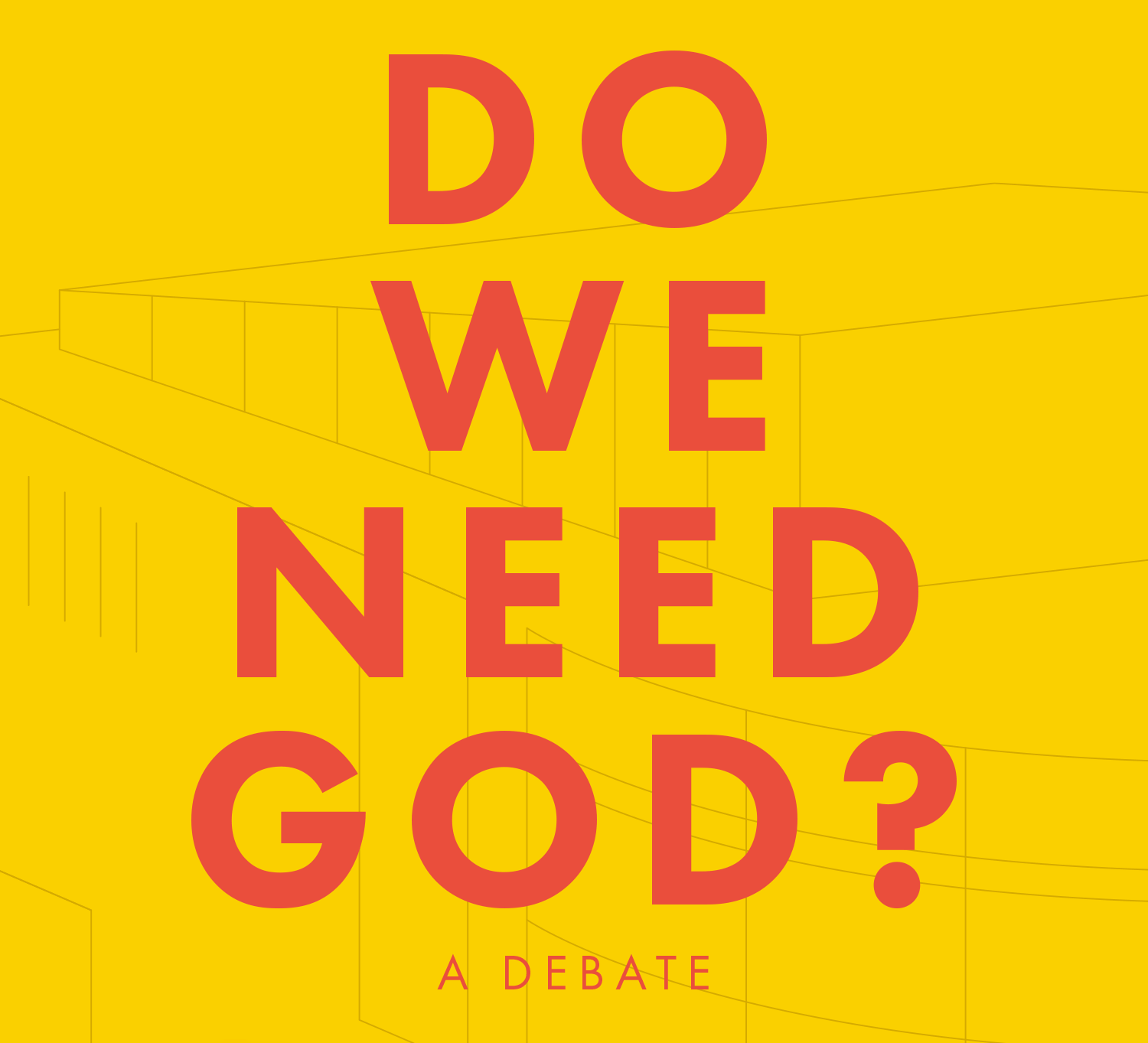
On September 30, 2015, Michael Shermer and Larry Taunton debated the question “Do We Need God?”. The debate will eventually be posted online for viewing. In the meantime, in this week’s eSkeptic, we present Michael Shermer’s notes for the debate. Michael did not have time to cover the morality of the New Testament (compared to the Old) but we include his notes here nonetheless in case readers would like to use this material. Much of it comes from his book The Moral Arc.
The Battle in Seattle
Do We Need God?
by Michael Shermer
Do We Need God? No. Thank you. Okay, seriously, there are at least 10 reasons why we do not need God…
1. Ben Carson, or Religious Ignorance. Only belief in God could infect a brain as smart as the renowned neurosurgeon and prominent Presidential candidate Ben Carson to mangle the Big Bang theory and preposterously propose that Darwin’s theory of evolution is a trick of Satan.
2. Kim Davis, or Religious Bigotry. Only belief in God could convince an otherwise decent and loyal civil servant that her personal interpretation of the Bible trumps the U.S. Constitution, the Supreme Court of the United States, and the law of the land.
3. ISIS, Al Qaeda, & Islamism, or Religious Extremism. Only belief in God could lead large groups of people to believe that the most moral thing they can do is to murder people in the most gruesome manner imaginable—beheading—anyone who does not believe their barbaric and primitive religious tenets, such as capital punishment for apostasy.
4. Crusades, Witch Hunts, and Wars, or Religious Violence. Only belief in God could lie behind these catastrophic moral blunders: the Crusades (the People’s Crusade, the Northern Crusade, the Albigensian Crusade, and Crusades One through Nine); the Inquisitions (Spanish, Portuguese, and Roman); witch hunts (the execution of tens of thousands of people, mostly women); Christian conquistadors (extermination of native peoples by the millions); the interminable European Wars of Religion (the Nine Years War, the Thirty Years War, the Eighty Years War, the French Wars of Religion, the Wars of the Three Kingdoms, the English Civil War); the American Civil War (in which Northern Christians and Southern Christians slaughtered one another over the issue of slavery); and the First World War (in which German Christians fought French, British, and American Christians, all of whom believed that God was on their side—German soldiers, for example, had Gott mit uns—God with us—embossed on their belt buckles.) And that’s just in the Western world. There are the seemingly endless religious conflicts in Indonesia, India, Pakistan, Afghanistan, Iraq, Sudan, numerous countries in Africa, and of course Islamist terrorism.
5. Slavery and Civil Rights, or Religious Intolerance. Only belief in God kept the slave trade alive through religious and biblical arguments that blacks were inferior to whites, that slavery was good for black souls, that slavery gave blacks civilization, that blacks liked being enslaved, or, later, that blacks should not have the same civil rights as whites (such as equal treatment under the law—interracial marriage was illegal until 1967) simply because the pigment in their skin was darker.
6. Women’s Rights, or Religious Suppression. Only belief in God would lead otherwise good men to think that women should not have the same rights as they, which is what almost all Christians believed until the women’s rights movement of the 20th century (and many today still believe in wanting to control women’s sexuality and reproductive choices). Like the meddling Puritanical control freaks of the Early Modern Period there are still men today who think they should decide what women do with their vagina. Women flourish in societies that are either not very religious or those, like the United States, that have separation of church and state; i.e., less religion equals more rights and equality.
7. Gay Rights, or Religious Moralizing. Only belief in God could cause otherwise decent Christians to become perversely obsessed with what other people do with their genitals in the privacy of their bedrooms, and that if these people don’t insert their genitals into the biblically correct orifice, or if genitals are stimulated in a biblically unapproved manner, they should not have the same Constitutional rights as straights.
8. Tribalism, or Religious Xenophobia. The world’s religions are tribal and xenophobic by nature, serving to regulate moral rules within the community but not seeking to embrace humanity outside their circle. Religion, by definition, forms an identity of those like us, in sharp distinction from those not us, those heathens, those unbelievers. Most religions were pulled into the modern Enlightenment with their fingernails dug into the past. Change in religious beliefs and practices, when it happens at all, is slow and cumbersome, and it is almost always in response to the church or its leaders facing outside political or cultural forces (slavery, civil rights, women’s rights, gay rights).
9. Absolutism, or Religious Dogmatism. The foundation of the belief in an Absolute Morality is the belief in an Absolute Religion grounded in the One True God. This inexorably leads to the conclusion that anyone who believes differently has departed from The Truth and thus is unprotected by our moral obligations; even more, they must be forced to see the Way, the Truth, and the Light. Unlike science, religion has no systematic process and no empirical method to employ to determine the verisimilitude of its claims and beliefs, much less right and wrong, so it can never self-correct its mistakes, which are legion.
10. Preposterous Moral Rules, or Religious Immorality. The morality of holy books—most notably the Bible—is not the morality any of us would wish to live by. Put into historical context, the Bible’s moral prescriptions were for another time for another people and have little relevance for us today. In order to make the Bible relevant, believers must pick and choose biblical passages that suit their needs; thus the game of cherry picking from the Bible generally works to the advantage of the cherry pickers.
In the Old Testament, for example, the believer might find guidance in Deuteronomy 5:17, which says, “Thou shalt not kill”; or in Exodus 22:21: “You shall not wrong a stranger or oppress him, for you were strangers in the land of Egypt.” But the handful of positive moral commands are desultory and scattered among a sea of violent stories of murder, rape, torture, slavery, and all manner of violence, such as occurs in Deuteronomy 20:10–18, in which Yahweh instructs the Israelites on the precise etiquette of conquering another tribe:
When you draw near to a city to fight against it, offer terms of peace to it. And if its answer to you is peace and it opens to you, then all the people who are found in it shall do forced labor for you and shall serve you. But if it makes no peace with you, but makes war against you, then you shall besiege it; and when the LORD your God gives it into your hand you shall put all its males to the sword, but the women and the little ones, the cattle, and everything else in the city, all its spoil, you shall take as booty for yourselves….
Nice. Or consider what Moses did with an army of 12,000 troops Numbers, 31:7–12:
They warred against Mid′ian, as the Lord commanded Moses, and slew every male. They slew the kings of Mid′ian … And the people of Israel took captive the women of Mid′ian and their little ones; and they took as booty all their cattle, their flocks, and all their goods. All their cities in the places where they dwelt, and all their encampments, they burned with fire, and took all the spoil and all the booty, both of man and of beast. Then they brought the captives and the booty and the spoil to Moses.
That sounds like a good days pillaging, but when the troops got back, Moses was furious. “What do you mean you didn’t kill the women?” he asked, exasperated, since it was apparently the women who had enticed the Israelites to be unfaithful with another God. Moses then ordered them to kill all the women who had slept with a man. “But save for yourselves every girl who has never slept with a man,” he commanded, predictably, at which point one can imagine the thirty-two thousand virgins who’d been taken captive rolling their eyes and saying, “Oh, God told you to do that, did he? Right.” Was the instruction to “keep the virgins for yourselves” what God had in mind by the word “love” in the “love thy neighbor” command? I think not.
Of course, the Israelites knew exactly what God meant (this is the advantage of writing scripture yourself—you get to say what God meant) and they acted accordingly, fighting for the survival of their people. With a vengeance.
What about the New Testament? The angry, vengeful God Yahweh of the Old Testament, Christians claim, was displaced by the kinder, gentler New Testament God in the form of meek and mild Jesus, who two millennia ago introduced a new and improved moral code. Turning the other cheek, loving one’s enemies, forgiving sinners, and giving to the poor sounds like a great leap forward in moral progress.
Yet, nowhere in the New Testament does Jesus revoke God’s ludicrous laws. In fact, quite the opposite (Matthew 5:17–30 passim): “Think not that I am come to destroy the law, or the prophets: I am not come to destroy, but to fulfill.” Jesus doesn’t even try to edit the commandments or soften them up: “Whosoever therefore shall break one of these least commandments, and shall teach men so, he shall be called the least in the kingdom of heaven.” In fact, if anything, Jesus’ morality is even more draconian than that of the Old Testament: “Ye have heard that it was said by them of old time, Thou shalt not kill; and whosoever shall kill shall be in danger of the judgment: But I say unto you, That whosoever is angry with his brother without a cause shall be in danger of the judgment.”
In other words, even thinking about killing someone is a capital offense. In fact, Jesus elevated thought crimes to an Orwellian new level (Matthew 9:28–29): “Ye have heard it was said by them of old time, Though shalt not commit adultery: But I say unto you, That whosoever looketh on a woman to lust after her hath committed adultery with her already in his heart.” And if you don’t think you can control your sexual impulses Jesus has a practical solution: “If thy right eye offend thee, pluck it out, and cast it from thee: for it is profitable for thee that one of thy members should perish, and not that thy whole body should be cast into hell.” May I see a show of hands of those who agree with this moral precept?
As for Jesus’s own family values, he never married, never had children, and he turned away his own mother time and again. For example, at a wedding feast Jesus says to her (John 2:4): “Woman, what have I to do with you?” One biblical anecdote recounts the time that Mary waited patiently off to the side for Jesus to finish speaking so that she could have a moment with him, but Jesus told his disciples, “Send her away, you are my family now,” adding (Luke 14:26): “Whoever comes to me and does not hate father and mother, wife and children, brothers and sisters, yes, and even life itself, cannot be my disciple.”
Charming. This is what cultists do when they separate followers from their families in order to control both their thoughts and their actions, as when Jesus calls to his flock to follow him or else (John 15:4–7): “Abide in me as I abide in you. Just as the branch cannot bear fruit by itself unless it abides in the vine, neither can you unless you abide in me. I am the vine, you are the branches. Those who abide in me and I in them bear much fruit, because apart from me you can do nothing. Whoever does not abide in me is thrown away like a branch and withers; such branches are gathered, thrown into the fire, and burned.” But if a believer abandons his family and gives away his belongings (Mark 10:30), “he shall receive an hundredfold now in this time, houses, and brethren, and sisters, and mothers, and children, and lands.” In other passages Jesus also sounds like the tribal warlords of the Old Testament:
Do not think that I have come to bring peace to the earth; I have not come to bring peace, but a sword. For I have come to set a man against his father, and a daughter against her mother, and a daughter-in-law against her mother-in-law; and one’s foes will be members of one’s own household. Whoever loves father or mother more than me is not worthy of me; and whoever loves son or daughter more than me is not worthy of me; and whoever does not take up the cross and follow me is not worthy of me. (Matthew 10:34–39)
Even sincere Christians cannot agree on Jesus’ morality and the moral codes in the New Testament, holding legitimate differences of opinion on a number of moral issues that remain unresolved based on biblical scripture alone. These include dietary restrictions and the use of alcohol, tobacco, and caffeine; masturbation, pre-marital sex, contraception, and abortion; marriage, divorce, and sexuality; the role of women; capital punishment and voluntary euthanasia; gambling and other vices; international and civil wars; and many other matters of contention that were nowhere in sight when the Bible was written, such as stem-cell research, gay marriage, and the like. Indeed, the fact that Christians, as a community, keep arguing over their own contemporary question “WWJD” (What Would Jesus Do?) is evidence that the New Testament is silent on the answer.
Middle Statement
Empirically speaking we can see why we don’t need God:
- Millions of Americans have no belief in God whatsoever, and 10s of millions have no religion and they’re doing just fine. There are no measures that believers are more moral than non-believers.
- Tens of millions of people in many Northern European countries such as Denmark, Sweden, Norway, Belgium, Holland, and Germany have no belief in God or religion and not only are they doing just fine, by any measure they are far healthier societies than the most religious nation in the Western world: America.
- Gregory S. Paul study: 17 first-world prosperous democracies in the Successful Societies Scale database (Australia, Austria, Canada, Denmark, England, France, Germany, Holland, Ireland, Italy, Japan, New Zealand, Norway, Spain, Sweden, Switzerland, United States). 25 indicators of social health and well being 1–9 scale: homicides, suicides, incarceration, life expectancy, gonorrhea and syphilis infections, abortions, teen births, fertility, marriage, divorce, alcohol consumption, life satisfaction, corruption rates, adjusted per capita income, income inequality, poverty, unemployment.
- Religiosity 1–10 scale: belief in God, biblical literalism, church attendance, prayer frequency, belief in an afterlife, and belief in heaven and hell.
- U.S. most religious by far & highest rates of homicides, suicides, incarceration rates, STD rates, teen pregnancy rates, abortion rates, divorce rates, income inequality rates & poverty rates.
- If belief in God & religion is such a powerful force for societal health, then why is America—the most religious nation in the Western world—also the unhealthiest on all of these social measures? If religion makes people more moral, then why is America seemingly so immoral in its lack of concern for its poorest, most troubled citizens, notably its children?
Concluding Statement (From Chapter 4 of The Moral Arc)
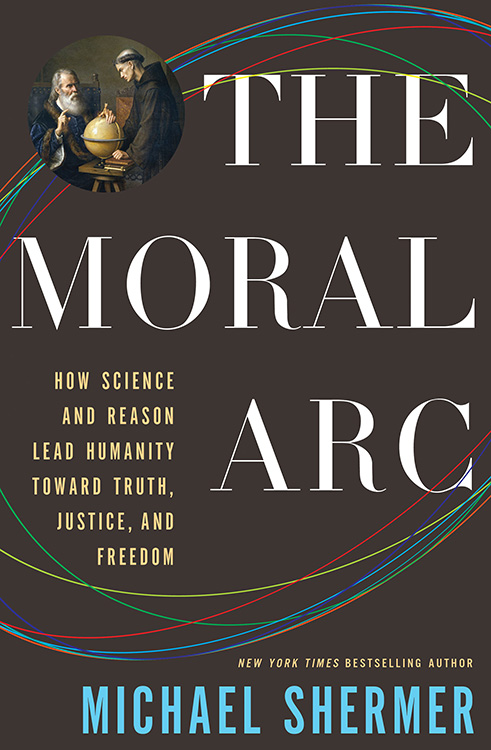
Learn about the book
Order the harcover
Order the Kindle Edition
Order the Apple iBook
Order the Apple Audiobook
Order the Unabridged CD
The Bible is one of the most immoral works in all literature. Woven throughout begats and chronicles, laws and customs, is a narrative of accounts written by, and about, a bunch of Middle Eastern tribal warlords who constantly fight over land and women, with the victors taking dominion over both. It features a jealous and vengeful God named Yahweh who decides to punish women for all eternity with the often intolerable pain of childbirth, and further condemns them to be little more than beasts of burden and sex slaves for the victorious warlords.
Why were women to be chastened this way? Why did they deserve an eternity of misery and submission? It was all for that one terrible sin, the first crime ever recorded in the history of humanity—a thought crime no less—when that audacious autodidact Eve dared to educate herself by partaking of the fruit of the tree of the knowledge of good and evil. Worse, she inveigled the first man—the unsuspecting Adam—to join her in choosing knowledge over ignorance. For the appalling crime of hearkening unto the voice of his wife, Yahweh condemned Adam to toil in thorn and thistle-infested fields, and further condemned him to death, to return to the dust from whence he came.
Yahweh then cast his first two delinquent children out of paradise, setting a Cherubim and a flaming sword at the entrance to be certain that they could never return. Then, in one of the many foul moods he was wont to fall into, Yahweh committed an epic hemoclysm of genocidal proportions by killing every sentient being on Earth—including unsuspecting adults, innocent children, and all the land animals—in a massive flood. In order to repopulate the planet after he decimated it of all life save those spared in the ark, Yahweh commanded the survivors—numerous times—to “be fruitful and multiply,” and rewarded his favorite warlords with as many wives as they desired. Thus was born the practice of polygamy and the keeping of harems, fully embraced and endorsed—along with slavery—in the so-called “good book.”
As an exercise in moral casuistry, this perspective-taking question comes to mind: did anyone ask the women how they felt about this arrangement? What about the millions of people living in other parts of the world who had never heard of Yahweh? What about the animals and the innocent children who drowned in the flood? What did they do to deserve such a final solution to Yahweh’s anger problem?
Many Christians say that they get their morality from the Bible, but this cannot be true because as holy books go the Bible is possibly the most unhelpful guide ever written for determining right from wrong. It’s chockfull of bizarre stories about dysfunctional families, advice about how to beat your slaves, how to kill your headstrong kids, how to sell your virgin daughters, and other clearly outdated practices that most cultures gave up centuries ago. It’s time we all gave it up now. Won’t you join me? ![]()
DIGITAL BACK ISSUES RECENTLY ADDED
Issue 1.4: Witches, Heretics & Scientists
In this issue: The Price of Intolerance: Today’s Heretic, Tomorrow’s Saint; Spirits, Witches, and Science: Why the Rise of Science Encouraged Belief in the Supernatural in 17th-Century England; The Ideological Immune System: Resistance to New Ideas in Science; Skeptical News: Houdini; Millennium Watch; Newton; Haunted Hearing; Rational Sobriety; Scope of Skepticism; UFO Support Group; Psychics Fail; Skeptic’s Predictions; Skeptics TV; Tunguska; AIDS Dispute; A.R.E. You Sure? The Edgar Cayce Foundation Responds to a Skeptical Critique; Can Religion Be Rational?; The Day the Earth Moved: The Psychology of Resistance to the Heretical—Science of Copernicus; Jonestown: A CIA Medical Experiment?; On the Wild Side; Clouds of Secrecy: The Army’s Germ Warfare Tests; Over Populated Areas; Missing Pieces; How To Investigate Ghosts; UFOs,Psychics, and Other Mysteries; E.T.; Top Ten Science Frauds; Ten Great Unanswered Questions of Science; Galileo; Newton; Weird Wonders: It’s Baaack: The Nature-Nurture Debate Again; Exons, Introns and Talking Genes: The Science Behind the Human Genome Project; Bionomics; The Inevitability of Capitalism; Sociobiology and the Preemption of Social Science; The Road to Equality: Evolution and Social Reality by Paul McDowell; Discovery and Creation—The Creators: A History of Heroes of the Imagination; The Discoverers: A History of Man’s Search to Know Himself; The Discoverers: An Illustrated History of Man’s Search to Know Himself
Issue 4.2: Evolutionary Ethics
In this issue: Interview: Living Within Limits & Limits on Living: Garrett Hardin on Ecology, Economy, and Ethics; Toward a Science of Morality; In Our Own Self Image: The Evolution of Morality, Deception, and Religion; Prospects for Existence: Morality and Genetic Engineering; Plants, Property & People: Should Indigenous Peoples Be Compensated For Their Medicinal Plant Knowledge?; The Secular Sphinx: The Riddle of Ethics Without Religion; Why Creationists Fear Evolution: An Introduction to Bryan’s Last Speech; The Most Powerful Argument Against Evolution Ever Made: The Undelivered Speech to the Jury in the Scopes’ Trial; Save Fuel, the Nation, the Environment, Money … Sure; Whose is the Higher Superstition? Reflections on the Need for Skeptical Open-Mindedness in the Days to Come; Cosmythology: Was the Universe Designed to Produce Us?; The Question All Skeptics are Asking: What Was Adam’s IQ?; Skeptics Walk on Fire For Bill Nye “The Science Guy”; The Mysterious (and Profitable) Origins of Man; Millennium Mystery or Misinformation?; Patterson Bigfoot Hoax…
WHERE CAN I READ DIGITAL BACK ISSUES?
Your purchase of a back issue from Pocketmags.com can be synchronized and read on any of the following platforms for which we have a Skeptic-branded app: iOS, Android and Kindle Fire.
There is also a PocketMags-branded app for these platforms: iOS, Android, Windows 8, Windows Phone, Kindle Fire.
You can also read digital back issues on the PocketMags.com website on your PC or Mac. Just remember to login with your Pocketmags username and password. Got questions? Find answers.


The Dr. Bo Show
SKEPTICALITY EPISODE 261
Derek chats with Bo Bennett, popular author, motivational speaker, entrepreneur, and co-host of The Humanist Hour, along with several other critical thought podcasts and radio shows. Find out more about Bo’s journey into the world of critical thought, skepticism, humanism and activism, in this episode of Skepticality—The Official Podcast of Skeptic Magazine.
eSkeptic for September 30, 2015
In this week’s eSkeptic:
OUR NEXT SCIENTIFIC EXPLORATION TOUR
Learn about the future of life on our blue planet
Join us October 11, 2015 from 9am–6pm for a 2-hour cruise out of Long Beach Harbor, led by experienced and knowledgeable Aquarium of the Pacific educators to look for whales, dolphins, seals, sea lions, and other marine life. Hear Dr. Donald R. Prothero lecture on “The Sixth Extinction in the Oceans” about the future of life on the Blue Planet. Explore incredible exhibits of marine life at the Aquarium of the Pacific. See fish and other marine life from all over the Pacific, as well as a shark lagoon, penguins, seals, sea lions, sea otters, a pool where you can pet a ray, an aviary where you can feed lorikeets, and see a life-sized replica of a blue whale. We hope to see you all for a wonderful day by the ocean!
About this week’s eSkeptic
In this week’s eSkeptic, Dave E. Matson critiques Douglas J. Navarick’s article “The ‘God’ Construct: A Testable Hypothesis for Unifying Science and Theology,” which appeared in Skeptic magazine 20.3 (2015). If you havent yet read that article, you may want to read it first, then come back here and read Matson’s challenge (below), followed by Navarick’s response.
Debating The “God” Construct
by Dave E. Matson
Douglas Navarick has obviously given some thought to “The ‘God’ Construct,” but the howlers I encountered robbed it of any credibility. For example: “Abiogenesis must be considered speculative considering that every cell ever observed has come from another living cell.”
I have yet to hear anyone in the science of abiogenesis claim that a living cell could appear naturally from scratch without benefit of prior cells! Given the complexity of even the simplest prokaryotes, such a claim would be preposterous. The goal of abiogenists is to recover the long pathway that eventually led to the first cells. If that is no longer possible, then the hope is to discover workable pathways. Navarick’s demand that abiogenists produce a living cell from scratch, comparing that to the failure to find compelling evidence for ESP, demonstrates a profound ignorance of abiogenesis. Yes, cells come from cells even as cats come from cats. However, the conclusion that cats cannot credibly come from non-cats (based on the observation that every single cat studied traces to a prior cat) is absurd in the light of evolution. Here we have a perfect analogy to Navarick’s attempt to discredit abiogenesis! Abiogenists will never witness a cell arising naturally from scratch; we will never observe evolution producing a cat from scratch. Neither predicts as much. Either path is a long, winding story!
Navarick derides abiogenesis for lacking a mechanism. In fact, there are plausible mechanisms now being sketched out. One can hardly expect all the bugs to be ironed out at this early stage; it’s a difficult field. Plausible mechanisms, complete with problems, are all that any science has to work with in exploring new areas. Do not confuse plausible mechanisms (with their inevitable problems) with “no mechanism in sight.”
The reason for keeping a supernatural deity out of science is that God is an ad hoc story that is compatible with everything and, therefore, explains nothing! Opening the door to supernatural “explanations” of any kind, which by definition cannot be investigated by the laws of nature—the only tool box we have—would turn science into a debating society unable to settle anything. We need not be dogmatic. If we observed a swimming pool that froze solid after the last person left, and became usable the instant someone jumped in, we might reasonably call it a “supernatural” event! However, we can’t even assume that such an event had a cause (let alone an intelligent, living cause) since that falls back on natural principles that might not apply to a supernatural event. Even if a supernatural event could somehow be certified, it could never be a part of any scientific explanation. It would forever be an isolated, odd-man-out fact sitting in a corner by itself. Any demand that scientific explanation include the supernatural is, therefore, totally wrong-headed.
Navarick’s minimalist construct of God is “A force that operates through and independently of natural laws.” Natural law is our best verification, within an appropriate range of measurement, as to what nature actually does. It is supported by countless laboratory experiments that are often done with unimaginable accuracy, and many experiments are conducted under extreme conditions. These experiments and measurements are done by highly trained observers who follow each others’ work in scientific journals, who are inclined to check the more interesting results by duplicating the experiments. To claim that a force exists that is not bound by natural law is to throw out the best attested facts in the world in favor of rank speculation! If Navarick’s unclear statement does not advocate the occasional suspension of natural law, then he must shear God of his super-powers. God then becomes another fixture in the natural world.
In reply to Stenger’s statement that there is no reason to assume that life could not have come from non-life, Navarick adds “But there is also no reason to assume that life could not have come from a supernatural source.” With every bit as much evidence, namely zero, we could have said “There is no reason to assume that life could not have come from a hair-brained Easter Bunny with magical powers!” Logically possible, I suppose, along with Bertrand Russell’s orbiting teapot, but hardly credible. Yet, if the Easter Bunny idea had an army of apologists refining it for two thousand years, if it were a part of everyone’s upbringing, it would have been the respectable story and God the silly one. In that sense the supernatural is not a legitimate alternative; it commands no more evidence than our hair-brained Easter Bunny. Countless apologetic works—complete with the usual errors, plus huge amounts of wishful thinking and cultural acceptance—do not establish scientific credibility. Presently, after we subtract the wishful thinking, and the naive thinking, scientific evidence for God is no better than that for a hair-brained Easter Bunny who possesses magical powers.
The “assumption” that abiogenesis will eventually show how life emerged from non-life should be seen as a practical conclusion rather than a philosophical dictum. Scientists who seek a career in abiogenesis do so precisely because the evidence is so suggestive, virtually begging for scientific explanations to connect the dots. These guys are not running on dogmatic gas despite some careless statements! They are motivated by evidence, evidence strong enough to risk a career on.
In sum, current problems in abiogenesis cannot be taken as support for a supernatural “alternative.” At present, to the extent that it is even a coherent concept, the supernatural is not a credible alternative at all. Evidentially—as in “zip”—it is on par with our hair-brained Easter Bunny sporting magical powers. Insightful theologians will often admit that God must be taken on faith, and science can’t run on that kind of faith. Therefore, trying to unify science and theology is like trying to unify apples and oranges. If they are squeezed together to such an extent that you can no longer tell the difference, then we no longer have apples and oranges. We have a mess! ![]()
About the Author
Dave E. Matson, a navy veteran and former programmer for Hughes Aircraft Company, graduated from San Diego State University in mathematics, his enthusiasm for the sciences almost supplying enough credits for an additional degree. Another major interest took in the study of Christian apologetics and creationist arguments which led to various informal publications scattered about the Internet, a study that gave him some feeling for epistemology (how we know). In recent years a continuing study of the sciences (introductory university textbooks—fat, serious, and still fun) with morning tea went hand in hand with photographing wild flowers throughout Southern California. Occasionally, Mr. Matson will drag out his ancient telescope (Celestron 5″) to view some event, usually with a few friends, and he is always good for a vigorous game of chess.
Abiogenesis: Hypothesis or Doctrine?
by Douglas J. Navarick
Matson’s objections to my article are based largely on misinterpretations of it and a gross oversimplification of the “God” construct, confusing it with stock conceptions of the supernatural and failing to recognize its potential for integrating diverse lines of research and for suggesting new insights. Listed below are my replies to Matson’s objections.
1. Complexity of chemical precursors. Matson writes, “Navarick’s demand that abiogenists produce a living cell from scratch, comparing that to the failure to find compelling evidence for ESP, demonstrates a profound ignorance of abiogenesis.” I never demanded that researchers produce a living cell from “scratch.” As shown in the second row of the table in my article, I considered evidence for the revival of dead cells. The level of chemical complexity that researchers started from was irrelevant. What mattered was creating life out of nonliving matter. The source of this misinterpretation may be that for the first row of the table, creating a living cell from chemicals, I highlighted the famous line of research beginning with the Miller-Urey experiments on producing amino acids from inorganic chemicals. However, the next row of the table, never mentioned by Matson, shows that I intended to include the broadest possible range of chemical precursors to life.
As for the ESP comparison, the evidence for ESP is arguably even stronger than that for abiogenesis. For ESP the evidence ranges from non-existent to weak (Daryl Bem’s studies: statistically questionable and many failures to replicate but something may be there) whereas for abiogenesis the evidence is, for now, simply non-existent.
I have not attempted to “discredit” abiogenesis as Matson claims. My goal has been to challenge the treatment of abiogenesis as an unassailable doctrine and return it its former status as a testable hypothesis as conceptualized by the originator of the term, Thomas H. Huxley, in a presidential address to the British Association for the Advancement of Science in 1870:
And thus the hypothesis that living matter always arises by the agency of pre-existing living matter, took definite shape; and had, henceforward, a right to be considered and a claim to be refuted, in each particular case, before the production of living matter in any other way could be admitted by careful reasoners. It will be necessary for me to refer to this hypothesis so frequently, that, to save circumlocution, I shall call it the hypothesis of Biogenesis; and I shall term the contrary doctrine—that living matter may be produced by not living matter—the hypothesis of Abiogenesis.1
Biogenesis can be refuted by a demonstration of abiogenesis. What would it take to refute abiogenesis, or at least make it seem less plausible? If no contrary evidence was possible—if 100 more years could pass without a demonstration of abiogenesis and yet it remained as believable as ever—then clearly it would be functioning as doctrines do in religions, as sources of comfort for the faithful, insulated from the harsh realities of empirical testing. It seems to be serving that function now. Calling abiogenesis a “practical conclusion rather than a philosophical dictum” does not make it any less a doctrine.
2. Building the “God” construct, one empirical step at a time. Matson writes, “the supernatural is not a legitimate alternative; it commands no more evidence than our hair-brained Easter Bunny.” My article shows how the “God” construct can be elaborated in the same way as any construct in science, by adding properties to it based on empirical evidence. The initial statement of the construct was simply,
A force that operates both through and independently of natural laws.
The evidence (not proof) against abiogenesis implies that this force is also creative; it makes things. In addition, the evidence against multiple genesis events discussed in my article implies that random processes may not have been responsible for producing the first living cell. The alternative to random in this context would be willful. So a tentative, more elaborated version of the “God” construct could be stated as follows:
A willful, creative force that operates both through and independently of natural laws.
Each property is tied to empirical observations and subject to falsification.
In addition, the “God” construct makes stronger predictions than the widely accepted, materialist alternative: The “God” construct predicts that efforts to create a living cell, no matter how sophisticated, will fail. Researchers doing these studies may be working on “plausible” ideas about the underyling mechanisms but no one could predict that any particular mechanism would work.
The same strong predictions apply to searches for shadow life on earth (weird organisms that came from a different genesis event than all known organisms) and searches for life elsewhere in the universe, including SETI, newly rejuvenated by a $100 million grant from Russian physicist and entrepreneur, Yuri Milner, for a 10-year multifaceted project called Breakthrough Listen. If after 10 years of Breakthrough Listen projects there was still no evidence for life beyond earth, how should those 10 years of negative results be interpreted, as evidence of absence or as absence of evidence?
In item 5, below, I will propose an additional property for the “God” construct based on empirical evidence, transcendence. It’s a crucial step because it serves to distinguish between chemical and non-material characterizations of life.
3. Cats from non-cats = ? Matson’s next paragraph about the cats coming from non-cats constructs bizarre analogies to make an unnecessary point. The disagreement Matson is expressing is with an argument I didn’t make. I did not suggest that the only acceptable evidence for abiogenesis would be to reconstruct the convoluted molecular pathways that supposedly led to the first living cell. Any strategy that created life out of non-life would settle the issue.
4. A multiplicity of ideas about mechanisms. Matson writes, “Navarick derides abiogenesis for lacking a mechanism.” What I actually said was that there was “no clearly established mechanism.” If, as Matson suggests, researchers have plausible ideas about underlying mechanisms, then we are not yet at the stage where there is a clearly established mechanism.
5. The next step: Is life an emergent or transcendent property of cells? Life is generally seen as an emergent property of the structures and biochemical reactions that make up living cells and not the product of any specific parts of the whole.2 Emergent means that a phenomenon depends on the relationships that exist among a set of elements. For example, in psychology there is the famous phi phenomenon that Gestalt psychologists used to support their principle that “the whole is more than the sum of its parts.” When two lights are turned on and off in rapid alternation, they are perceived as one light moving back and forth and not as two blinking lights. In our world of perception, 1 blinking light + 1 blinking do not equal 2 blinking lights. The appearance of movement is an emergent property of the temporal relationship between the two flashes of light.
For living cells, the “God” construct suggests a non-material alternative to emergence—transcendence. It is suggested here that life may be an add-on to the cell, an independent property that acts as a catalyst and allows biochemical reactions to occur without itself participating in those reactions. Life precedes the reactions; it does not result from them.
Is the transcendence principle just one more instance of the “rank speculation” that some see as part and parcel of any concept of the supernatural? Consider the following evidence.
Cryopreservation is a process of preserving living cells and tissues by freezing them in a way that keeps them structurally intact, i.e., prevents ice crystals from forming that could damage the cell wall. A wide variety of cells is routinely preserved in this manner, including fungi, bacteria, stem cells, oocytes, sperm cells, and embryos. All or most biochemical activity ceases in cryopreservation but the cells remain alive. As stated by D. E. Pegg3 in an article on the methodology of cryopreservation, “Unprotected freezing is normally lethal…#8221; but by adopting appropriate procedures “cooling can be used to produce stable conditions that preserve life.” Cells that remain alive in the absence of biochemical activity are evidence that life is not a product of, or equivalent to, biochemical activity. As the cell is thawed, the pre-existing property of life enables biochemical activity to resume. It is in this sense that life acts as a catalyst for the cell’s biochemical reactions. In light of this evidence, we may further elaborate the “God” construct as follows:
A willful, creative force that transcends material reality and operates both through and independently of natural laws.
References
- From a quote in Wikipedia: https://en.wikipedia.org/wiki/Abiogenesis
- Kirschner, M., Gerhart, M., & Mitchison, T. 2000. “Molecular ‘Vitalism’.” Cell, 100, 79–88.
- Pegg, D. E. 2007. “Principles of Cryopreseveration.” Methods in Molecular Biology, 368, 39–57.
About the Author
Douglas Navarick is an experimental psychologist and Professor of Psychology at California State University, Fullerton. He regularly teaches courses in Introductory Psychology and Learning and Memory. Since the 1970s Navarick has published research articles on choice behavior in pigeons and humans and is currently investigating how we make intuitive moral judgments.
The “God” Construct:
A Testable Hypothesis for Unifying Science and Theology
In this article from Skeptic magazine 20.3 (2015), California State University, Fullerton Psychology Professor Douglas J. Navarick presents the case that the current pattern of evidence for the origin of life is consistent with the interpretation that life started just once in one place and was not the result of natural and random processes.
Although philosophers and scientists have long struggled to define “life,” most scientists would probably agree with astrobiologist Caleb Scharf1 that “it’s a natural phenomenon.” For physicist Victor Stenger2 “natural” means “material” and “supernatural” means “non-material.” So if we concurred with Scharf’s view, we would essentially be saying that life is reducible to material reality, to the elementary particles that make up matter and energy and operate in accordance with the laws of physics.
But if we weighed the evidence from diverse lines of research on the origin of life (as distinct from the origin of species after life started, and defining life in terms of a living cell meeting all seven of the generally recognized criteria for life), the evidence arguably could point us in precisely the opposite direction—toward a supernatural force that animates the machinery of living cells in accordance with the laws of physics but is itself not constrained by those laws. In other words, the evidence could point us back to CONTINUE READING THIS POST…
TAGS: abiogenesis, God, improbability hypothesis, origins of lifeeSkeptic for September 23, 2015
In this week’s eSkeptic:
Sea lions, dolphins, and whales! Oh my!
October 11, 2015, 9am–6pm
COME GET AWAY from the hot weather and join the Skeptics Society for a wonderful day by the sea! We’ll take a cruise about 2–2.5 hours long out of Long Beach Harbor, led by experienced and knowledgeable Aquarium of the Pacific educators, to look for whales, dolphins, seals, sea lions, and other marine life. Before the cruise, Dr. Donald R. Prothero will talk about “The Sixth Extinction in the Oceans” on the future of life on the Blue Planet. Before the lecture and the cruise, you can wander through the Aquarium of the Pacific and see their incredible exhibits of marine life. The Aquarium features not only amazing displays with fish and other marine life from all over the Pacific, but also a shark lagoon, penguins, seals and sea lions, sea otters, a pool where you can pet a ray, an aviary where you can feed lorikeets, and a life-sized replica of a blue whale. Learn more about the Aquarium of the Pacific. We hope to see you all for a wonderful day by the ocean!
Price
The price of $94 includes:
- the 2–2.5 hour cruise,
- unlimited admission for that day to the Aquarium of the Pacific, and
- Dr. Prothero’s lecture on “The Sixth Extinction in the Oceans”
Lecture by Dr. Donald Prothero at the Aquarium
To allow for the maximum number of people to sign up and enjoy this wonderful experience, the lecture will be repeated at three different times: 11:00, 12:30, and 2:00. When you sign up, please indicate your preferred lecture time. HURRY! The lectures will be filled on a first-come, first-served basis, since the room seats only 40 people. Parking is only $8 in the Aquarium parking structure, and there are lots of choices for lunch both inside the Aquarium and in the village around the Harbor.
Registration
Questions?
Email us or call 1-626-794-3119 with a credit card to secure your spot.
Click an image to enlarge it.

About this week’s eSkeptic
In this week’s eSkeptic, Harriet Hall examines the statements about vaccines made by four candidates in the recent GOP debate. They all demonstrated a poor grasp of vaccine science, and advocated delays in the vaccine schedule that would represent a danger to the young, the immunocompromised, and to the herd immunity that is a mainstay of our public health.
Dr. Harriet Hall, MD, the SkepDoc, is a retired family physician and Air Force Colonel living in Puyallup, WA. She writes about alternative medicine, pseudoscience, quackery, and critical thinking. She is a contributing editor to both Skeptic and Skeptical Inquirer, an advisor to the Quackwatch website, and an editor of Sciencebasedmedicine.org, where she writes an article every Tuesday. She is author of Women Aren’t Supposed to Fly: The Memoirs of a Female Flight Surgeon. Her website is www.skepdoc.info.
Fact-Checking Vaccine Statements in the GOP Debate
by Harriet Hall, M.D., The SkepDoc
1. Carson, a retired pediatric neurosurgeon, said that there have been numerous studies and they have not demonstrated any correlation between vaccines and autism. TRUE.
He said certain vaccines are very important: those that would prevent death or crippling. He said others don’t fit in that category. FALSE. Although some vaccine-preventable diseases have the potential to do more harm than others, there is not a single vaccine that doesn’t prevent a disease that can cripple or kill a percentage of its victims.
He said there should be some discretion. NOT SUPPORTED BY EVIDENCE. There is no reason to think “discretion” is warranted in following the recommended vaccine schedule, and there is clear evidence that not following the recommendations can lead to harm. If vaccines are delayed, the infant remains susceptible to a preventable disease until the vaccine is given. Decreasing the number of vaccinated children decreases the herd immunity of the entire population. It means that when a disease enters a community it is more likely to spread, and that harms 3 categories of people: infants too young to have been vaccinated for that disease; sick, elderly, and immunocompromised people who are more susceptible to infection and more likely to sustain serious harm if they catch the disease; and the small percentage of immunized people who may still be susceptible despite the vaccines, which are not 100% protective.
He said “but you know, a lot of this is pushed by big government.” NOT SUPPORTED BY EVIDENCE. In fact, I don’t even know what he means. It is not “big government” that supports the current vaccine schedule, but the scientific and medical community.
2. Trump responded to Carson, saying autism has become an epidemic that has gotten totally out of control. FALSE. Most scientists interpret the evidence as showing the rate of autism has risen very little or not at all. The perception of an “epidemic” is due to wider awareness of the disorder, better identification of patients, and re-categorization of children who formerly would have had a different diagnosis.
He said he was in favor of vaccines, but he wanted smaller doses over a longer period of time. NOT SUPPORTED BY EVIDENCE. We know smaller doses would be ineffective or less effective, and there is no reason to think any advantage would accrue from spreading doses over a longer period of time. The current schedule has been carefully thought out by experts to provide maximum benefit and safety.
He compared vaccinating infants to pumping in doses that look like they were meant for a horse. FALSE. Exaggeration for emotional effect. What a vaccine “looks like” has little to do with the number of antigens it contains. The volume of material injected is actually very small, both for infants and for horses.
He claimed to know of several instances where vaccines hurt children, describing a beautiful 2½ year old child who got a vaccine and a week later had a tremendous fever, got very, very sick, and is now autistic. FALSE. Under the National Vaccine Injury Compensation Program, more than 5000 families have sought compensation claiming that vaccines caused their children to become autistic, but the courts examined the most striking cases and found that even in those worst cases, there was no evidence that the vaccines had caused autism. The details can be found online.
1a. Carson responded to Trump, agreeing with him that we are probably giving way too many vaccines in too short a period of time. He said “a lot of pediatricians now recognize that, and, I think, are cutting down on the number and the proximity in which those are done, and I think that’s appropriate.” FALSE. It is never appropriate to deviate from the recommended schedule without a very good medical reason for a particular individual. Those pediatricians are bowing to parental pressure and doing the children a disservice. The “too many too soon” argument is fallacious. Babies’ immune systems are more than capable of handling the number of antigens in vaccines, and in fact their immune systems encounter far more antigens in the course of their daily life. Vaccines don’t overload the immune system, they exercise and strengthen it.
3. Paul, an eye surgeon, said he was all for vaccines but he was also for freedom. “Even if the science doesn’t say bunching them up is a problem, I ought to have the right to spread out my vaccines out a little bit at the very least.” IRRELEVANT. One of the principles of medical ethics is autonomy: patients always have the right to refuse treatment, even if it means they will die. We have freedom with respect to vaccines; no one is forcibly restraining people and vaccinating them without their permission. No one is being forced to get vaccines on schedule. People have the freedom to act on the basis of emotion rather than reason, even though spreading out vaccines is more likely to harm them than to benefit them.
4. Huckabee said “there are maybe some controversies about autism…” FALSE. There is no controversy about autism in the scientific medical community. There is only a “manufactroversy” about vaccines that has been sold to a scientifically illiterate public.
“…but there is no controversy about the things that are really driving the medical costs in this country.” And he called for a war on cancer, heart disease, diabetes, and Alzheimer’s. IRRELEVANT. A blatant attempt to change the subject.
What I wish they had said
There is no evidence that vaccines cause autism. Vaccinating is safer than not vaccinating. The current vaccine schedule was carefully thought out by experts to safely maximize protection from vaccine-preventable diseases. I strongly recommend vaccinating on schedule because it protects others in the community and reduces the risk of avoidable tragedies like the recent outbreak of measles at Disneyland.
These attitudes are bad enough coming from the scientifically illiterate, but it is shocking that two of the candidates are medical doctors whose education should have given them a more science-based approach. Worse, Carson is a creationist who has rejected some of the fundamental tenets of Darwinian evolution as “incredible fairy tales,” has claimed that mutations only lead to degeneration rather than improvement, and has claimed that there are no intermediate species. As the world faces current and future challenges like climate change and epidemic infectious diseases, a solid understanding of science will be essential to making rational political decisions. The GOP debate was not grounds for optimism. ![]()


THE BATTLE IN SEATTLE
Michael Shermer v. Larry Taunton
September 30, 2015 at 7 PM
Benaroya Hall, Seattle
Tickets: 206-215-4747
Fixed Point Foundation, a non-profit based in Birmingham, Alabama, revives an age-old question in the form of a debate – Do we need God? Michael Shermer of Skeptic magazine and Larry Taunton of Fixed Point Foundation meet at Benaroya Hall on September 30 to address whether the concept of God is beneficial or detrimental to society.
Exploring the effects of the idea of God on humanity will bring these two participants to consider a variety of issues, including human suffering, morality, and meaning. With backgrounds in education and history, both Taunton and Shermer are well prepared to explore all of these topics, particularly as each relates to religion.
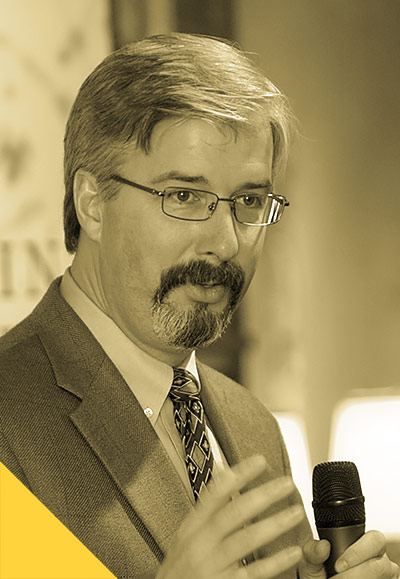
Larry Taunton, Founder and Executive Director of Fixed Point Foundation, is a cultural commentator, columnist, author, and regular contributor to The Atlantic and USA Today. He is a frequent television and radio guest, appearing on CNN, CNN International, Fox News, Al Jazeera America, and BBC. Taunton’s book, The Grace Effect, is a powerful and personal account of the effect one Christian can have on a spiritually dead culture. In it, he argues that without the Christian ideals of love, forgiveness, and grace, a society will quickly become the author of its own demise. According to Taunton, “Every meaningful movement in the history of the West has been fueled by Christianity… because they all appealed to a higher law.” God, he believes, is far from irrelevant. Download more biographical details (PDF).

Michael Shermer, taking an opposing stance, asserts that religion is largely to blame for some of the worst atrocities in human history. His latest book, The Moral Arc, maintains that science and reason will lead us to a virtuous and increasingly moral existence. According to Shermer, we are “getting better at solving problems” as we continue to evolve. A New York Times best-selling author, Shermer is the founding publisher of Skeptic magazine and has written thirteen books. He is also a monthly columnist for Scientific American, regular contributor to Time.com, and a Presidential Fellow at Chapman University. When he isn’t writing or teaching, he travels frequently to speak and debate on a variety of topics. Download more biographical details (PDF).
Those of the opinion that man has ‘outgrown’ a need for God, and those who think that God provides the very moral foundation on which our society is based are both ensured a thoughtful and spirited exchange.
Tickets
This event is organized by Fixed Point Foundation and sponsored by Summer Classics. Tickets are on sale now through the Benaroya Box Office by clicking the link below or by calling 206-215-4747 to purchase.
About Fixed Point Foundation
Fixed Point Foundation has been engaging the culture on significant and relevant issues since 2004. Unapologetically Christian, Fixed Point seeks innovative ways to stimulate conversation in the marketplace of ideas through a variety of mediums (articles, podcasts, radio, TV interviews, writing, speaking engagements, and debates, to name a few). Some of the topics addressed include radical Islam, the New Atheism, science vs. religion, gay marriage, and Intelligent Design.
eSkeptic for September 16, 2015
In this week’s eSkeptic:
MISSED OUR CONFERENCE?
Watch three of the lectures you missed, for free
For those of you who missed the Skeptics Society Conference at Caltech in May, we’ve made several of the lectures available for free viewing. You can also watch some of the entertainment videos, morning and afternoon speaker panel discussions and audience Q&A, as well as Michael Shermer’s conversation with Richard Dawkins on the future of religion and morality—all for free!
Dr. Carol Tavris
On the Future of Gender, Race & Human Nature
What will people look like centuries from now? How will they act? What race and gender roles that we take as natural today will be the same or different in the far future? In this insightful look into the future Carol Tavris, one of today’s most prominent social scientists and psychologists, considers how blinded we all are to the influences of the times in which we live.
Dr. Ian Morris
On the Future of War and Human Values
Looking over the past 10,000 years historian and archaeologist Ian Morris reveals patterns in the past related to energy consumption and resources, and how our age of fossil fuels will likely be a temporary one as we transition to renewables, and how this transition may lead to new human values, including the value of peace in a long human history filled with war.
Dr. Donald Prothero
On the Future of Life on Earth
The geologist and paleontologist who is expert in ancient climates turns his acumen to current environmental problems that must be solved before our civilization can move forward. The obstacles are considerable but not insurmountable. First and foremost we must deal with climate change and its consequences for our immediate future as the earth’s population approaches 10 billion by 2050. Prothero offers some solutions as well as outlining the problems.
About this week’s eSkeptic

Ebola is exotic, deadly, and has no known treatment. It is not surprising that the recent outbreak has caused an epidemic of fear. When fear takes hold, rational thought flies out the window. We want to believe, need to believe, that we can protect ourselves from Ebola. In this week’s eSkeptic, we present Harriet Hall’s column, “The SkepDoc,” from Skeptic magazine 20.1 (2015) in which she discusses the quackery known as colloidal silver, now being promoted as a cure for Ebola.
Dr. Harriet Hall, MD, the SkepDoc, is a retired family physician and Air Force Colonel living in Puyallup, WA. She writes about alternative medicine, pseudoscience, quackery, and critical thinking. She is a contributing editor to both Skeptic and Skeptical Inquirer, an advisor to the Quackwatch website, and an editor of Sciencebasedmedicine.org, where she writes an article every Tuesday. She is author of Women Aren’t Supposed to Fly: The Memoirs of a Female Flight Surgeon. Her website is www.skepdoc.info.
Colloidal Silver, Smurfs, and Ebola
by Harriet Hall, M.D., The SkepDoc
Colloidal silver is back! It competed in the ring of science and was thoroughly clobbered. If it had any dignity, it would have stayed down for the count and admitted defeat; but like some bizarre whack-a-mole or zombie it keeps stumbling back to its feet, wanting to fight again. This myth that refuses to die is now being promoted as a cure for Ebola, on the basis of nothing more than wishful thinking.
A Myth with a Silver Lining
There is often a grain of truth behind a myth. The grain here is that silver ions kill bacteria in vitro. But as Rose Shapiro famously reminded us in her book Suckers: How Alternative Medicine Makes Fools of Us All, you can kill cancer cells in a lab with a flame thrower or bleach, but that doesn’t mean doctors should use flame throwers or make patients drink bleach. Silver is useful in medicine for external use (e.g., silver sulfadiazine cream for burns) and to disinfect surfaces and drinking water. But when swallowed, it is not only useless but harmful.
Naturopaths use colloidal silver. It’s available on the Internet or you can buy a generator to make your own at home, using a silver bar purchased from a coin dealer and parts from Radio Shack.
Promoters make bold claims: we are all suffering from “silver deficiency,” the depletion of silver from our soil has caused a drastic increase in immune system disorders, colloidal silver has been used successfully in the treatment of 650 diseases, it functions as a superior second immune system in the body. Testimonials abound for practically every known disease, but I couldn’t find any scientific evidence that it has ever been used successfully to cure even one disease.
The Natural News website calls it “an antibacterial, antifungal, antiviral miracle.” Mercola.com claims that some silver products are harmful but that “true” colloidal silver is harmless and effective for treating infections including MRSA (methicillin-resistant Staphylococcus aureus). Their evidence? A measly four studies that are not listed on PubMed and that only show that it kills MRSA in cell cultures and on surfaces in the lab; there are no studies in humans. There is hype about “nano silver,” but that’s only a new name for the same old colloidal silver.
Creating Smurfs
By 1843 doctors had recognized that silver causes argyria, an irreversible discoloration of the skin. Rosemary Jacobs’ doctor prescribed colloidal silver nose drops to treat her allergies back in the 1950s. The doctor naïvely believed fraudulent ads from manufacturers and salespeople and apparently hadn’t read the warnings in the medical literature. By age 14, Rosemary’s skin had turned slate gray. Despite cosmetics and dermatologists, she remains strikingly gray today. Her appearance has caused serious problems in her life; it cost her jobs, she was refused lodging because people thought she had a contagious disease, and nurses in a hospital misinterpreted her color as an indication of a heart attack.
Jacobs has dedicated her life to investigating colloidal silver and spreading the word. Her website rosemaryjacobs.com provides a wealth of information with references. She says, “In searching that literature for thirty years I have never found any evidence that silver in a person’s body benefits anyone other than the quack who sold it.”
Rosemary turned slate-gray, but Karl Karason looked more blue than gray. He was known as Papa Smurf; with his striking white hair and beard, he looked a lot like the cartoon character. If you want to look like a Smurf there are better options, like the entertainers in the Blue Man Group with their removable blue body paint.
The Scientific Consensus
Every reputable organization that has evaluated colloidal silver has rejected it. Even the CAM-friendly National Center for Complementary and Alternative Medicine (NCCAM) warns against it: “Scientific evidence does not support the use of colloidal silver to treat any disease, and serious, irreversible side effects can result from its use.” In addition to argyria, they report that it may cause kidney, liver, or nervous system problems and can interfere with absorption of some drugs.
The FDA has issued an advisory that colloidal silver is not safe or effective for treating any disease or condition. In 1999, the FDA prohibited the sale of over-the-counter (OTC) drugs containing silver. A few prescription drugs contain silver, but they are all for topical application, not for oral ingestion.
The Natural Medicines Comprehensive Database says silver has no known physiological function. They rated it “likely unsafe” and found no credible evidence that it was effective for any condition.
In the US and Australia, regulators have ordered colloidal silver manufacturers to stop making false claims. One company in Australia had to pay court costs and provide refunds to customers.
Ebola Quackery
Ebola is exotic, deadly, and has no known treatment. It is not surprising that the recent outbreak has caused an epidemic of fear. When fear takes hold, rational thought flies out the window. We want to believe, need to believe, that we can protect ourselves from Ebola. Quacks and charlatans come out of the woodwork to calm our fears with false promises. As infectious disease specialist Dr. Mark Crislip says, “There seems to be a belief in the pseudo-medical world that if you just did everything right, ate the right food, took the correct supplements, and used the CAM du jour you would have a perfect immune system and never get an infection. Wrong.”
All sorts of remedies are said to cure Ebola or prevent it by strengthening your immune system, including selenium, magnesium, intravenous vitamin C, bicarbonate of soda, vitamin D, iodine, slowing the breathing down with a Breathslim breathing device, medical marijuana, infrared therapy, glutathione, coffee, fermented soy, homeopathic spider venom, genistein (found in soy), garcinia kola, estradiol, essential oils, Chinese herbs, turmeric, gingko, zeolite, Hulda Clark’s infamous Zapper, alkalinized and/or ionized water, elderberry zinc lozenges, medicinal mushrooms, probiotics, avoiding tap water/non-organic/GMO foods, drinking green vegetable juices and fruit juices, cinnamon bark, Rife therapy, and kogel mogel eggnog.
Peter Chappell claims he can treat Ebola with healing sound by playing the violin. Natural News published instructions for a homemade homeopathic Ebola vaccine made from the spit or blood of an Ebola patient (since contact with bodily fluids is how you get Ebola, this is obviously not a good idea). The ruler of the Igala Kingdom in Nigeria recommends bathing before 4:00 am with hot water and blessed anti-Ebola salt, and reciting verses from the Koran. Faith healing with laying on of hands is another great way to spread the disease. In Sierra Leone, a traditional herbal healer treated an Ebola patient, caught Ebola and died. At her funeral, numerous others were infected; eventually a total of 365 Ebola deaths were traced back to her. In the US, an entrepreneur was inspired by an episode of the Dr. Oz show to invent “Ebola-C shots” as an energy drink; he reportedly grossed $480,000 in the first 2 weeks.
Homeopaths sent teams to Africa, wrote letters to government officials, and circulated a petition begging the World Health Organization (WHO) to distribute homeopathic remedies to control the epidemic. A New Zealand politician signed the petition, was publicly ridiculed for it, and later admitted that signing it was “probably pretty unwise.” Chiropractors have claimed that Ebola can be prevented and cured by restoring spine alignment so innate intelligence can “whack the offending pathogen immediately.” Rotarians planned a humanitarian mission to Sierra Leone to train doctors there to provide ozone therapy. Natural News sold family pandemic protection kits for home use.
The FDA sent warning letters to three companies that were making fraudulent claims about Ebola cures. One, Natural Health Solutions, was selling a $24.95 bottle of Nano Silver for the “cure, treatment and prevention for Ebola virus.” The other two, DoTERRA and Young Living, were selling “essential oil” Ebola cures derived from cinnamon bark, peppermint, sandalwood, eucalyptus, and rosemary.
The Natural Solutions Foundation complained that authorities had blocked shipments of Nano Silver to Sierra Leone. Mike Adams, the Health Ranger, calls that a double standard, since the government allowed patients to be treated with ZMapp. He asks “How exactly is it that an unproven pharmaceutical is okay to use as a treatment for Ebola, but an unproven herb or natural remedy is completely unacceptable and possibly illegal?” There’s a simple answer: ZMapp is expected to work because it contains antibodies to the Ebola virus.
Ebola Conspiracy Theories
Conspiracy theories range from improbable to insane: there’s no such thing as Ebola; it’s all a lie intended to limit our freedom and control us with restrictive laws. It’s a plot to kill Africans. Ebola turns people into zombies, which somehow benefits big government. Big Pharma and government plan to force an Ebola vaccine on everyone. President Obama wants to infect white people and make the US more like his “home” in Africa. Ebola is a plot to divert attention from vaccine fraud at the CDC. Ebola will be intentionally introduced into the US by ISIS terrorists. Those sick people don’t have Ebola; they have malnutrition and damaged immune systems due to wars, toxins, and poor sanitation. Ebola can be transmitted through the air. (This idea ignores particle size and scientific knowledge about disease transmission.) The US government holds a patent on Ebola, so it must have originated the disease. (It patented a different strain, back when organisms could be patented, as a preemptive strike so private companies couldn’t patent it and withhold it from other researchers.) Colloidal silver is not a cure for Ebola or for anything else. Yet a Google search for “Ebola silver” turned up 139,000,000 hits. Good grief! ![]()

THE BATTLE IN SEATTLE
Michael Shermer v. Larry Taunton
September 30, 2015 at 7 PM
Benaroya Hall, Seattle
Tickets: 206-215-4747
Fixed Point Foundation, a non-profit based in Birmingham, Alabama, revives an age-old question in the form of a debate – Do we need God? Michael Shermer of Skeptic magazine and Larry Taunton of Fixed Point Foundation meet at Benaroya Hall on September 30 to address whether the concept of God is beneficial or detrimental to society.
Exploring the effects of the idea of God on humanity will bring these two participants to consider a variety of issues, including human suffering, morality, and meaning. With backgrounds in education and history, both Taunton and Shermer are well prepared to explore all of these topics, particularly as each relates to religion.

Larry Taunton, Founder and Executive Director of Fixed Point Foundation, is a cultural commentator, columnist, author, and regular contributor to The Atlantic and USA Today. He is a frequent television and radio guest, appearing on CNN, CNN International, Fox News, Al Jazeera America, and BBC. Taunton’s book, The Grace Effect, is a powerful and personal account of the effect one Christian can have on a spiritually dead culture. In it, he argues that without the Christian ideals of love, forgiveness, and grace, a society will quickly become the author of its own demise. According to Taunton, “Every meaningful movement in the history of the West has been fueled by Christianity… because they all appealed to a higher law.” God, he believes, is far from irrelevant. Download more biographical details (PDF).

Michael Shermer, taking an opposing stance, asserts that religion is largely to blame for some of the worst atrocities in human history. His latest book, The Moral Arc, maintains that science and reason will lead us to a virtuous and increasingly moral existence. According to Shermer, we are “getting better at solving problems” as we continue to evolve. A New York Times best-selling author, Shermer is the founding publisher of Skeptic magazine and has written thirteen books. He is also a monthly columnist for Scientific American, regular contributor to Time.com, and a Presidential Fellow at Chapman University. When he isn’t writing or teaching, he travels frequently to speak and debate on a variety of topics. Download more biographical details (PDF).
Those of the opinion that man has ‘outgrown’ a need for God, and those who think that God provides the very moral foundation on which our society is based are both ensured a thoughtful and spirited exchange.
Tickets
This event is organized by Fixed Point Foundation and sponsored by Summer Classics. Tickets are on sale now through the Benaroya Box Office by clicking the link below or by calling 206-215-4747 to purchase.
About Fixed Point Foundation
Fixed Point Foundation has been engaging the culture on significant and relevant issues since 2004. Unapologetically Christian, Fixed Point seeks innovative ways to stimulate conversation in the marketplace of ideas through a variety of mediums (articles, podcasts, radio, TV interviews, writing, speaking engagements, and debates, to name a few). Some of the topics addressed include radical Islam, the New Atheism, science vs. religion, gay marriage, and Intelligent Design.
eSkeptic for September 9, 2015
In this week’s eSkeptic:
3 DIGITAL BACK ISSUES JUST ADDED
Issue 1.2: Cryonics
Science Fact or Science Fiction; The Society for the Recovery of Persons Apparently Dead: the History of Resuscitation; Reaching for Tomorrow: Technical Aspects of Cryonics; Basic Questions and Answers About Cryonics From Alcor Life Extension Foundation; Physicist in the White House?; “Holy Grail” Discovered; Black Holes; Acupuncturists and Chiropractors Fined; Secular Alcohol Treatment; Greenhouse Doubts; Laws of Robotics; UFO Info; Hume’s Maxim: What Does It Take To Establish A Miracle?; The Use and Abuse of Statistics in the “Real World”; Skeptical Perspectives: “Can Science Cheat Death?” Cryonics, Altered States and the Quest for Transcendence. Galileo, Gould, Transcendental Meditation, JFK Assassination, Conspiracy Theories; Freud; Catastrophic Catastrophes; Science in Western Culture
Issue 4.3: Conspiracies
Louis Farrakhan and Paranoia in African-American Politics; The New World Order, 666 and The End of the World; The Greatest Political Correctness Conspiracy Hoax; Who Really Runs America? Jerry Brown on Politics & Money; Psychoanalysis as Religion, Cult and Political Movement; Cracking the Bell Curve Myth; The “End of Science” Debate: Is It?; First Time In English! A Skeptical Historical Masterpiece: Benjamin Franklin and Antoine Lavoisier Investigate Mesmerism for Louis XVI of France; The Amazing Randi on Police Psychics; Who Become A Science Heretic?; Humor: Abducted by Hollywood; Aliens Arrive on Independence Day; What Will Tomorrow Bring?
Issue 4.4: Carl Sagan Tribute
$742,000 Says Therapeutic Touch is Bogus; Dismantling History; A Tribute to Carl Sagan; Special Section: Can History Be a Science?; Birth Order as Destiny—An Interview with Frank Sulloway; 4 Ways History Can Be a Science; Have Deconstructionists Destroyed History?; Can We Know What Really Happened in the Past?; Detecting the “Human Energy Field”; Cheating for Jesus?—Creationist’s Questionable Tactics; 1996 Dumbth News; Randi—Become a Media Psychic!; Early Ghostbusters; N-Rays-Where’d They Go?; Nostradamus Debunked; 13 Questions Astrologers Can’t Answer; Encouraging Students to Think Critically; Norman Levitt Blasts His Critics…
WHERE CAN I READ DIGITAL BACK ISSUES?
Your purchase of a back issue from Pocketmags.com can be synchronized and read on any of the following platforms for which we have a Skeptic-branded app: iOS, Android and Kindle Fire.
There is also a PocketMags-branded app for these platforms: iOS, Android, Windows 8, Windows Phone, Kindle Fire.
You can also read digital back issues on the PocketMags.com website on your PC or Mac. Just remember to login with your Pocketmags username and password. Got questions? Find answers.
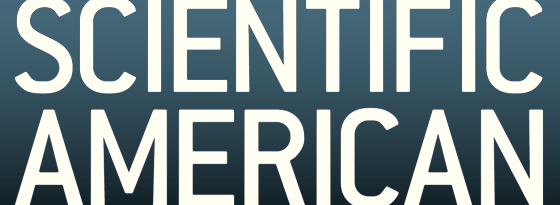
NEW SCIENTIFIC AMERICAN COLUMN ON MICHAELSHERMER.COM
Forensic Pseudoscience: How trustworthy are DNA and other crime scene tests?
The criminal justice system has a problem, and its name is forensics. This was the message I heard at the Forensic Science Research Evaluation Workshop held May 26–27 at the AAAS headquarters in Washington, D.C. I spoke about pseudoscience but then listened in dismay at how the many fields in the forensic sciences that I assumed were reliable (DNA, fingerprints, and so on) in fact employ unreliable or untested techniques and show inconsistencies between evaluators of evidence.
The conference was organized in response to a 2009 publication by the National Research Council entitled Strengthening Forensic Science in the United States: A Path Forward, which the U.S. Congress commissioned when it became clear that DNA was the only (barely) reliable forensic science. The report concluded that “the forensic science system, encompassing both research and practice, has serious problems that can only be addressed by a national commitment to overhaul the current structure that supports the forensic science community in this country.” Among the areas determined to be flawed and in need of more research are…
FOLLOW MICHAEL SHERMER ON
Twitter • Facebook • Insight • The Moral Arc Blog

MICHAEL SHERMER V. LARRY TAUNTON
September 30, 2015 at 7 PM
Benaroya Hall, Seattle
Tickets: 206-215-4747
Fixed Point Foundation, a non-profit based in Birmingham, Alabama, revives an age-old question in the form of a debate – Do we need God? Michael Shermer of Skeptic magazine and Larry Taunton of Fixed Point Foundation meet at Benaroya Hall on September 30 to address whether the concept of God is beneficial or detrimental to society.
Exploring the effects of the idea of God on humanity will bring these two participants to consider a variety of issues, including human suffering, morality, and meaning. With backgrounds in education and history, both Taunton and Shermer are well prepared to explore all of these topics, particularly as each relates to religion.

Larry Taunton, Founder and Executive Director of Fixed Point Foundation, is a cultural commentator, columnist, author, and regular contributor to The Atlantic and USA Today. He is a frequent television and radio guest, appearing on CNN, CNN International, Fox News, Al Jazeera America, and BBC. Taunton’s book, The Grace Effect, is a powerful and personal account of the effect one Christian can have on a spiritually dead culture. In it, he argues that without the Christian ideals of love, forgiveness, and grace, a society will quickly become the author of its own demise. According to Taunton, “Every meaningful movement in the history of the West has been fueled by Christianity… because they all appealed to a higher law.” God, he believes, is far from irrelevant. Download more biographical details (PDF).

Michael Shermer, taking an opposing stance, asserts that religion is largely to blame for some of the worst atrocities in human history. His latest book, The Moral Arc, maintains that science and reason will lead us to a virtuous and increasingly moral existence. According to Shermer, we are “getting better at solving problems” as we continue to evolve. A New York Times best-selling author, Shermer is the founding publisher of Skeptic magazine and has written thirteen books. He is also a monthly columnist for Scientific American, regular contributor to Time.com, and a Presidential Fellow at Chapman University. When he isn’t writing or teaching, he travels frequently to speak and debate on a variety of topics. Download more biographical details (PDF).
Those of the opinion that man has ‘outgrown’ a need for God, and those who think that God provides the very moral foundation on which our society is based are both ensured a thoughtful and spirited exchange.
Tickets
This event is organized by Fixed Point Foundation and sponsored by Summer Classics. Tickets are on sale now through the Benaroya Box Office by clicking the link below or by calling 206-215-4747 to purchase.
About Fixed Point Foundation
Fixed Point Foundation has been engaging the culture on significant and relevant issues since 2004. Unapologetically Christian, Fixed Point seeks innovative ways to stimulate conversation in the marketplace of ideas through a variety of mediums (articles, podcasts, radio, TV interviews, writing, speaking engagements, and debates, to name a few). Some of the topics addressed include radical Islam, the New Atheism, science vs. religion, gay marriage, and Intelligent Design.
eSkeptic for September 2, 2015
In this week’s eSkeptic:
SKEPTIC MAGAZINE 20.3
Were there two Wallaces? The codiscoverer of natural selection also believed in “the unseen universe of Spirit.”
Learn more about Alfred Russel Wallace—seeker, believer, heretic, scientist, skeptic—in this special issue of Skeptic magazine.
Get it now, available digitally, via the Skeptic Magazine App for iOS, Android, BlackBerry PlayBook, Kindle Fire HD, Mac, PC, and Windows 8 devices. You can also pre-order the print issue from Shop Skeptic. This issue won’t likely hit newsstands for another week or two.
30-DAY FREE TRIAL
ON DIGITAL SUBSCRIPTIONS!
Subscribe to Skeptic Magazine via the Skeptic Magazine App on your favourite iOS or Android device (or via PocketMags.com on your PC or Mac) and try the latest issue free for 30 days!
JUNIOR SKEPTIC
Physically bound inside each and every issue of Skeptic magazine is Junior Skeptic: an engagingly illustrated science and critical thinking publication for younger readers (and the young at heart).
Bat-People on the Moon! (issue 56)
In this issue we’ll be talking about bat-people. And sheep. And unicorns. On the Moon! What’s that you say? The Moon obviously can’t have unicorns because it doesn’t even have air to breathe? Well, sure, that’s a good point. But what if I told you the world’s most popular newspaper once announced the discovery of these and many other fantastical lunar lifeforms? Moreover, people believed those claims. How on Earth were New York City newspaper readers taken in by a far-fetched fantasy about flying Moon-bats? Find out in this issue of Junior Skeptic!

MICHAEL SHERMER V. LARRY TAUNTON
September 30, 2015 at 7 PM
Benaroya Hall, Seattle
Tickets: 206-215-4747
Fixed Point Foundation, a non-profit based in Birmingham, Alabama, revives an age-old question in the form of a debate – Do we need God? Michael Shermer of Skeptic magazine and Larry Taunton of Fixed Point Foundation meet at Benaroya Hall on September 30 to address whether the concept of God is beneficial or detrimental to society.
Exploring the effects of the idea of God on humanity will bring these two participants to consider a variety of issues, including human suffering, morality, and meaning. With backgrounds in education and history, both Taunton and Shermer are well prepared to explore all of these topics, particularly as each relates to religion.

Larry Taunton, Founder and Executive Director of Fixed Point Foundation, is a cultural commentator, columnist, author, and regular contributor to The Atlantic and USA Today. He is a frequent television and radio guest, appearing on CNN, CNN International, Fox News, Al Jazeera America, and BBC. Taunton’s book, The Grace Effect, is a powerful and personal account of the effect one Christian can have on a spiritually dead culture. In it, he argues that without the Christian ideals of love, forgiveness, and grace, a society will quickly become the author of its own demise. According to Taunton, “Every meaningful movement in the history of the West has been fueled by Christianity… because they all appealed to a higher law.” God, he believes, is far from irrelevant. Download more biographical details (PDF).

Michael Shermer, taking an opposing stance, asserts that religion is largely to blame for some of the worst atrocities in human history. His latest book, The Moral Arc, maintains that science and reason will lead us to a virtuous and increasingly moral existence. According to Shermer, we are “getting better at solving problems” as we continue to evolve. A New York Times best-selling author, Shermer is the founding publisher of Skeptic magazine and has written thirteen books. He is also a monthly columnist for Scientific American, regular contributor to Time.com, and a Presidential Fellow at Chapman University. When he isn’t writing or teaching, he travels frequently to speak and debate on a variety of topics. Download more biographical details (PDF).
Those of the opinion that man has ‘outgrown’ a need for God, and those who think that God provides the very moral foundation on which our society is based are both ensured a thoughtful and spirited exchange.
Tickets
This event is organized by Fixed Point Foundation and sponsored by Summer Classics. Tickets are on sale now through the Benaroya Box Office by clicking the link below or by calling 206-215-4747 to purchase.
About Fixed Point Foundation
Fixed Point Foundation has been engaging the culture on significant and relevant issues since 2004. Unapologetically Christian, Fixed Point seeks innovative ways to stimulate conversation in the marketplace of ideas through a variety of mediums (articles, podcasts, radio, TV interviews, writing, speaking engagements, and debates, to name a few). Some of the topics addressed include radical Islam, the New Atheism, science vs. religion, gay marriage, and Intelligent Design.

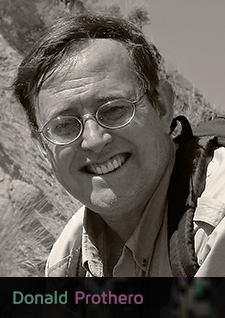
Future Climate Thoughts
SKEPTICALITY EPISODE 259
In this episode of Skepticality, Derek digs into a recording which he conducted in California in May at the Skeptics Society conference “In the Year 2525: Big Science, Big History, and the Far Future of Humanity”. Derek interviews Dr. Donald Prothero about the current state of the climate, how we know that humans are causing massive change, and what we might be able to do to help mitigate and, possibly, improve things going forward.
eSkeptic for August 26, 2015
In this week’s eSkeptic:
PLESIOSAUR PERIL
Finalist for the 2014 Lane Anderson Award for Best Science Book for Young Readers
We are pleased to announce that Plesiosaur Peril has just been selected as a top three finalist for the prestigious Lane Anderson Award in the Young Reader category in 2014. This award is Canada’s largest literary prize specific to science writing. Congratulations, Daniel Loxton!
Loxton is the Editor of Junior Skeptic (the 10-page kids’ science section bound within Skeptic magazine). This is Daniel’s third time as a finalist for this award, which he won in 2011 for his book Evolution: How We And All Living Things Came to Be.

NEW FROM MICHAEL SHERMER ON HUFFINGTONPOST.COM
Science and Hollywood: When the Martian Met the Earthlings


Andy Weir’s gripping tale of a NASA astronaut stranded on Mars (entitled, simply enough, The Martian), is coming to Hollywood on October 2, and it is going to be another Ridley Scott blockbuster. I listened to the unabridged audio edition of the book, brilliantly narrated by R. C. Bray, who supremely navigates through multiple voices and actually sounds a bit like Matt Damon, who plays the novel’s hero Mark Watney in the film. It well deserves its rating of 4.7/5 on an almost unbelievable 45,790 ratings on Audible.com. Add to that the 4.6/5 rating from 14,536 customer reviews on Amazon and you have a genuine cultural book event. A lot of people have read this book. And if the NASA scientists at the August 18 press conference at the La Canada theaters and JPL are right, this could translate to a new generation of scientists from the ranks of young people sure to flock to this action-adventure science fiction film.
Just like “Scotty” on Star Trek inspired a generation of kids to go into STEM careers (Science, Technology, Engineering, and Math), Damon’s Watney is sure to do the same as he cuts a heroic action figure loaded with math and engineering skills enough to, as he says, “science the shit” out of the problem he finds himself in.
The Science-and-Hollywood connection was evident at the press conference, starting with comments from the Director of the Jet Propulsion Laboratory (JPL), Charles Elachi…
FOLLOW MICHAEL SHERMER ON
Twitter • Facebook • Insight • The Moral Arc Blog

About this week’s eSkeptic
In this week’s eSkeptic, Stephen Beckner reviews Joshua Oppenheimer’s documentary film The Look of Silence, produced by Signe Byrge, Executive Producers Werner Herzog, Errol Morris, Andre Singer Sørensen, Presented by Drafthouse Films, Participant Media, and Final Cut For Real, 103 minutes. The above image is a still from the film.
Stephen Beckner is a screenwriter and filmmaker. He is best known for his feature film A.K.A. Birdseye. He is currently developing a feature film project based on the American militia movement of the early 1990s. In addition to his work in film, he has collaborated on video games, notably as head writer for the award-winning multi-platform adventure game Perils of Man.
Anatomy of a (Mass) Murder
by Stephen Beckner
Let sleeping dogs lie, the old saw goes, but judging from his latest documentary, writer/director Joshua Oppenheimer doesn’t subscribe to that particular bit of folk wisdom. No, for all its impartial probing and careful emotional inquisitiveness, The Look of Silence aims to stir things up. In fact, it wants to raise the dead.
Like its companion piece, the 2012 Academy Award nominated The Act of Killing, Oppenheimer’s subject is Indonesia’s anti-communist purge, a frenzy of violence and butchery at the hands of vigilante youths cum organized death squads. Between 1965 and 1966, with the explicit consent of the Indonesian military, anyone suspected of being a communist, harboring communist sympathies, or in some cases just knowing a suspected communist, was rounded up and delivered to busy backrooms that functioned as human clearing houses, where zealous young men—many of them gangsters before the Suharto regime found a suitable use for their dubious skillsets—saw it as their duty to beat, stab, and/or garrote the evil offenders. Corpses were then rendered into mass graves, or heaved into local rivers under cover of darkness. For years, the scale of the mass killings was not known to the outside world, but is now estimated at more than a million dead. Fifty years on, there has been no moral or legal reckoning—the killings are still missing from Indonesia’s official history, though the killers themselves live as heroes amongst their fellow citizens, revered by some, feared by many.
As topics for documentary go, political pogroms are nothing new, but then Oppenheimer’s films are not political. What sets these documentaries apart, and what makes them of particular interest to skeptics, is Oppenheimer’s analytical approach to his subject. His characters are not players in service to a political argument so much as psychological test subjects. In The Act of Killing, Oppenheimer treats his participants—former killers all—with a clinician’s emotional distance. We watch in astonishment as the now-aging men are given a grant to confront their violent pasts by making personal films ostensibly reenacting their “heroic” deeds, and proceed to lose themselves like mice in a laboratory maze of their own making.
The principal figure of the film, Anwar Congo, casts himself as a noir gangster, and demonstrates the evolution of his killing techniques as demand for his services increased. But when he briefly steps into the role of one of his victims, the look in his eyes changes, his psychological armor slips away. Oppenheimer’s steadfast refusal to judge the participants increases their trust in the process and in turn they make themselves more emotionally available. What emerges is at a once a rending human tragedy, and a forensic debriefing on the mechanics of guilt and the psychological contortions men put themselves through to avoid it. Oppenheimer’s camera works like a scalpel, cutting through the layers of rationalizations to expose the underlying psychological anatomy of…not killers, but of ordinary men who became killers, and who have tried in vain for five decades to become ordinary men again.
When Hannah Arendt was covering the trial of Nazi war criminal Adolf Eichmann for The New Yorker, she famously employed the phrase “banality of evil” to underscore Eichmann’s ordinariness. The context of Eichmann’s trial was personal guilt for a state-sponsored crime. The crime itself was never in doubt. But in Indonesia the evil prevailed, the orchestrators of their genocide were never brought to justice, and no crime was ever acknowledged. As a consequence, the banality of evil is on full display, and The Look of Silence gives us the opportunity to witness it up close. Here Oppenheimer shifts the point of view from the perpetrators to the survivors, focusing on the family of Ramli, one of the rare victims whose murder was witnessed and whose remains rest in a marked grave near the Snake River. Because of this, Ramli has come to represent all the victims. His brother Adi, born a year after Ramli’s death, sets out to meet the killers, who openly boast about the unspeakably brutal execution. One of the men, concerned that his place in history may be overlooked, has even self published a memoir with hand drawn illustrations depicting the night’s gruesome proceedings.
Meeting Adi was fortuitous for Oppenheimer, who understood early on that his strength of character and remarkable composure under pressure made him the ideal person to conduct these encounters. A practicing optometrist, Adi visits the killers under the guise of checking their eyes. As he edges closer to the subject of his brother, he never allows anger or resentment to dominate the conversations, even when he has every right to do so. Instead, it is Adi’s abiding sadness that prevails. More than anything, he simply wants to make sense of it all. But inevitably, when the men learn that Adi is the brother of Ramli, their stories change. We see their minds suddenly racing to rationalize their behavior. They were merely agents of the state, they say, acting for the greater good, purging a societal evil, etc. In the psychological denuding that ensues, even their boasting is revealed as a coping mechanism to assuage their guilt. And should all these fail, threats to Adi and his family serve to shift the blame.
In perhaps the most vivid example of the lengths to which these men went to avoid moral culpability, many claimed that it was common practice for the killers to drink the blood of their victims. Failing to do so resulted in certain madness, they averred, and those who abstained from the vampiric ritual were avoided or shunned. As shocking as these confessions are, the film never surrenders to its most lurid details. Oppenheimer’s gaze remains detached, constantly seeking out broader, and ultimately scarier moral implications. We are reminded that silence has its price. If you let sleeping dogs lie, then lie they will. They will lie mostly to themselves at first, but eventually the lies will proliferate.
For some in the skeptical community, there’s a certain morbid satisfaction to be derived from seeing individual cognitive biases so incisively exposed. But any temptation to rubberneck quickly fades when those biases are blatantly enlisted on a societal scale by the state in the service of death. In a telling NBC news report from that time, one Indonesian official claims that many of the communists came forward and asked to be killed—an invocation of the notion of atonement that slyly connects communism with religious sin. Many death squad members later claimed that they knew their victims were communists because they didn’t pray. This convenient narrative equating godlessness with communism has now been institutionalized in Indonesia by a federal blasphemy law aimed not only at making atheism a capital offense, but also at rationalizing the current regime’s murderous origins.
For all its forensic power, The Look of Silence remains a deeply compassionate film. It is provocative, but what it’s trying to provoke finally, is understanding. The titular silence is a closed door that prevents that understanding, trapping perpetrator and survivor alike. Crucially, Oppenheimer never gives us the easy out of dehumanizing the killers. They are not depicted as creatures apart, monsters stalking the wrong side of some unseen but impenetrable moral barrier. No, they are ordinary men, banal men, who became killers in a specifically identifiable way. This viewer could not escape the chilling conclusion that we are, all of us, only a couple of rationalizations away from the killer inside. It’s easy to find him—heartbreakingly, terrifyingly easy. ![]()
eSkeptic for August 19, 2015
In this week’s eSkeptic:


A Conservative Skeptic
SKEPTICALITY EPISODE 258
In this episode of Skepticality, Derek brings another interview from his trip to The Amazing Meeting 13: a discussion with Edwina Rogers. Edwina is currently the CEO for the Secular Policy Institute where she is helping bring more critical thought into the halls of American Government. Find out more about how a conservative from rural Alabama came to be such a major champion for science and critical thinking.

In this week’s eSkeptic, Harriet Hall reviews The Myth of Mirror Neurons: The Real Neuroscience of Communication and Cognition, by Gregory Hickok. This review first appeared on the Science-Based Medicine Blog and also in Skeptic magazine 20.2 (2015).
Harriet Hall is a retired family physician and Air Force Colonel living in Puyallup, WA. She writes about alternative medicine, pseudoscience, quackery, and critical thinking. She is a contributing editor to both Skeptic and Skeptical Inquirer, an advisor to the Quackwatch website, and an editor of Sciencebasedmedicine.org, where she writes an article every Tuesday. She is author of Women Aren’t Supposed to Fly: The Memoirs of a Female Flight Surgeon. Her website is www.skepdoc.info.
The Use and Abuse of Mirror Neurons
a book review by Harriet Hall, M.D.
I couldn’t say it any better than Steven Pinker did on the jacket blurb of this important book:
Every now and again an idea from science escapes from the lab and takes on a life of its own as an explanation for all mysteries, a validation of our deepest yearnings, and irresistible bait for journalists and humanities scholars… Hickok puts an end to this monkey business by showing that mirror neurons do not, in fact, explain language, empathy, society, and world peace. But this is not a negative exposé—the reader of this book will learn a great deal of the contemporary sciences of language, mind, and brain, and will find that the reality is more exciting than the mythology.
Mirror neurons were discovered serendipitously during a study of macaque monkeys where researchers were recording the activity of individual brain cells. They found single cells that fired when the monkey grasped an object. Then they happened to notice something they hadn’t expected: the cells also fired as the monkey observed the experimenter grasping an object to set up the next trial.
In all, they recorded data from 184 neurons in the F5 motor area of the brain. Almost all of them fired when the monkey performed some kind of action, just as would be expected from cells in the motor cortex. But 87 of these also responded to some type of visual stimuli: 48 responded to seeing objects and 39 responded to seeing actions; of these, 12 neurons responded most strongly when the monkey grasped an object and also when it observed the researcher performing the same action.
The initial interpretation of the scientists: one of the functions of that part of the brain is to retrieve appropriate motor acts in response to sensory stimuli. Monkeys have rich social interactions, so it makes sense that the brain has a mechanism for communicating information about perceived actions of others to motor areas that code self-actions for execution. So far, so good. But they went on to suggest that their findings might have implications for two areas of human research that seemed to show a similar observation/execution correspondence:
- Limb apraxia, where patients unable to perform an action had been reported to have deficits in understanding the limb gestures of others.
- The motor theory of speech perception, the idea that we perceive speech by reconstructing the motor gestures that generated those sounds.
Hickok suggests that the experimental setup had trained the monkeys to associate their own grasp with a reward, and to associate the grasp of the researcher with an upcoming new reward. What the researchers had observed might be merely a reflection of how the brain stores, organizes, and retrieves memories and learned motor patterns. They could have been seeing a generalized phenomenon of association rather than anything mirror-like. If so, the association process itself would be a more promising area for further research.
The findings in monkeys were replicated in other primates but not in humans. Researchers assumed that humans also had a mirror neuron system, but that assumption is supported only by indirect evidence from transcranial magnetic stimulation studies, PET scans, and the observation that patients with damage to Broca’s area had pantomime recognition defects. Hickok points out that those findings are not enough to prove that humans have mirror neurons, and that they might well have non-mirror explanations.
Speculation soon ran amok and mirror neurons became wildly popular. Hickok says the idea was seductive because of three factors:
- You could explain it in one line: “We understand action because the motor representation of that action is activated in our brain.”
- It promised to bring this simplicity of explanation to many complex problems.
- It was grounded in hardcore animal neurophysiology, providing a neural mechanism for human cognition and revealing an evolutionary pathway.
Mirror neuron research studies proliferated. Mirror neurons were soon implicated in everything from contagious yawning to autism. Hickok lists 37 areas of mirror neuron research and provides citations. I won’t copy the whole list, but it includes schizophrenia, sexual orientation, cigarette smoking, political attitudes, felt presence, the degree of male erection, spectator sport appreciation, drug abuse, and “misattribution of anger in the music of avant-garde jazz saxophonists.” It’s an astonishing body of speculation to have developed from an interpretation of those 12 original macaque neurons, an interpretation that Hickok thinks was probably wrong.
He describes a number of anomalies that are inconsistent with mirror neuron theory. You’ll have to read the book for the details, but I’ll just mention one of his points that made me laugh. When a man sees someone kicking another man in the balls, it doesn’t prompt him to mirror the kicking behavior; it prompts him to display a very different behavior, to cringe and protect his own groin. Hickok acknowledges that anomalies don’t necessarily prove a theory wrong, but in this case the sheer number of anomalies is cause for concern and should lead us to explore alternative explanations.
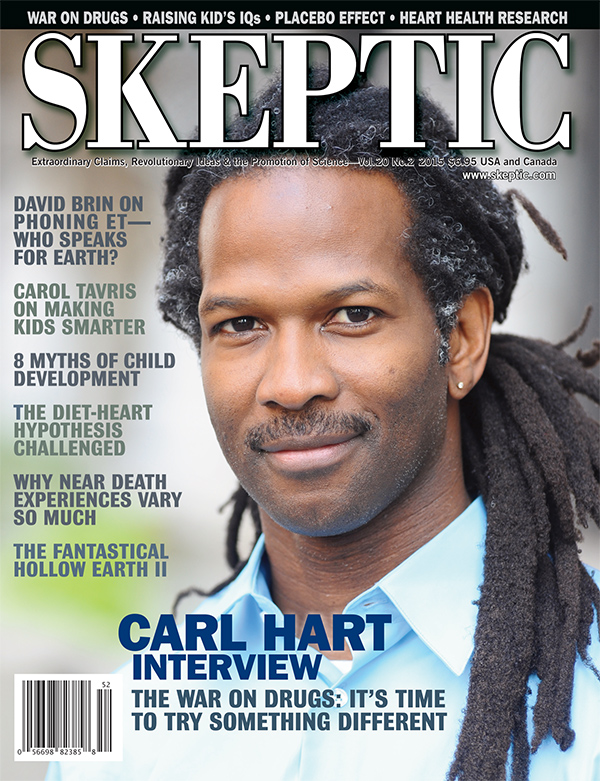
This article appeared in this issue of Skeptic magazine. Order the issue.
To give one example, mirror neurons seemed to provide a convenient explanation for autism. Autistics appear to lack the ability to understand the goals and intentions of others, to read their emotions, to empathize, and to share attention with others. It is said that they lack a “theory of mind” because of a deficit in mirror neurons. But there is really no good evidence that mirror neurons have anything to do with these abilities, and autistics don’t behave as the mirror theory would predict. There is a false-belief test where children are asked to predict where another person will look for an object when only the child knows it has been moved. Young children who can’t pass the false-belief test lack the ability to understand what is going on in another person’s mind, but they don’t behave as if they are autistic.
Hickok favors another hypothesis: that autism is not a matter of deficits at all, but of hypersensitivity to sensory inputs. This concept has been called “the intense world syndrome.” Maybe they don’t pay attention to human faces because it is painful for them to be flooded with the associated emotional sensations. Maybe the repetitive behaviors, fixations, and other features of autism are protective measures to numb them against the onslaught of overwhelming sensory input. This tallies with Temple Grandin’s “squeeze box” she invented to calm her when she felt anxious and overstimulated. Instead of claiming that he understands autism, Hickok merely proposes a hypothesis for investigation. Perhaps the best thing in the book is this sentence: “I remain a skeptic, even of my own ideas.” The words of a true scientist!
The case of autism brings up a point that applies across the board: we must be careful when making inferences about behavior. If an autistic person doesn’t appear to recognize emotions in others, that doesn’t necessarily mean that he can’t recognize them. We can observe a behavior, but we shouldn’t be hasty about assuming we know why the behavior occurs. If a person doesn’t drink milk, we might infer that he doesn’t like it; but it might be that he loves milk but is lactose intolerant. Similarly, when a part of the brain lights up on a PET scan, it indicates increased metabolic activity, but the neurons might be more active because they are working to suppress a response rather than to augment it. Hickok shows in detail how the research on mirror neurons may have gone astray because of false assumptions and jumping to unwarranted conclusions.
The Myth of Mirror Neurons is a fascinating, game-changing book. It explains the details of research studies and its reasoning is thoroughly backed up by citations from the scientific literature. It is not an easy read; some of the concepts are hard to grasp at first, especially for those not familiar with the relevant literature and the terminology. But it offers a valuable lesson in how scientists can be led down the wrong path and how errors can be compounded. It shows how important it is to make sure research data justify the conclusions, to search rigorously for disconfirming evidence, and to make sure alternative explanations have been considered and adequately ruled out. The book accomplishes two goals: it sheds serious doubt on almost everything that has been written about mirror neurons, and it describes cutting edge neuroscience research that may eventually lead us to a better understanding of how communication and cognition really work. No real answers, but plenty of questions. And after all, one of the most important things in science is knowing which questions to ask. ![]()
eSkeptic for August 12, 2015
In this week’s eSkeptic:

About this week’s eSkeptic
Paulette Cooper could be called the poster child for Scientology’s “fair game” abuses against a critical journalist. The story has been told many times with varying levels of detail, in most books about the history of Scientology written in the past four decades. But the story has, until now, been incomplete. In this week’s eSkeptic, Jim Lippard reviews Tony Ortega’s comprehensive account of Paulette Cooper’s story. The Unbreakable Miss Lovely: How the Church of Scientology Tried to Destroy Paulette Cooper.
Jim Lippard is a long-time skeptic who works in the information security field. He founded the Phoenix Skeptics in 1985, and has contributed to Skeptic, Reports of the National Center for Science Education, Skeptical Briefs, The Journal of the American Scientific Affiliation, Joe Nickell’s book Psychic Sleuths, and Gordon Stein’s Encyclopedia of the Paranormal. Read Jim’s full bio or his other posts on this blog.
Scientology’s Worst Abuses Against a Journalist Revealed
by Jim Lippard
Paulette Cooper was harassed, tricked, sued, and lied to, but was not destroyed. The Church of Scientology’s “fair game” policy, originally written by L. Ron Hubbard in 1965 and elaborated in a series of policy letters over subsequent years, stated that “suppressive persons”—defined as anyone interfering with the Church’s activities—are “fair game” for “any action” taken against them, including being “deprived of property or injured by any means by any Scientologist without any discipline of the Scientologist. [Such persons] May be tricked, sued or lied to or destroyed.”1
Paulette Cooper wrote an article for the December 1969 issue of the British magazine Queen titled “The Tragi-Farce of Scientology.”2 The Church of Scientology responded by suing her in Great Britain in 1970. When she turned her article into a 1971 book entitled The Scandal of Scientology, they sued her again. And again. Repeatedly.
Scientology harassed Cooper over the telephone, put her telephone number on bathroom walls, distributed fliers to her neighbors accusing her of prostitution, and monitored her movements and telephone calls. They broke into her psychiatrist’s office and copied records of her college counseling sessions. They gained access to her apartment and copied embarrassing passages out of her teenage diary and delivered them to her adoptive father’s office. They moved undercover operatives into her apartment building, who then befriended her and continually kept the Church updated on her behavior and emotional state. They framed her for bomb threats against Scientology in an attempt to have her imprisoned or committed to a mental institution. Because they used stationery with her fingerprints and her typewriter to create a threatening note, she was indicted and under threat of prosecution for years. The Church planned “Operation Freakout” to frame her again for bomb threats, this time against the Embassy of a Middle Eastern country—plans that were not carried out before Scientology itself was raided by the FBI in 1977 and Cooper was finally cleared of the charges that had been hanging over her.
Most of the above details are parts of a fairly well-known narrative of Cooper’s battles with Scientology, which make her the poster child for “fair game” abuses against a critical journalist. The story has been told many times with varying levels of detail, in most books about the history of Scientology written in the past four decades.3 But the story has, until now, been incomplete.
Journalist and blogger Tony Ortega, former editor of the Village Voice, executive editor of The Raw Story, and now executive editor at TheLip.tv, has written a new book, The Unbreakable Miss Lovely, which is a comprehensive account of Paulette Cooper’s story. By tracking down sources no previous investigator had interviewed, digging into neglected documents, and with some help from individuals who have left Scientology as well as from his subject, Ortega has written the definitive account of the lengths to which Scientology went in its ultimately failed attempts to destroy Paulette Cooper.
Ortega was ideally suited to write this book. His blog, The Underground Bunker,4 is the most popular blog on Scientology. His daily posts document its decline, and he has cultivated numerous sources that include former senior officials in Scientology and even sources still inside the organization. Ortega followed Cooper’s path tracking down the sources she used to write her book and interviewing people who had been in her life—friends, family, and Scientologists operating covertly, such as Nancy Many and Len Zinberg, both of whom have now left the Church. Many’s own book revealed her refusal to break into Cooper’s psychiatrist’s office for Scientology’s Guardian Office (their covert operations and dirty tricks unit).5 Zinberg, who joined Scientology as a teenager, was the person who delivered Cooper’s teen diary excerpts to her father, an action he now regrets and for which he has apologized to Cooper.6
The Unbreakable Miss Lovely contains three main narratives—Paulette’s life story, focusing on her interactions with the Church of Scientology; the story of her biological parents, who were murdered by the Nazis during WWII; and the story of the Scientology’s Snow White Program, a project to infiltrate government offices and obtain information about its plans regarding Scientology. Each of these stories contains previously unpublished information; even Paulette didn’t know the details of what had happened to her biological parents before she came to the U.S. from a Belgian orphanage in 1948 at the age of six, and was separated from her older sister who grew up in Belgium. The first narrative is the shortest, told in a prologue and part of a chapter mid-way through the book. The second, on the Snow White Program, is told in two chapters, while the third makes up the bulk of the book.
Ortega’s account of the Snow White Program uncovers new details about how the FBI discovered Scientology’s government office break-ins, because he was the first journalist to interview Special Agent Christine Hansen. Hansen was the one who cracked the case, when, after she obtained warrants for the arrests of two suspicious men using fake identification cards in government offices, she noticed one of the two men at the main IRS building in Washington D.C. and arrested Gerald Wolfe on June 30, 1976. A year later, on July 8, 1977, the FBI simultaneously raided the Church of Scientology’s offices in D.C. and Los Angeles, carting out truckloads of boxes of documents, including plans of covert operations against Paulette Cooper, the unexecuted “Operation Freakout,” and the earlier bomb threat frame-up, “Operation Dynamite.”
While the book is a highly sympathetic portrait of Paulette Cooper, it is not a hagiography. Cooper sometimes comes across as gullible, as she repeatedly falls into Scientology’s traps. This appearance is no doubt partly accounted for by hindsight bias—in the 1970s Cooper did not have the benefit of knowing the lengths to which Scientology was willing to go to attack and harass her that we’ve learned from the FBI raid documents and the growing literature exposing Scientology’s activities. But many may find her gullible7 for signing a 1980 employment contract for a D.C. private investigator, Richard Bast, containing a clause that “expressly gives to the Employer her prior consent to intercept any of her wire/oral communications.” Bast, who claimed to be working for a wealthy Swiss man whose daughter had killed herself after joining Scientology, paid Cooper $2,000 a month to work for him, allowing her to quit freelance writing work and focus on researching Scientology.
In fact, Bast was working for Scientology, and therefore so was Cooper, unwittingly. Everything she uncovered was funneled to Scientology, giving them a heads-up on potential trouble and the ability to find out what their critics were up to. More recently, in 2011, former Scientology senior leader Marty Rathbun asserted that Vanity Fair writer John Connolly, who Ortega writes “regularly checked in with…Cooper” to discuss Scientology (p. 385), was also reporting back to the Church. Rathbun quoted the text of a 2006 Scientology document reporting a meeting by Connolly with Andrew Morton, purportedly to get details about the book Morton was working on about Tom Cruise.
More disturbing than the evidence of gullibility is the evidence of Cooper’s willingness to sometimes be ethically flexible about telling the truth, which comes out in the recordings Bast made of her. Ortega’s book recounts some of the more embarrassing excerpts, in which Cooper talks about planting drugs inside Scientology’s D.C. church and belittles her friend Nan McLean for her “stupid honesty” in paying a huge $800 bill for copying documents from the FBI raid while Cooper lied about how much she copied and paid only $89.50. She also criticized McLean for being unwilling to feign lapses of memory during depositions in Scientology legal cases. Ortega notes (p. 380) that some ex-Scientologists could not understand why he was writing a book about her, that they considered her to be unimportant and a “bad person.”
While the exposure of the Bast tapes damaged Cooper’s credibility, she still resolved her lawsuits with Scientology and received a substantial settlement before Hubbard’s death in 1986, and turned to writing about dogs and cats. Others have taken up writing about Scientology, but her book remains the earliest substantial critique of Scientology and L. Ron Hubbard, a classic of what is now becoming a well-populated genre. Ortega’s book, his first, now joins the ranks of the best of these, and Ortega has been on a speaking tour for the book, sometimes with the company of Paulette Cooper herself, often speaking to local skeptical groups.8 ![]()
References
- Wikipedia’s page on the fair game policy is quite comprehensive.
- Cooper first learned about Scientology from: Gardner, Martin. 1957. Fads and Fallacies in the Name of Science (2nd ed).
- Cooper’s story is told in: Cooper, Paulette. 1971. The Scandal of Scientology: A chilling examination of the nature, beliefs, and practices of the “Now religion.” Online at http://bit.ly/1GdMR99; Reitman, Janet. 2011. Inside Scientology: The Story of America’s Most Secretive Religion (pp. 116–117); Atack, Jon. 1990. A Piece of Blue Sky: Scientology, Dianetics and L. Ron Hubbard Exposed (pp. 223–224); Corydon, Bent. 1992. L. Ron Hubbard: Messiah or Madman? (pp. 172–178); Lamont, Stewart. 1986. Religion Inc.: The Church of Scientology (pp. 71–72), and Wright, Lawrence. 2013. Going Clear: Scientology, Hollywood, and the Prison of Belief (pp. 117–119, 140–141), among others.
- http://tonyortega.org/
- Many, Nancy. 2009. My Billion Year Contract: Memoir of a Former Scientologist.
- Tony Ortega, “The Scientology spy who came in from the cold: Len Zinberg, who apologized to Paulette Cooper,” The Underground Bunker, June 15, 2015,
- Skeptics may also wonder about Cooper’s gullibility in light of her work for the tabloid newspaper National Enquirer on celebrities, as well as her co-authorship (with her husband) of The 100 Top Psychics and Astrologers in America 2014 and 100 Top Psychics in America: Their Stories, Specialties—and How to Contact Them. Cooper also wrote two columns for the Huffington Post in 2014 about a psychic and a tarot card reader.
- Ortega’s speaking schedule is published at his blog; http://tonyortega.org/.
eSkeptic for August 5, 2015
In this week’s eSkeptic:

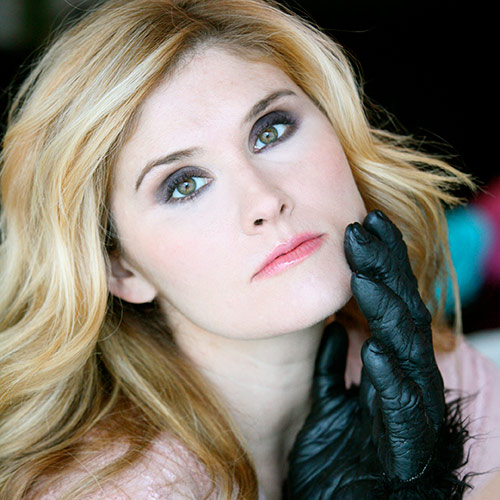
Squatchin’ Time!
SKEPTICALITY EPISODE 257
In this episode of Skepticality, Derek continues his series of special content he recorded while attending The Amazing Meeting 13. Just after she gave her talk on stage, Derek sat down with Natalia Reagan: anthropologist, writer, actress, and comedienne. Using her specialized knowledge in primatology, she was one of the judges on the television show, “10 Million Dollar Bigfoot Bounty.” Find out a bit more about how Natalia decided to leverage her advanced science degree and experience into a form of skeptical outreach which has been seen by millions.

NEW SCIENTIFIC AMERICAN COLUMN ON MICHAELSHERMER.COM
The Meaning of Life in a Formula: Can Science Help Us Overcome the Terror of Existence?
Harvard University paleontologist Stephen Jay Gould, who died in 2002, was a tough-minded skeptic who did not suffer fools gladly when it came to pseudoscience and superstition. Gould was a secular Jew who did not believe in God, but he had a soft spot for religion, expressed most famously in his principle of NOMA—nonoverlapping magisteria. The magisterium (domain of authority) of science “covers the empirical realm: what is the universe made of (fact) and why does it work this way (theory),” he wrote in his 1999 book Rocks of Ages: Science and Religion in the Fullness of Life. “The magisterium of religion extends over questions of ultimate meaning and moral value.”
In part, Gould’s motivations were personal (he told me on many occasions how much respect he had for religion and for his many religious friends and colleagues). But in his book, he claimed that “NOMA represents a principled position on moral and intellectual grounds, not a merely diplomatic solution.” For NOMA to work, however, Gould insisted that just as “religion can no longer dictate the nature of factual conclusions residing properly within the magisterium of science, then scientists cannot claim higher insight into moral truth from any superior knowledge of the world’s empirical constitution.” …
FOLLOW MICHAEL SHERMER ON
Twitter • Facebook • Insight • The Moral Arc Blog
About this week’s eSkeptic
Modern-day mystics have at their disposal a vast and ever-growing arsenal of scientific vocabulary, and employ it liberally in arguing for such practices as quantum healing and energy medicine, variants of which have in recent decades grown into billion dollar industries, supported by millions of consumers. Surely that many people can’t be wrong, can they? In this week’s eSkeptic, Jérémie Harris examines some of the vocabulary often invoked by mystics in the quantum healing community, and contrasts their usage of that vocabulary with current scientific definitions. This article appeared Skeptic magazine 20.1 in 2015.
Order the back issue.
Jérémie Harris is a Ph.D. student in quantum photonics under the Canada Excellence Research Chair in quantum nonlinear optics, at the Max Planck – University of Ottawa Centre for Extreme and Quantum Photonics. He holds a Master’s degree in biological physics from the University of Toronto. His work addresses foundational questions and paradoxes in quantum mechanics, and the creation of exotic structured matter waves.
Quantum Cure-All or Quackery?
Can Superpositions of Quantum Consciousness Unlock Your Brain’s Hidden Nonlocal Potentiality?
by Jérémie Harris
They were once called snake oil salesmen. Today, proponents of mystical healing and alternative medicine offer remedies for a plethora of diseases and conditions, promising pain relief, lifelong health, and even in some cases the prospect of life after death to anyone “open-minded” enough to pay for non-standard treatment. Modern-day mystics have at their disposal a vast and ever-growing arsenal of scientific vocabulary, and employ it liberally in arguing for such practices as quantum healing and energy medicine, variants of which have in recent decades grown into billion dollar industries, supported by millions of consumers. Surely that many people can’t be wrong, can they?
In what follows, we will look at a sample of quantum mechanical vocabulary often invoked by mystics, and contrast the correct scientific meaning of the terms with their usage in the quantum healing community. Quantum Superposition
In a report on her lecture at the European Quantum Energy Medicine Conference in 2008, Mae-Wan Ho, director of the Institute of Science in Society, wrote: “The quantum wave function that describes the coherent organism is a superposition of all possibilities. It implies that the future is entirely open, and the potentials infinite. That’s just what a healthy person should feel like.”1 This may sound like an impressive claim, but what exactly is meant by “superposition of all possibilities”?
Among the more counterintuitive features of quantum theory is its prediction that particles—and sometimes groups of them—can exist in multiple states at once. Hence, while we humans seldom find ourselves both asleep and awake simultaneously, the same cannot be said of the microscopic entities that comprise the quantum world. For instance, it is possible for a subatomic particle, such as an electron, to be bound to two or more different atoms at once; indeed, this arrangement is precisely what is involved in the formation of typical chemical bonds.
As well, electrons and many other subatomic entities may in some contexts be thought of as small rotating spheres. The direction of their rotation is referred to as their “spin”. An electron, for example, may spin clockwise or counterclockwise, in which case it is respectively referred to as occupying the “spin up” or “spin down” states. Remarkably, the electron may also spin in both directions simultaneously. Loosely speaking, one might think of such an electron as possessing some clockwise spin character, and some counterclockwise spin character.
To understand this apparent impossibility, it may be useful to draw a concrete analogy. Imagine that we can represent quantum states by colors, white corresponding to the spin up state, and black to the spin down state. An electron might be described by the color white, the color black, or any combination thereof—some shade of grey. This shade may be more black than white, or vice-versa, or an exact 50/50 mix of the two colors. A particle or physical system that exists in multiple quantum states simultaneously—like the“grey electron” in our analogy—is said to represent a quantum superposition of these states.
With this in mind, let’s return to Mae-Wan Ho’s use of the term “superposition” and to her conclusion that the “potentials” are infinite and the future “entirely open”, due to the existence of a superposition of states. The term “potential”—ubiquitous physics shorthand for “potential energy”—simply refers to energy stored in a physical system, like the elastic energy of a compressed spring. In quantum theory, the wavefunction (a mathematical object that describes a physical system) is determined by the potential energy, and not the other way around, as Ho seems to imply. Finally, Ho makes no attempt to explain the purported connection between the psychological state of a healthy person, and the “infinite” nature of the “quantum potential”. Instead, she flatly states this connection as fact, without elaboration or evidence.
Observer Effect
How is the observer effect discussed among quantum mystics? As with much of their jargon, it is difficult to find a consistent usage. That said, the following quotation—an excerpt from Deepak Chopra’s 2010 Huffington Post article entitled “Which is Real, the Moon or God?”—is a fairly representative example:2 “The observer is non-local consciousness, and that consciousness collapses its own possibility waves into a measurable event.” What does this mean? In our everyday experience, we are used to the idea that the measurement of any physical quantity invariably gives just one result. When we step on a scale and read the dial, we obtain a single number: a weight. Likewise, if we were to measure the direction in which a spinning top rotates, we would obtain a single result: clockwise or counterclockwise. Curiously, this remains true at the quantum level—even measurements carried out on quantum superpositions yield only one outcome. If we measure the spin of an electron that is initially rotating both clockwise and counterclockwise simultaneously, we always obtain one of two results: spin up or spin down.
To return to our earlier color analogy, this means that a grey electron, despite being part white and part black, will be found to be either white or black upon measurement. It is as if the electron, having originally spun in two directions at once, is forced to “choose” one direction over the other for the purpose of the measurement. In some sense, it is polarized from its initial grey state to a pure black or white state. And, it turns out, the darker the electron’s initial shade of grey, the more likely it is to yield the “black” result upon measurement.
Some therefore suggest that the measurement process itself leads to the destruction—or collapse— of superpositions, and their replacement by a single quantum state. In our analogy, this would correspond to replacing a grey electron with a black or white one.3 This apparent connection between the measurement process and the collapse of quantum superpositions is sometimes referred to as the observer effect. In essence, it is said, the observer can induce a physical system to collapse into a single state simply by measuring it.
How does this understanding square with Deepak Chopra’s claim that “the observer is nonlocal consciousness, and that consciousness collapses its own possibility waves into a measurable event”? That an observer might constitute a “non-local consciousness” is at best an ambiguous claim, and at worst reflects a profound misunderstanding of the observer effect. As we have seen, the true definition of the observer effect makes no reference to the nature of the observing entity. It need not necessarily be a conscious person; it can be an unconscious machine.4 The role that might be played by “non-locality” with respect to consciousness in this case is also unclear. This expression seems to simply have been misused—a remarkable achievement given the frequency with which it appears in Chopra’s writing.
Non-Locality
Noah McKay, quantum healer and author of Wellness at Warp Speed, invokes the concept of nonlocality in a medical context, as follows: “Non-local, invisible, energetic interactions with the body include everything from ECG [electrocardiograms], CT [X-ray computed tomography] and MRI [magnetic resonance imaging] scans to Qi-Gong, prayer, and psychic healing.”5
It may be somewhat surprising to learn that the MRI and CT scans to which many of us have been subjected operate by “non-local…energetic interactions with the body.” Indeed it should, because it is not true. So what is locality?
Einstein’s theories of special and general relativity tell us a lot about our universe. Among the myriad of fascinating and counter-intuitive features of relativity theory is the fact that nothing can travel faster than the speed of light, including the very forces of nature. As a consequence, two objects sufficiently far away from each other have no way of interacting—and cannot feel one another’s presence— until enough time has passed for light from one object to reach the other.
The sun, for example, is about 93 million miles away from Earth. Since light travels at around 11 million miles per minute, this means that it takes the sun’s rays about eight minutes to reach us. As a result, according to relativity theory, it takes a full eight minutes for us to feel any effect that the sun may have on our planet—including its gravity. So, if the sun were to disappear now, it would take eight minutes for the sky to blacken around us. Our planet would even continue in its regular orbit for eight minutes, before being ultimately flung out into the cosmic darkness.
The sun therefore has a near-immediate impact only on its local surroundings: the further an object is from the sun, the longer it takes for it to be influenced by the state of solar affairs. We therefore refer to relativity as a local theory, since it does not allow objects separated by a significant distance to interact instantaneously. What, then, does it mean for an effect to be non-local?
In short, any effect that propagates instantaneously, and which is therefore not limited by the speed of light, is said to be non-local. Now returning to McKay’s statement, it is worth noting that ECGs, CT scans, and MRI all operate by measuring electromagnetic fields, whose effects propagate no faster than the speed of light. There is nothing nonlocal about these phenomena. It is also not clear what McKay means by the “non-locality” of “Qi- Gong, prayer, and psychic healing,” as the concept would appear to have no relevance whatsoever to meditation or related practices.
Quantum Entanglement
Fred Garcia, founder and Medical Director of Quantum Medical Associates, a Los Angeles-based alternative medicine clinic, gives his account of the discovery of quantum entanglement—and its purported healthcare implications—in the following excerpt from his clinic’s webpage:6 “The quantum entanglement of body, mind & spirit was proven almost 100 years ago by Albert Einstein, Erwin Schrodinzer [sic], Werner Heisenberg, Neils Boar [sic] & Wolfgang Pauli.”
As a point of historical fact, quantum entanglement was first discussed by Einstein, Podolski and Rosen in 1935, and not by Einstein, Schrodinger, Heisenberg, Bohr and Pauli as Garcia claims. But what is quantum entanglement? Quantum entanglement simply describes a correlation between two or more particles, or groups of particles. Recall our spinning electrons: it is possible for two electrons to be spin-correlated in such a way as to make the total spin of the pair zero. In this case, to use our color analogy, if the electrons’ spins are measured, one electron will be white (spin-up), and the other black (spin-down). This pair of electrons would appear grey overall, since it is composed of one white and one black electron. When measured, one electron of the pair will be found to be black and the other white. As a result, if we find electron 1 to be black, we know electron 2 to be white, and vice-versa. But we cannot know which electron is which until we actually make a spin measurement. For this reason, the individual electrons themselves remain grey until measured.
The result is that a measurement of one electron’s spin will force both to collapse out of their grey superposition into opposite—black and white— states. By measuring the spin state of one electron, we have effectively measured its partner simultaneously. Notice that in so doing we collapsed the second electron out of its initial grey state without ever having interacted with it directly—electron 2 is collapsed because of a measurement executed on electron 1. Electrons whose spins are correlated in this way are said to be entangled.
This collapse effect must also be instantaneous; the moment we measure one electron’s spin, its partner immediately collapses out of its grey state, and assumes an opposite spin direction. These electrons might, in principle, be separated by a great distance at the time of the measurement, so the measurement of our electron’s spin must have a non-local effect on its partner. It is precisely this phenomenon that was so famously described by Albert Einstein as “spooky action-at-a-distance.” But this has nothing whatsoever to do with Garcia’s notions of “mind and spirit.” Entanglement simply represents correlations that can be observed between physical systems.
In addition, before entanglement could be “proven” between the body, mind and spirit, one would first need to demonstrate the existence of the mind and spirit. If this feat were ever to be accomplished, you would not likely be reading about it for the first time on a relatively obscure quantum healing website.
Complementarity
In a 2013 Huffington Post article entitled, “Can Reality Set Us Free? The Puzzle of Complementarity,” Deepak Chopra asserts: “Among many other things, complementarity tells a physicist why two particles separated by vast distances in space manage to act instantaneously together, as if they were next to each other, communicating with each other. By implication this seemingly technical term also applies to two neurons talking to each other far apart in the human brain, and indeed to all biological systems.”7
Let’s define complementarity to see if this makes sense. Imagine that you are shown a photograph of a baseball just released from a pitcher’s hand. You are asked to determine where the ball will be one second after the picture was taken. What would you need to know about the baseball to answer correctly? In our day-to-day classical world, we need to know two things about an object in order to predict its future trajectory: the position of the object at some earlier time (in this example, at the time the photograph was taken) and the object’s speed—or, more appropriately, its momentum—at that same earlier time. Position and momentum together can be used to provide a complete description of a classical object’s trajectory through space. It is in this sense that they may be thought of as complementary quantities.
However, when we enter the sub-microscopic scale of the quantum world, a funny thing happens: we find that notions of particle “position” and “momentum” quickly become murky and difficult to define. As it turns out, it is impossible to know with certainty the position or momentum of a sub-atomic particle. Further complicating matters, the higher the degree of precision with which we measure a particle’s position, the lower our certainty will be about its momentum. Consequently, the more we know about the particle’s momentum, the less we can know about its position. This trade-off is sometimes referred to as the uncertainty principle in quantum mechanics.

This article appeared Skeptic magazine 20.1 in 2015.
Order the back issue.
So the principle of complementarity comes down to this: in order to get a complete understanding of the state of a physical system, it is necessary to have complete information about a pair of complementary properties, such as position and momentum. However, the uncertainty principle prevents us from measuring complementary properties simultaneously at the sub-atomic level, so we must be content with a limited state of knowledge with respect to any physical system we may wish to study.
We are now in a position to see that Chopra’s description of complementarity has little, if anything, to do with its actual meaning. Chopra appears to have confused two of quantum mechanics’ foundational concepts: the principle of complementarity and the notion of quantum entanglement. He goes on to suggest that this principle must somehow apply to neurons, brains, and biological organisms. This assertion constitutes a remarkable leap in logic, particularly given that quantum entanglement has never been demonstrated between biological systems.
The Quantum Cure
The rise of quantum mysticism has exploited a fatal flaw in human reasoning, which may be partly to blame for our species’ broader superstitious bent. Unfortunately, we all too often assume that ideas which lie beyond our immediate intellectual reach must somehow be mutually supportive, or connected in some way. No real progress is made when we choose to explain one mystery by another. ![]()
References
- Ho, Mae-Wan. 2008. “Quantum Coherent Liquid Crystalline Organism.” The Institute of Science in Society. 1 Oct. Web. 1 July 2014.
- Chopra, Deepak. 2010. “Which Is Real, the Moon or God?” HuffingtonPost.com, 22 March.
- This is the perspective adopted by proponents of the Copenhagen Interpretation of quantum mechanics, but remains a matter of heated debate among physicists today. As a result, the observer effect remains highly controversial, and has led many to advocate for alternative formulations of quantum mechanics, many of which have gained significant traction. The Many Worlds interpretation of quantum mechanics is one such perspective.
- The exact definition of the “observer” is unclear and inconsistent to this day, even among adherents to the popular Copenhagen Interpretation. Different interpretational perspectives (eg. Decoherence, Many Worlds and Bohmian quantum mechanics) explain the apparent “collapse” of quantum superpositions without appealing to the existence of observers at all.
- McKay, Noah. 2014. Dr. Noah’s Wellness Seminars.
- Garcia, Fred. 2013. “Quantum Medicine.” New Age Medicine. Quantum Medical Associates, 1 Jan. 2013.
- Chopra, Deepak. 2013. “Can Reality Set Us Free? The Puzzle of Complementarity.” HuffingtonPost.com, 29 April.
eSkeptic for July 29, 2015
In this week’s eSkeptic:
CONFERENCE VIDEOS
These following lectures and events were recorded on Saturday, May 30, 2015 at the Skeptics Society’s conference In the Year 2525: Big Science, Big History, and the Far Future of Humanity. Watch these videos for free.
Mistakes Made by People and Nations that Hurt Their Futures
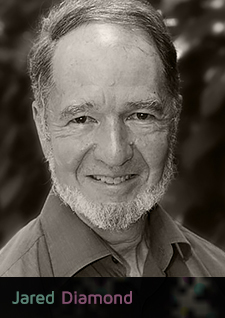
The Future of Human Health & Longevity

Mathemagics & the Future of Math


About this week’s eSkeptic
Are We All Potentially Evil? A new dramatic film based on the Stanford Prison Experiment reveals why good people turn bad. In this week’s eSkeptic, Michael Shermer discusses the film, the original experiment by Philip Zimbardo, and the triad of general principles behind evil posited by Zimbardo: the Person, the Situation, and the System.
This article was originally published on HuffingtonPost.com on July 27, 2015, and also on MoralArc.org today.
Dr. Michael Shermer is the Publisher of Skeptic magazine, a monthly columnist for Scientific American, a Presidential Fellow at Chapman University, and the author of The Moral Arc. His previous books include: The Believing Brain, Why People Believe Weird Things, Why Darwin Matters, The Mind of the Market, How We Believe, and The Science of Good and Evil.
Are We All Potentially Evil?
A new dramatic film based on the Stanford Prison Experiment reveals why good people turn bad
by Michael Shermer
The barbaric acts of ISIS in the Middle East and elsewhere (including lone wolf acts here and in Europe) have renewed the use of an adjective most commonly affiliated with Nazis—evil. In fact, British Prime Minister David Cameron evoked Hitler in his recent speech outlining a five year plan to combat Islamic extremism, starting with the acknowledgment that it is an ideology, and “Like so many ideologies that have existed before—whether fascist or communist—many people, especially young people, are being drawn to it. So we need to understand why it is proving so attractive.” Another way to say it is this: why do good people turn bad?

Anyone who has taken an introductory psychology course or has ever glanced at the scientific literature on the psychology of evil is familiar with Philip Zimbardo’s now-famous experiment conducted in a make-shift prison in the basement of the psychology building at Stanford University in August, 1971, in which the social psychologist randomly assigned 24 student volunteers to be either guards or prisoners. The experiment was to last two weeks but Zimbardo had to terminate it after six days when these intelligent and educated young men were transformed into cruel and sadistic guards or emotionally shattered prisoners. Not a formal experiment per se—with control and experimental groups for comparison—a flip of a coin to determine whether a student subject would be assigned to play guard or prisoner allows us to draw conclusions about the power of the situation to effect similar people dissimilarly.
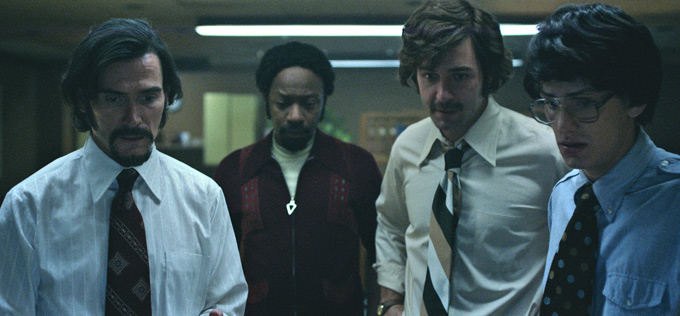
Over the decades much has been written about the Stanford Prison Experiment (SPE), both in scholarly journals and in popular publications, and a number of documentaries have been made using archival footage shot by Zimbardo’s team. But now for the first time a major motion picture has been produced by IFC Films, directed by Kyle Patrick Alvarez and written by Tim Talbott, with script consultation by Zimbardo and based on the transcripts of the dialogue between guards and prisoners reprinted in his 2007 book The Lucifer Effect: Understanding How Good People Turn Evil. (Order the book from Amazon or Watch the lecture now, on Vimeo on Demand.) Unlike most filmic reenactments of real-life events in which considerable poetic license is taken to punch up the drama, none is needed for this film because the subjects themselves produced enough gravitas to keep the narrative arc moving toward its shattering conclusion. The tight-space cinematography well captures the claustrophobic nature of the faux basement prison, the editing and music pulls the audience into the prison cells and connecting hallway, and the coarse and profanity strewn dialogue (all real) shows the thin patina of civility covering the potential incivility that lies within even the most well-balanced psychologically healthy middle-class white college students (Zimbardo had them all tested for normalcy before the experiment began). If you, like most people (myself included) think “I would never do such a thing to another human being”, see this film and think again. The evidence from the SPE and research since indicates otherwise—the potential for evil is in all of us.

In this sense The Stanford Prison Experiment engages us on both emotional and intellectual levels to consider the nature of good and evil from a scientific perspective, In brief, as outlined in my 2015 book The Moral Arc, the dispositional theory holds that evil is the result of bad dispositions in some people (a few bad apples), whereas the situational theory holds that evil is the product of corrupting circumstances (bad barrels that corrupt apples). The dispositional theory of evil is the one most commonly embraced by religion (original sin), medicine (internal disease), psychiatry (mental illness), and the law (personal culpability), whereas the situational theory of evil is more conventionally invoked by social psychologists, sociologists, and anthropologists sensitive to the diversity and power of environments to shape human behavior.
In point of fact both of these theories contain an element of truth: by disposition we have the capacity for good and evil, with the behavioral expression of them dependent on the situation and whether we choose to act. That is, we all have the capacity to commit evil deeds, but the expression of such acts very much depends on circumstances and conditions. As Aleksandr Solzhenitsyn observed in The Gulag Archipelago:
If only there were evil people somewhere insidiously committing evil deeds, and it were necessary only to separate them from the rest of us and destroy them. But the line dividing good and evil cuts through the heart of every human being. And who is willing to destroy a piece of his own heart?
In my model of morality, our dual dispositional nature of good and evil arose from our evolutionary history as a social primate species practicing within-group amity and between-group enmity. In order to survive as individuals we must get along with our fellow in-group members, and this led to the evolution of such moral emotions as empathy, cooperation, and trust. These pro-social tendencies gave us a good disposition. But because of the very real threat that strangers posed in the environment of our evolutionary ancestry natural selection also shaped us to have such emotions as xenophobia, competitiveness, and violence. These anti-social tendencies gave us an evil disposition.

When I entered a graduate program in experimental psychology in the late 1970s Philip Zimbardo was already a legend. In an extensive interview I conducted with him in 2007 while researching my book The Mind of the Market (summarized here), Zimbardo explained how he became interested in this dark subject. Born in the south Bronx and raised in poverty by uneducated Sicilian parents, Zimbardo saw first hand the bleaker side of humanity, expressed when people find themselves in impoverished environments with unenforced laws and openly expressed distrust. As a young professor just recently hired by Stanford University, he returned to his old haunts to set up an experiment to see what would happen to an apparently abandoned vehicle left there, compared to one parked on the streets of the upscale neighborhood of Stanford’s Palo Alto. In the Bronx, the car started being stripped before the research team could finish setting up their hidden cameras. In only one day there were 23 assaults on the helpless automobile. In Palo Alto, by contrast, the car went untouched until Zimbardo finally gave up and drove it back to campus, at which time three neighbors called the police to report an abandoned car was being stolen. Such a striking difference cannot be the result of differential dispositions between New Yorkers and Californians. Quite obviously the difference was in the neighborhoods. What were those differences?

This is the question Zimbardo set out to answer in the basement of the Stanford psychology building. To add to the realism, the students assigned to be prisoners were arrested at home by members of the local Police Department, were brought to the prison in squad cars, then were sprayed for lice and forced to stand naked during orientation before they were finally given drab prison garb and crammed into 6-by-9 foot cells. For their part, the guards were given clubs, whistles, keys to the prison cells, and mirrored sunglasses (“an idea I got from the film Cool Hand Luke,” Zimbardo explained). Over the next couple of days these psychologically well-adjusted students were transformed into either the role of violent, authoritative guards or demoralized, impassive prisoners. The experiment was to last for two weeks. Zimbardo’s girlfriend at the time (now his wife of nearly 40 years), Christina Maslach, after seeing the guards abusing the prisoners during their late night toilet run—with bagged heads and chained ankles—insisted that Zimbardo end it before someone was seriously hurt (“She told me she wouldn’t marry me if I was the sort of person who would allow such a thing to happen” he recalled). At that moment he realized that he had become part of the experiment in the role of prison superintendent. “I called off the experiment not because of the horror I saw out there in the prison yard,” he explained in the technical write up of the experiment, “but because of the horror of realizing that I could have easily traded places with the most brutal guard or become the weakest prisoner full of hatred at being so powerless that I could not eat, sleep, or go to the toilet without permission of authorities.”
I asked Zimbardo how he views the experience decades later. “The message of my little Stanford Prison Experiment is that situations can have a more powerful influence over our behavior than most people appreciate and few people recognize,” he began. “Social psychologists like myself have been trying to correct the belief that most people hold that evil is located only in the disposition of the individual—in their genes, their brains, their essence—and that there are good apples and there are bad apples.” But, I rejoined, there are bad apples, no? Yes, of course, Zimbardo conceded the point, but the vast majority of evil in the world is not committed by those few bad apples; instead, it is ordinary people doing extraordinary things under certain circumstances. Zimbardo prefers to err on the side of granting people the benefit of the doubt. “Before we blame individuals, the charitable thing to do is to first find out what situations they were in that might have provoked this evil behavior. Why not assume that these are good apples in a bad barrel, rather than bad apples in a good barrel?”
How can we tell the difference between good and bad apples, and between good and bad barrels, I pressed? “When I launched my experiment at Stanford we knew these students were good apples because we gave them a battery of tests—personality tests, clinical interviews, we checked their background, etc., and every one of them was normal. Then we randomly assigned them to be guards or prisoners. So, on day one they were all good apples. Yet within days, the guards were transformed into sadistic thugs and the prisoners were emotionally broken.” Zimbardo’s bad barrel turned good apples rotten.

The Stanford Prison Experiment film stays in its time period and offers little in the way of deeper reflection on its meaning, but what pushed Zimbardo to finally write a deep analysis of what he discovered was the atrocities at Abu Ghraib that came to light in 2003. The shocking photographs reminded him of the SPE. “Believe me,” he told me, “what we have all seen on television is just the tip of the iceberg. The abuses were much worse than you can imagine when you see all of the uncensored photographs.” He shared some of these photographs with me and it’s true—these uncensored scenes almost beggar description. You wince when you see them. How could the people who did this not embody pure evil? It depends on what we mean by evil. Zimbardo defines it in The Lucifer Effect thusly: “Evil consists in intentionally behaving in ways that harm, abuse, demean, dehumanize, or destroy innocent others—or using one’s authority and systemic power to encourage or permit others to do so on your behalf.” More succinctly, and incorporating room for free will and moral culpability, evil is “knowing better but doing worse.”
When the Abu Ghraib story broke it wasn’t long before the media made the same connection to the Stanford Prison Experiment that its Principle Investigator had, and Zimbardo soon found himself on NPR and other media outlets to discuss the similarities. Shortly thereafter he was contacted by one of the attorneys representing Staff Sergeant Ivan “Chip” Frederick, the military policeman in charge of the night shift on Tiers 1A and 1B, the most abusive cellblocks in that most abusive of Iraqi prisons. Without denying Frederick’s culpability in the Abu Ghraib abuses (Frederick admitted his own guilt), Zimbardo wanted to go deeper to explore the environment that enabled the torture, abuse, and humiliation of the prisoners there. Zimbardo did not so much defend Frederick as implicate the chain of command above Frederick with complicity in the crime. Zimbardo agreed that Frederick should have been punished for his actions, but the punishment should fit the crime and we should hold accountable Frederick’s superiors who enabled or even encouraged such abuses. Instead, those who fashioned the environment in which Frederick acted walked free while Frederick was given an eight-year sentence at Fort Leavenworth (he was released after four years).

Research psychologists typically employ what is known as an A-B-A experimental protocol, that is, pre-test—test—post-test. Pre- and post-test comparisons with the behaviors during the test allow us to tease out causal variables. In this model, Zimbardo told me that before he went to Iraq, Chip Frederick was an all-American patriot, “a regular church-going kind of guy who raises the American flag in front of his home each day, gets goose bumps and tears up when he listens to our National Anthem, believes in American values of democracy and freedom, and joined the army to defend those values.” Frederick, in fact, was a model soldier, earning numerous awards, including the Army Achievement Medal three times, the Army Reserve Components Medal four times, the National Defense Medal twice, the Armed Forces Reserve Medal, the Army Service Ribbon, the Global War on Terrorism Medal, and others. He was about to receive a coveted Bronze Star when the Abu Ghraib abuse story broke. After the story broke about the abuses at Abu Ghraib, Zimbardo arranged for a military clinical psychologist to conduct a full psychological assessment of Frederick through a battery of tests, as well as bringing Frederick and his wife, Martha, to San Francisco in order to better know the person behind the MP uniform.
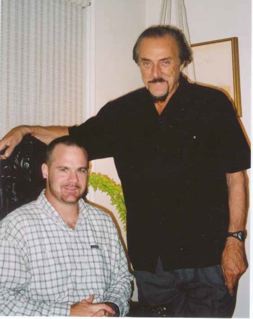
The psychological assessments of Frederick indicated that he was by all counts a perfectly normal guy, average in intelligence, average in personality, with “no sadistic or pathological tendencies,” and with only one outlier trait: “Validity scales indicate the patient presented himself as a morally virtuous individual.” To Zimbardo, these results “strongly suggest that the ‘bad apple’ dispositional attribution of blame made against him by military and administration apologists has no basis in fact.” After he was convicted Frederick penned a letter to Zimbardo from prison in which he confessed (in The Lucifer Effect): “I am proud to say that I served most of my adult life for my country. I was very prepared to die for my country, my family and friends. I wanted to be the one to make a difference.”
In the A-B-A model, before Abu Ghraib Chip Frederick was normal. At Abu Ghraib he was abnormal. After Abu Ghraib he was once again normal. What does this tell us? “There is absolutely nothing in his record that I was able to uncover that would predict that Chip Frederick would engage in any form of abusive, sadistic behavior,” Zimbardo concluded. “On the contrary, there is much in his record to suggest that had he not been forced to work and live in such an abnormal situation, he might have been the military’s All-American poster soldier on its recruitment ads.”
Pulling back from this specific case to the general principles behind evil, Zimbardo posits a triad of factors—the Person, the Situation, and the System—and how together and in interaction with one another they can lead a good person to perform evil acts. Here we see an integration of the dispositional theory of evil (the Person), the situational theory of evil (the Situation), and a third component Zimbardo only added after his investigation of Abu Ghraib—the larger context in which the person and situation co-exist (the System). “When I was reading the reports about Abu Ghraib I wanted to know who creates these situations that enables evil?” he recalled in our interview. “The system is the bigger barrel: legal, economic, historical, political forces that gives these situations legitimacy. And most systems have a shield so that there is no transparency. Top politicians like Bush and Cheney have to cater to particular voters and donors, and those voters and donors will be part of a political or religious or corporate system that enables them to say, in essence, if you want our votes or our dollars, you have to go along with what we believe.”
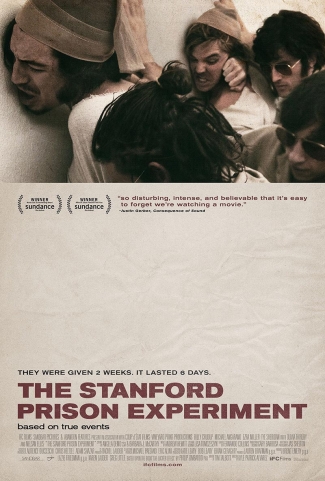
Wait, I wonder aloud. Does this mean that everyone from George W. Bush and Dick Cheney at the top to Chip Frederick and Lynndie England at the bottom are absolved of responsibility? Does explanation equal exoneration? Sensing my unease at the implications of where all this science leads, Zimbardo quickly rejoined: “What happened at Abu Ghraib was inexcusable, but it was not inexplicable. I cannot repeat this caveat enough: to explain something is not to excuse it.” He recalled an incident in Washington D.C. when he was testifying in another matter when he was accused of being an “excuseologist.” The label stung. “We’re not excusing anything. We’re scientists who, like all scientists, want to understand the cause of things, in this case evil behavior.”
Watching The Stanford Prison Experiment film you will be tempted—as I was—to moralize about the accursed guards and sympathize with the guiltless prisoners. Such is the power of a good film. But after your moral emotions subside think like a scientist and consider why good people turn bad, and what we can all do to prevent future evils. ![]()
The Apostate
Would anyone knowingly join a religion with a draconian apostacy clause? I don’t think so.
eSkeptic for July 22, 2015
In this week’s eSkeptic:
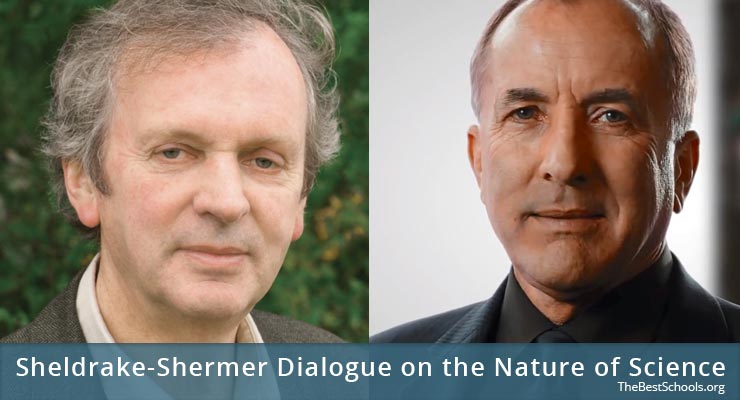
DIALOGUE ON THE NATURE OF SCIENCE
Rupert Sheldrake & Michael Shermer
Since May, TheBestSchools.org has hosted an intensive dialogue on the nature of science between Rupert Sheldrake and Michael Shermer.
The entire dialogue is now available online, and includes discussions on: Materialism in Science, Mental Action at a Distance, and God and Science.

Hello Reality
SKEPTICALITY EPISODE 256
With The Amazing Meeting ending only a couple days ago, Derek doesn’t wait to give you the first recorded interview from the event. Derek talks with Jim Baggott, author of many books on the nature of reality and physics. In his latest work, Farewell to Reality: How Modern Physics Has Betrayed the Search for Scientific Truth, Baggott argues that there is no observational or experimental evidence for many of the ideas of modern theoretical physics: super-symmetric particles, super strings, the multiverse, the holographic principle, or the anthropic cosmological principle. These theories are not only untrue, they are not even science. It is fairy-tale physics: fantastical, bizarre and often outrageous, perhaps even confidence-trickery.

FEATURE ARTICLE
Fine-Tuning and the Multiverse
For years theologians and Christian apologists have convinced themselves and their followers that they have a knock-out scientific argument for the existence of God. They claim that the parameters of physics are so finely tuned that if any one of these parameters were just slightly different in value, then life would not be possible anywhere in the universe.
The solution to the fine-tuning problem that is regarded as the most plausible by physicists and cosmologists is that our universe is just one of an unlimited number of individual, uncreated universes collectively called the multiverse that extend for an unlimited distance in all directions and for an unlimited time in the past and future. We just happen to live in the particular universe that is suited for our kind of life. Our universe is not fine-tuned for us; we are fine-tuned to our universe.
In this essay, as a follow-up to his book, The Fallacy of Fine-Tuning: Why the Universe Is Not Designed for Us (in which he showed that, based on our knowledge of this universe alone, divine fine-tuning claims are without merit), Victor J. Stenger brings the arguments up-to-date with a discussion of the eternal multiverse hypothesis. This article was published in Skeptic magazine issue 19.3 in 2014.
Fine-Tuning and the Multiverse
In this essay, as a follow-up to his book, The Fallacy of Fine-Tuning: Why the Universe Is Not Designed for Us (in which he showed that, based on our knowledge of this universe alone, divine fine-tuning claims are without merit), Victor J. Stenger brings the arguments up-to-date with a discussion of the eternal multiverse hypothesis. This article was published in Skeptic magazine issue 19.3 in 2014. Order the back issue.
For years theologians and Christian apologists have convinced themselves and their followers that they have a knock-out scientific argument for the existence of God. They claim that the parameters of physics are so finely tuned that if any one of these parameters were just slightly different in value, then life would not be possible anywhere in the universe.
Assuming—on no basis whatsoever—that those parameters are independent and could have taken on any value over a wide range, they conclude that the probability of a universe with our particular set of parameters is infinitesimally small. Further assuming—also on no basis whatsoever—that the probability of a divine creator is not equally infinitesimally small, they conclude that a creator fine-tuned the universe for life. Note that there is also no basis whatsoever to assume CONTINUE READING THIS POST…
TAGS: fine-tuning, Intelligent Design, multiverse, physicseSkeptic for July 15, 2015
In this week’s eSkeptic:

Conclusions
MonsterTalk # 100
In the 100th episode of MonsterTalk: The Science Show About Monsters, DNA researcher and author Bryan Sykes discusses the research behind his landmark book The Nature of the Beast: The First Genetic Evidence on the Survival of Apemen, Yeti, Bigfoot and Other Mysterious Creatures into Modern Times; plus, thoughts and reflections on 100 episodes of MonsterTalk, including hearing from many listeners about their own favorite monsters…
Top 10 Most Popular Episodes of MonsterTalk
Click a title below to read detailed episode notes and listen to the 10 most popular episodes of MonsterTalk, starting with our most popular episode on ancient alien astronauts:
- Ancient Alien Astronauts
- Dr. Ken Feder, author of Frauds, Myths, and Mysteries, on ancient alien astronauts
- Cthulhu Rises
- Robert M. Price on the life of H.P. Lovecraft, the history of the Cthulhu Mythos, religious beliefs and racism; plus PZ Myers on the biology and physiology of cephalopods
- Bigfoot DNA
- Dr. Todd Disotell on his various appearances on cryptozoology television shows as the DNA expert
- The Columbus Poltergeist (featuring James Randi)
- James “The Amazing” Randi on the story of Tina Resch and the paranormal phenomena known as a poltergeist
- Squatching with The Krampus
- Scott Herriott, host of The Bigfoot Show, on his personal quest to find Bigfoot—and the people he’s met in that search
- Sasquatch: Ketchum If You Can
- Dr. Todd Disotell on Melba Ketchum’s Sasquatch DNA research
- The Warren Omission
- Joe Nickell and Steven Novella on the story of Ed and Lorraine Warren and demonic forces in Rhode Island
- Speak of the Devil
- Robert M. Price on the biggest and most well known villain in Western culture: Satan
- Monsters in America
- Dr. Scott Poole on the history of monsters from colonial America to modern times
- Fangs That Go Bump in the Night
- Richard Sugg on his fascinating research into historic vampire cases
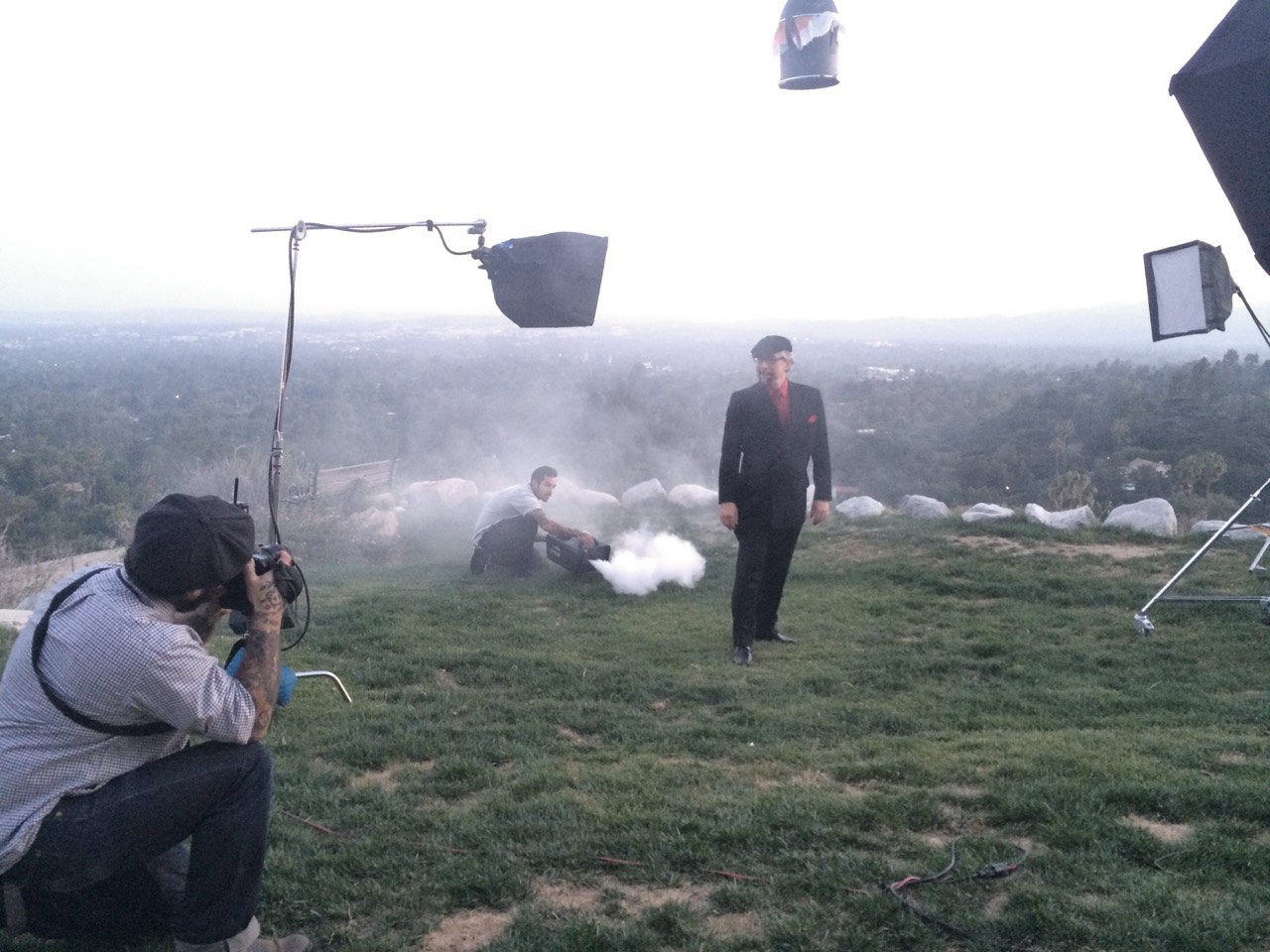
Jamy Ian Swiss in a photoshoot, at the home of Michael Shermer, after the 2015 Skeptics Society Conference, “In the Year 2525: Big Science, Big History, and the Far Future of Humanity.” If you missed the conference, be sure to check out our post-conference report.
About this week’s eSkeptic
The human tendency to organize information even where no useful information exists appears to be hardwired into our brains. In this week’s eSkeptic, we present on article from the archives of Skeptic magazine issue 5.1, from 1997 wherein professional magician Jamy Ian Swiss discusses critical thinking as a way of protecting ourselves from the threat of deception.
Jamy Ian Swiss professional magician, a co-founder of the National Capital Area Skeptics; a co-founder of the New York City Skeptics; has spoken and performed across the U.S. on behalf of the Center For Inquiry; has been a contributor to Skeptic magazine; is a co-producer and on-stage host of the Northeast Conference on Science & Skepticism; has presented or performed annually at James Randi’s “The Amazing Meeting” since its inception in 2003; and is a past Senior Fellow of the James Randi Educational Foundation for which he has served as a blogger, creator of the Honest Liar video commentaries, and continues to help administer the foundation’s Million Dollar Challenge.
The Limits of Critical Thinking
by Jamy Ian Swiss
The recent self-inflicted deaths of 39 members of the Heaven’s Gate cult raises challenging questions for skeptics. We are tempted to point in horror and issue our own doomsday admonitions: “Warning! Danger! These are the hazards of belief in UFOs and other goofy stuff! Beware! Lack of critical thinking skills equals madness equals death!” If only these particular victims had read Randi’s Flim-Flam!, they might be living, productive members of society today.
Or maybe not.
My experience with deception has proven to me that the human brain is evolutionarily programmed to be readily manipulated, whether by the likes of itinerant conjurors like myself and James Randi or by virulent megalomaniacs like Marshall Herff Applewhite. The human tendency to organize information even where no useful information exists appears to be hardwired into our brains. It was there for the first aboriginal rain dance, and it’s here today for the most contemporary forms of magical thinking. That tendency to organize, to look ahead and be creative and surmise from thin evidence is a distinctly human trait, as responsible for the greatness of the human condition as it is for its follies and failings. Our human “big brain” is an accident of evolution that may well be our salvation or undoing as a species, with its abilities to invent, create, explore and imagine, or to become addicted, depressed, or believe incredibly dangerous ideas in the face of all evidence to the contrary.
When we see the apparently placid willingness of the Higher Source cult members to fulfill their grisly task of self-destruction, it is difficult to view them as victims. Considering the patently ludicrous ideas the cult based its belief system on, it’s tempting to write the followers off as cranks who were victims only of their own willful stupidity. But the phenomenon of cultism is characterized by distinctly manipulative practices of recruitment and maintenance that must be considered independently of the particular belief system they happen to be promoting. Toxicly effective cult leaders like Herff Applewhite will always produce followers who swear to their willing allegiance and free choice just as the observer of a magic trick will swear he never looked away the whole time the magician’s spoon was magically bending. Both victims are certain they had all the information necessary to make a capable judgment.
The issue of psychological manipulation is a graduated continuum, from the person fooled by the spoon-bender to the cult victim controlled to the point of suicide. But if the cult member is a victim of a psychological predator, what about those in the free marketplace of ideas who elect to repudiate conventional medicine and sign on with a homeopathic practitioner? The wiring flaws of the human brain notwithstanding, isn’t the homeopathy user a victim of willful ignorance?
Such individuals have to be given full responsibility for their lives to muck about with as they wish. We are overwhelmed by such examples of “epistemological hedonism,” i.e., if it feels good, believe it. Education doesn’t protect those who believe irrespective of facts and information. Those who become hostile and defensive the moment we question, for example, the concept of astrology do so because such questions challenge their entire view of world and self, not simply—as skeptics are inclined to consider it—the specific facts concerning a narrow subject matter, easily disproved. As skeptical educators we must do more than simply provide cautionary signposts detailing a shopping list of road hazards labeled astrology, ufology, and a host of other pseudologies. We recognize that we must encourage broad-based thinking skills to help inoculate people against malicious crackpottery. That training must begin early in life, because it is the rare adult who comes to recognize the logical flaws in their own longstanding belief system. Our task is to teach the young—along with anyone else who will listen—to think for themselves, so that they can use these skills throughout their lives. Rational inquiry isn’t merely an academic exercise or a chore that protects us from danger. Critical thinking enhances individual responsibility by liberating us to assess risk and embrace informed choice and thereby more fully savor the human experience. Unfortunately, thinking will never be foolproof protection against the threats of deception; fools can be very determined, as can the inclination to be fooled. Thinking is merely our best chance. ![]()
eSkeptic for July 8, 2015
In this week’s eSkeptic:

NEW SCIENTIFIC AMERICAN COLUMN ON MICHAELSHERMER.COM
Outrageous—Why cops kill
The ongoing rash of police using deadly force against minority citizens has triggered a search for a universal cause—most commonly identified as racism. What in the brains of cops or citizens leads either group to erupt in violence? An answer may be found deep inside the brain, where a neural network stitches together three structures into what neuroscientist Jaak Panksepp calls the rage circuit. Read about it in Michael Shermer’s July ‘Skeptic’ column from Scientific American.
FOLLOW MICHAEL SHERMER ON
Twitter • Facebook • Insight • The Moral Arc Blog



In a 1725 copper etching, huntsmen approach a moose felled by epilepsy. (A Compleat History of Druggs originally written in French by Monsieur Pomet, translated and expanded by Mess. Lemery and Tournefort. London, 1725. Printed with permission of the Huntington Museum, Pasadena, CA.) Click image (above) to enlarge it.
About this week’s eSkeptic
Have you ever gone cow tipping, or do you know someone who says they have? Where in the world did this strange idea come from? In this week’s eSkeptic, Pat Linse examines the surprising origins of cow tipping. This article was originally published in Skeptic magazine 20.1 (2015).
Pat Linse is an award winning illustrator who specialized in film industry art before becoming one of the founders of the Skeptics Society, Skeptic magazine, and the creator of Junior Skeptic magazine. As Skeptic magazine’s Art Director, she has created many illustrations for both Skeptic and Junior Skeptic. She is co-editor of the The Skeptic Encyclopedia of Pseudoscience.
The Legend of the Falling Beast
Cow Tipping’s Surprising Origins
by Pat Linse
Istarted to hear the story as soon as I moved to Los Angeles in the 1970s: “Have you ever gone cow tipping?” the twenty-something guy would brag. “It’s hilarious! You drive out into the country late at night and find a bunch of sleeping cows—they sleep standing up with their legs locked, you know—and wham!—you shove them over before they know what’s happened. Boy, are they surprised!”

This article was originally published in Skeptic magazine 20.1 (2015).
Of course cow tipping is an urban legend as explained in the article above, from from Junior Skeptic # 5, bound within Skeptic magazine issue 7.2 (pages 100–101). Cows don’t sleep standing up, their legs do not lock, and they are generally too big for a puny human to topple. They don’t even sleep at night, resting instead in five minute naps thoughout the 24-hour day.
One of the oddest parts of the cow tipping story is the claim that a cow sleeps standing up “on locked legs” that are so ridged and unbending that it can be easily pushed over. Where in the world did this strange idea come from? It turns out that the story comes from Europe and it’s been around for at least 2000 years. The famous Roman general Julius Caesar recorded this fantastic account of how to hunt easy-to-tip animals that lived in the dense forests that covered what is now southern Germany:
There are also (animals) which are called elks [The animal known as a moose in America is called an elk in Europe]. The shape of these, and the varied color of their skins, is much like roes [deer], but in size they surpass them a little and are destitute of horns, and have legs without joints and ligatures; nor do they lie down for the purpose of rest, nor, if they have been thrown down by any accident, can they raise or lift themselves up. Trees serve as beds to them; they lean themselves against them, and thus reclining only slightly, they take their rest; when the huntsmen have discovered from the footsteps of these animals whither they are accustomed to betake themselves, they either undermine all the trees at the roots, or cut into them so far that the upper part of the trees may appear to be left standing. When they have leant upon them, according to their habit, they knock down by their weight the unsupported trees, and fall down themselves along with them. Ceasar’s Gallic Wars—Book 6, Chapter 27 [6.27] about 58–51 BCE
This same hunting tall tale was also told in ancient times about the elephant and the asian tapir. About 100 years after Caesar another Roman, Pliny the Elder, wrote about an animal with a long nose he called an “achlis,” that seemed to have both moose and elephant traits:
The North, too, produces herds of wild horses, as Africa and Asia do of wild asses. There is also the achlis, which is produced in the island of Scandinavia; it is not unlike the elk, but has no joints in the hind leg. Hence, it never lies down, but reclines against a tree while it sleeps; it can only be taken by previously cutting into the tree, and thus laying a trap for it, as otherwise, it would escape through its swiftness. Its upper lip is so extremely large, for which reason it is obliged to go backwards when grazing; otherwise, by moving onwards, the lip would get doubled up. Pliny the Elder’s Natural History, 77 CE.
The story that an elk could be easily captured because it couldn’t get back up after it fell to the ground was passed down through the centuries as part of medical folklore. Books listing medical herbs and magical cures declared that elk suffered from “the falling disease” which we know today as epilepsy. Legend had it that an elk could cure its own epilepsy by striking itself with its hoof, so it was thought that taking powered elk’s hoof as a medicine, or wearing a ring carved from elk’s hoof on your finger, or even wearing a gold pendant set with a scrap of hoof would ward off the disease.
The story that European elk were susceptible to fits of falling made it across the Atlantic to the Americas. As late as the mid-1800s the famous author and medical doctor Oliver Wendal Holmes complained that some superstitious American physicians still prescribed elk’s hoof (or even horse’s hooves) for epilepsy. Did the old falling elk legend inspire the modern cow tipping story? Both are a bragging tale where a large animal is captured at night because of its unusual sleeping habits, but that in itself might not be enough to say the stories are related.
But both stories depend on the same ridiculous idea—that the animals suffer from a weakness that makes them easy prey—that they are easily toppled because of their stiff, unbending legs. Simple observation should have quickly killed this belief off. Just by spending a few minutes watching elk, moose, or cattle, anyone can see that they bend their legs, lay down to rest or sleep, and that they can easily get up again. Did the same mistaken belief—easily corrected by observation— arise twice, and was it twice perserved by being applied to two identical hunting tall tales? More likely the older story influenced the newer one in which urban tale tellers replaced the elk or moose with a more familiar animal. ![]()
Cow Tipping:
The Most Urban of all Urban Legends
The Most Urban of all Urban Legends
The following article, written for children, is from Junior Skeptic # 5 on Urban Legends, published in Skeptic magazine issue 7.2 (1999). Click image below to enlarge it.
We call this the most urban (city-like) of all Urban Legends because it’s a story believed by city folk, although farm people have been known to tell it as a tall tale. Anyone who has ever worked closely with cows knows that almost every statement in the cow tipping story is false (as we will explain below). But you will probably find that you don’t have to ask very many people to find someone who absolutely swears they tipped cows over exactly the way it’s described in the cartoon above.
Why People Who Know About Cows Think That the Cow Tipping Story is Largely an Urban Legend
Cartoon panel 1 (top of this article): There is no such thing as a cow “locking its legs.” They don’t have to because cows sleep lying down (people may be confusing them with horses which do sleep standing up).
eSkeptic for July 1, 2015
In this week’s eSkeptic:
A History of Life’s Vital Essence (Part 1): Fire and Gods
Mike McRae provides a glimpse into the history of two competing systems of biology: life as complex chemistry, and the abandoned theory of vitalism. (Part 1 of 3)
A History of Life’s Vital Essence (Part 2): Vital Thinking
Mike McRae provides a glimpse into the history of two competing systems of biology: life as complex chemistry, and the abandoned theory of vitalism.
The Odds Must Be Crazy?
Daniel Loxton shares a video from The Odds Must Be Crazy about a coincidence he experienced at a skeptics convention in 2014.
What the Heck is a Biostratigrapher?
Listen as a quick and easy 10-minute radio interview explains how fossils help scientists to reconstruct the geological history of the Earth.

About this week’s eSkeptic
Have you ever questioned your faith, or worried about what life would be like without it, or do you know someone who has? Have you ever wrestled with issues of how to replace religious practices and ideas with secular ones? In this week’s eSkeptic, Donald Prothero reviews Living the Secular Life: New Answers to Old Questions: a book by Phil Zuckerman that addresses these topics.
Dr. Donald R. Prothero earned MA, M.Phil, and PhD degrees in geological sciences from Columbia University, and a BA in geology and biology from the University of California, Riverside. He is currently the author, co-author, editor, or co-editor of 32 books and over 250 scientific papers, including five leading geology textbooks and five trade books as well as edited symposium volumes and other technical works. He is on the editorial board of Skeptic magazine, and in the past has served as an associate or technical editor for Geology, Paleobiology and Journal of Paleontology. He was Professor of Geology at Occidental College in Los Angeles, and Lecturer in Geobiology at the California Institute of Technology in Pasadena. He has also been featured on several television documentaries, including episodes of Paleoworld (BBC), Prehistoric Monsters Revealed (History Channel), Entelodon and Hyaenodon (National Geographic Channel) and Walking with Prehistoric Beasts (BBC).
The Times, They are a Changin’
by Donald R. Prothero
Last month, a new Pew survey was released that showed that the “nones” or “religiously unaffiliated” in America have become the second largest religious group in America (22.8% of the surveyed population, jumping up from only 16% in 2007). They were outnumbered only slightly by Evangelical Protestants at 25.8%. “Nones” even are more numerous than Catholics, and the numbers of mainstream Protestants is plummeting. “Nones” are ten time more numerous than Jews, Buddhists, Muslims, Hindus, and other faiths (most are only 2–3% or less). Not only are the numbers of “nones” increasing rapidly, but nearly every religious group in America is declining just as fast, including a 0.9% drop even in the dominant Evangelicals. More importantly, the largest percentage increase in unaffiliated people is among the younger generations, especially the Millennials (those born between 1981–2000), who are becoming increasingly non-religious (36–44% or higher). Even more striking, the usual trends of people getting more conservative and religious as they age is not holding true with the Millennials, since the older Millennials show just as high a rate of lack of religiosity as do younger ones. If this is true, then religion may be on a permanent downward trend in this country, just as has already occurred in largely secular countries of the developed world in Europe and Asia.
Naturally, the blowhards in the right-wing political/religious community bemoaned this news, although it has been developing for a long time and is really not news to those of us who have been paying attention. Bill O’Reilly of Fox News blamed it on rap music. Former Pennsylvania Senator and two-time presidential candidate Rick Santorum blamed it on the lack of anti-abortion zealots running for president. Rush Limbaugh (who is losing channels and sponsorships right and left) blamed it on gay marriage. Pat Buchanan blamed it on the Supreme Court, the liberal elites in the media, and the counterculture of the 1960s (even though the Boomers are mostly religious). Ken Ham of the Creation Museum and Answers in Genesis Ministry, blamed it on the public schools as “churches of atheism” and the lack of early indoctrination of children. Similar responses could be heard from Pat Robertson and other evangelical ministers.
As a number of people have pointed out, however, these simplistic cartoon villains of religion need to be replaced with more realistic causes, backed up the poll numbers and demographic trends. The Pew Foundation is set to release another report soon on their analysis of the reasons, but already scholars have pointed to several plausible causes. Professor of Secular Studies Phil Zuckerman of Pitzer College in Claremont, California, has written several books on the religious changes in the United States (Faith No More, Society without God). He just released his newest book on the topic, called Living the Secular Life: New Answers to Old Questions. Zuckerman and most of the analysts point to several trends that have probably contributed (although it’s hard to decide which ones are most important):
- The ascendancy of the extreme fundamentalists/evangelicals, and their grip on the GOP, has meant that the ugliest, meanest, most anti-science, most intolerant side of Christianity—anti-abortion, homophobic, racist, sexually repressed and woman-hating, and hating anyone different from them—has become the public face of Christianity. In states where they have enacted their hard-right agenda, the polls show a huge backlash from Millennials and young people who are much more tolerant of gays, other races, and much more pro-science and feminist in orientation. These young people have not switched to more liberal Christian denominations, but left religion altogether. It appears unlikely that they will come back to religion any time soon after they have formed their opinions of Christianity from their younger years. Harvard Professor Robert Putnam wrote: “These were the kids who were coming of age in the America of the culture wars, in the America in which religion publicly became associated with a particular brand of politics, and so I think the single most important reason for the rise of the unknowns is that combination of the younger people moving to the left on social issues and the most visible religious leaders moving to the right on that same issue.”
- A second factor may be another thing creating a black eye for religion, especially among the young: the acts of religious leaders and fanatics. These range from radical Islam and its terrorist tactics and barbaric treatment of people (especially women), to pedophile priests (probably the single biggest reason Catholicism is declining), to the hypocritical ministers with feet of clay who scold others about their morality, then turn out to be closeted gays, or child molesters, or adulterers, or criminals.
- Zuckerman pointed to a third important factor: the rise of the internet. Just a generation ago, if you had religious doubts but lived in small-town America, you had no one to talk to. Everyone’s first question after they meet you is “What church do you go to?” You had to keep your ideas to yourself and stay in the closet. Now, thanks to the Internet, you can connect with virtual communities of secularists all over the globe. There are many different secularist meetings where you are among like-minded individuals who also reject religion. In this day of instant information, any bizarre claim by religion can be instantly Googled. In many cases, the sites debunking religious claims will be in the top few hits (e.g, Scientology). In my day, it took me a long time to find a few books on atheism (such as Bertrand Russell’s Why I Am Not A Christian) in the library (if the library dared order such a title). Now, the entire debunking of religious claims is just a few clicks away, and books by Dawkins, Dennett, Harris, and Hitchens are best sellers. Anyone with just a bit of curiosity or doubt, especially among the younger generations, can find things in just a few seconds that I never encountered in years of reading and searching when I was young and questioning my family’s Presbyterian faith.
- Another surprising factor that Zuckerman discovered: the rise of women in the work force, and the profound changes it has meant in all of American society. Women tend to be the religious backbone of most families (my mother sure was!). In conservative religious families, they are the enforcers and the teachers of the faith to their children. But changing economic and demographic factors has led women out of their traditional roles, exposed them to new ideas, and made them less likely to rely on religion when being homemaker isn’t their only job.
The main focus of Living the Secular Life, however, is a follow-up to Zuckerman’s earlier books about secularism—how do American secularists live? In each chapter, he deals with an important personal or cultural issue that is usually defined in religious terms, and shows how American secularists do just fine without religion. These include the common questions, “How can you be moral without God”? (actually, secularists tend to be more moral than religious people). How do you raise kids without church? Where do you go for community without your church group? How do you deal with life’s difficulties and with death without the hope of religious faith? In each chapter, Zuckerman approaches the problem by giving examples of real people and how they address these issues, then shows that religion is not required to deal with any of these issues—just as the vast majority of secular people in most of the northern European countries have long ago concluded.
Zuckerman’s book is an excellent read for anyone who is questioning their faith and worried about what life would be like without it, or for secularists who are wrestling with issues of how to replace religious practices and ideas with secular ones. When Zuckerman gave a talk about his book for the Skeptics Society at Caltech on April 19, 2015, he told a story about how much life has changed in northern Europe. In most cities, huge cathedrals and other religious buildings no longer have any congregations, but have been sold and are now used as meeting houses, public places, and even local pubs and taverns. They have become cathedrals of secularism.
I’m not expecting this to happen in the U.S. next week, but it can happen very fast. The change occurred in Europe over only two generations, mostly before the internet gave it any help—thanks to cradle-to-grave social safety nets provided by their governments, which remove the fear that drives religious belief. In Quebec in the 1960s, the Catholic hierarchy once ruled the entire province, but a series of elections of secular governments led it to become the most progressive and least religious province in all of Canada in a single generation. John Lennon imagined no religion. Now the rest of the country is catching up. ![]()
Watch Zuckerman’s Lecture for free right here, recorded live by the Skeptics Society at Caltech on April 19, 2015
eSkeptic for June 24, 2015
In this week’s eSkeptic:
FUN & ENTERTAINMENT IN THE YEAR 2525
Part 2 of the Report on the Skeptics’ Conference at Caltech
Over the weekend of May 29–31 skeptics not only listened to world-class talks by world-class scientists and scholars (see last week’s eSkeptic), they enjoyed fun and entertainment, starting with a banquet dinner with the speakers at the Westin Pasadena that culminated with a stage performance by the brilliant Jamy Ian Swiss, one of the world’s top magicians who is also known for his passionate activism in the skeptical movement, employing his magic to teach people how to think and how to avoid being fooled (Jamy calls himself an “honest liar”).
Click an image to enlarge it.
On Saturday during the breaks and meals skeptics had lots of time and opportunity to interact with the speakers, get their books signed, and photographs taken. Some people might have even noticed the mega movie star Johnny Depp and his wife the actress Amber Heard in attendance, as both are official card-carrying (and Skeptic pin bearing) Skeptics who thoroughly enjoyed the talks and meeting the speakers back stage in the Green Room.
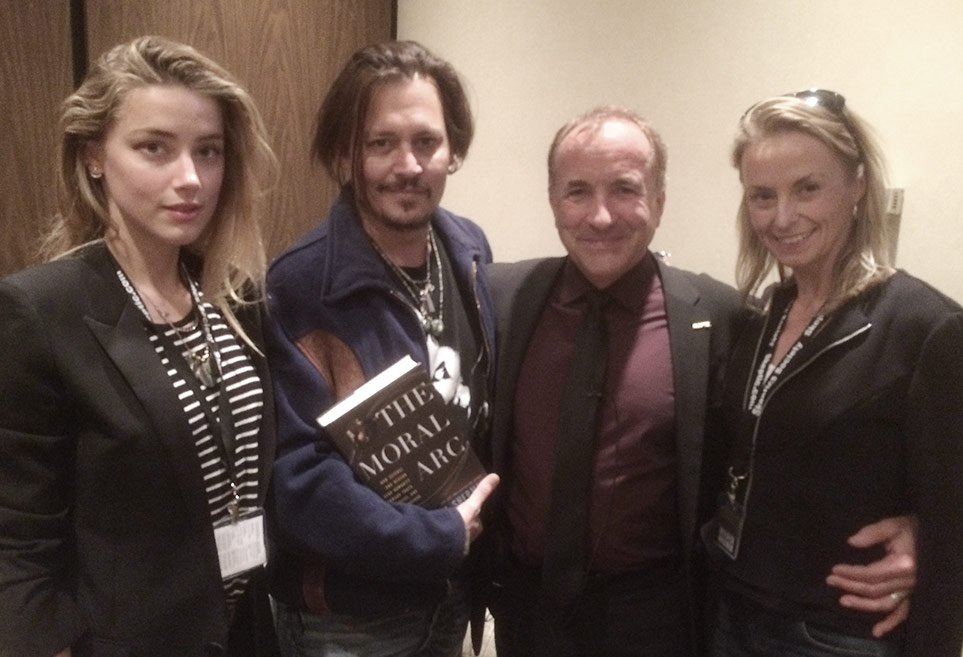
Mega star Johnny Depp proudly displays his Skeptic pin and signed copy of The Moral Arc during the conference, which he attended with his wife Amber Heard, actress and proud card-carrying member of the Skeptics Society, pictured here with Michael and Jennifer Shermer, who organized the musical entertainment for the conference.
The highlight of the day was the evening rock concert in Caltech’s Beckman Auditorium featuring the Las Vegas headliner Frankie Moreno and his band, featuring his brother Tony Moreno on bass, Mathew Belote on drums, and Alex Zeilon on guitar (about whom Frankie joked they hired for his Justin Bieber haircut). It was a rockin’ good time (Frankie even talked Michael Shermer into coming on stage to sing Mac the Knife with him—also included in the show below—American Idol ready he is not, but a good sport he is). The band played a number of Frankie’s original hit songs, along with the surprise hit cover of Eleanor Rigby, as you’ve never heard it. By the end of the evening Frankie had much of the audience on stage dancing and rockin’ out and having a grand ol’ time.
On Sunday the Skeptics Society hosted two science field trips, a Geo Tour to the San Andreas Fault and other unique geological features of the Southern California landscape that makes the San Gabriel mountains the fastest growing mountain range in the continental United States.

Geo Tour leader Dr. Donald Prothero lectures about the geological formation at Vasquez Rocks outside of Los Angeles, where Star Trek and many other TV shows, films, and commercials are filmed.
Skeptics also trekked up the San Gabriel mountains to Mt. Wilson to visit the observatory telescopes, which were in their day the largest on the planet, including the 60-inch telescope that was involved in important work in locating our solar system within the Milky Way Galaxy, the 100-inch telescope that Hubble used to discover the expanding universe, and the solar observatory from which hand-drawn illustrations of the sun and its spots have been made daily for a century.
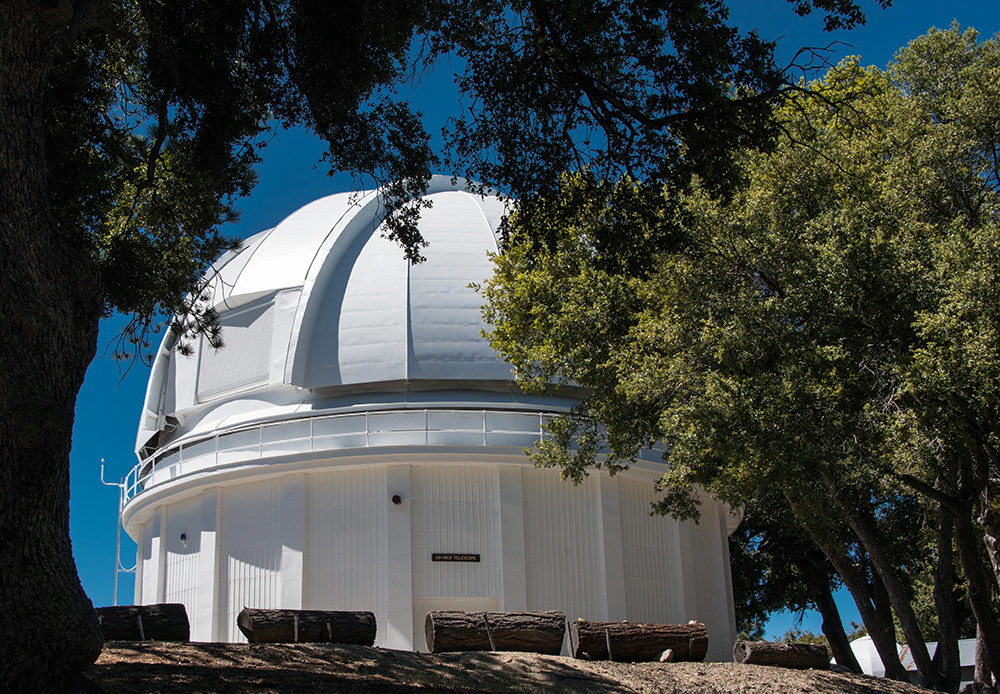
The 60-inch Telescope, activated in 1908, was the largest in the world at the time. It established the basic design of modern reflector telescopes. In addition, It pioneered spectroscopic analysis, parallax measurements, nebula photography, and photometric photography, it was used to measure the size of the Milky Way Galaxy and our position in it. It can now be rented for an evening of viewing by the public. (Photo credit: Ron Constable)

The 100-inch telescope on Mt. Wilson was the instrument used by Edwin Hubble to discover that the Milky Way was just one of countless “island universes,” or independent galaxies, as well as the fact that the universe is expanding. (Photo credit: Ron Constable)
Finally, a fund-raising dinner featuring Richard Dawkins, held at the Shermer home in Altadena, includes an impromptu close-up magic show by Jamy Ian Swiss. At the end Dawkins declared “Jamy is the best conjurer I’ve ever seen.”
TAGS: conference
eSkeptic for June 17, 2015
In this week’s eSkeptic:
About this week’s eSkeptic
In this week’s eSkeptic, William M. London reviews the Skeptics Society Conference on the Future of Science and Humanity that took place at Caltech May 29–31, 2015.
William M. London is a professor of public health at California State University, Los Angeles who specializes in the study of consumer health issues. He is tied for the record of most degrees (five) from the University at Buffalo (SUNY): BA in biological science; BA in geography; EdM in educational psychology; EdM in health education; and EdD. in health education. His Master of Public Health degree is from Loma Linda University. He completed all coursework toward a Master of Science in Clinical Research from Charles R. Drew University of Medicine and Science.
The Year 2525 Ain’t What It Used to Be
by William M. London
When I saw the lineup of world-class speakers for the Skeptics Society’s conference “In the Year 2525: Big Science, Big History, and the Far Future of Humanity (May 29–31, 2015) ” at Caltech’s Beckman Auditorium, I realized I had to be there, starting with the speakers’ reception and buffet dinner at The Westin Hotel in Pasadena featuring close-up magic performed by Jack Velour and after-dinner stage magic performed by Jamy Ian Swiss.
The opening talk of the conference by prominent paleontologist, geoscience researcher, and science educator Donald Prothero suggested horrible living conditions ahead if we continue on our present course. Prothero was like the ghost of Jacob Marley coming to haunt Ebeneezer Scrooge with three more ghosts: (1) mass extinctions, (2) global warming, and (3) depletion of limited mineral resources. These ghosts are no phantoms. There have been five major mass extinctions of species on our planet, and now we’re in the era of a sixth extinction that is a thousand times greater. He cited the book The Sixth Extinction by Elizabeth Kolber, which won the 2015 Pulitzer Prize for General Non-Fiction. (As if, I didn’t already have enough books on my reading to-do list!)
Prothero used the analogy of rivets popping out of an airplane wing to species dying off. The problem isn’t catastrophic right away, but when enough rivets pop out, the wing falls off. In other words, when enough species die off, ecosystems collapse. As well, he said we’re headed for a global increase in temperature of four degrees Celsius by the end of the century and that holding down the increase to just two degrees would be an enormous challenge. He described the problem of increasing tropical disease with the spread of insects accompanying warming climate. He said sea level has risen eight inches since 1900 and showed maps projecting how much of coastal areas around the world will be underwater if the melting of glaciers and ice caps continue unabated.
Prothero then moved on to the problem of finite mineral resources. For example, he noted that rare earth elements are available mainly from China. He presented Hubbert’s famous bell-shaped curve illustrating production rates of natural resources over time and said that we are already at the end of the oil age since it has become more and more difficult to maintain oil supplies to meet energy demands. He concluded his talk by emphasizing the need for green energy supplies and by pointing out how overpopulation contributes to the catastrophic problems he described.
The last question Scrooge asked the Ghost of Christmas Yet to Come was: “Are these the shadows of the things that Will be, or are they shadows of things that May be, only?” I thought of this as Prothero considered how much human progress has come and may continue to come at the expense of other species and the future habitability of our planet. I’m an optimist, but Prothero convinced me that we need to carefully study the sustainability of human progress. And that entails consideration of the likelihood of various calamitous scenarios along with the feasibility and potential positive and negative impacts of various solutions to the problems Prothero described.
Ian Morris, the Jean and Rebecca Willard Professor of Classics and Professor of History at Stanford University and a Fellow of the Stanford Archaeology Center, was next on the program. He spoke about his new book Foragers, Farmers, and Fossil Fuels: How Human Values Evolve, which focuses on how the source of energy a society relies on influences its cultural evolution that, in turn, impacts upon human values such as what is viewed as just and fair.
For example, Morris noted that hunter-gatherer tribes value political, economic, and gender equality. Hierarchies don’t work in such small societies. Violence is a common response to disruptive upstarts. By contrast, farming societies are larger and more complicated, requiring a division of labor. Thus, they are hierarchical with significant gender inequality. He characterized the violence in these hierarchical as state-sanctioned. Finally, Morris described fossil-fuel societies as having enormous populations, technology, and an extensive division of labor. Ordinary people are empowered through democracy and open society arrangements thrive. Keeping with the futuristic theme of the conference, Morris raised questions about networked post-fossil-fuel societies:
- What will fairness look like when brain-to-brain interfacing is common?
- What will political, economic, and gender hierarchies look like?
He mentioned two possible scenarios:
- A souped-up fossil fuel society that would be hierarchically flatter with increased egalitarianism.
- A society of some superhuman people with significant hierarchy.
Care to speculate about which scenario would be more successful in averting the catastrophes that Donald Prothero described?
The next speaker, Jared Diamond, Professor of Geography at UCLA, shared insights related to his field experiences in New Guinea. He began by discussing how people judge and misjudge dangers (an issue I emphasize as a consumer health specialist and healthy skepticism advocate). He noted that while hazards of the natural environment, violence, and infectious disease are greater problems in New Guinea than in the U.S., chronic disease hazards are greater here. Also, Americans have more remedies for hazards (such as orthopedic care to set broken bones). However, Americans tend to obsess about or overrate the wrong risks, such as terrorism, plane crashes, and nuclear accidents. Hazards tend to be perceived as more risky when they’re unfamiliar and seen as beyond our control.
In contrast, Diamond said we need to recognize bigger threats that are more familiar and within our control, like slipping and falling in showers, falling off stepladders, and tumbling down stairs. At age 77, Diamond said he has a life expectancy of 15 years. He quipped that with a 1 in 1000 risk of a fatal fall in a shower, he can expect to kill himself five times in his expected life. Thus, he advocated for what he called “constructive paranoia.” He summarized what we can learn from New Guineans regarding:
Bringing up children. In New Guinea, there are no helicopter parents and they don’t spank. Children have choices and responsibilities, and they develop social skills to bargain. Diamond said he modeled this parenting style in raising his own twin boys.
Staying healthy. Diamond claimed that there is no diabetes and heart disease among New Guineans, not because they die too young to develop these diseases but due to their vigorous physical activity and high-fiber diets that are low in salt and sugar. While a report from 1966 backs Diamond’s claim, I note that diabetes and heart disease have become increasingly prevalent in New Guinea as they adopt Western diets.
Alzheimer’s disease attenuation. Diamond said that bilingualism and multilingualism provides some protection against Alzheimer’s disease by working out the brain. I note that the Mayo Clinic says the evidence isn’t clear that speaking more than one language prevents Alzheimer’s disease. And working out the brain, at least through games developed by the brain training industry, has not been established as protection against Alzheimer’s disease development.
Next up was the inimitable social psychologist Carol Tavris, who began her talk with a clever joke and what I would call constructive silliness. She suggested that in 500 years, there would be a female Pope, but no God, and a white guy would be invited to speak on gender. Tavris noted that 25 years ago efforts to predict the future of how gender would be talked about didn’t predict gay marriage, the transgender movement, the concept of metrosexuals, a black president, and Sarah Palin, along with female leaders in Ireland and Turkey (not to mention Germany, whose Chancellor is not only female but holds a Ph.D. in quantum chemistry!). Nevertheless, Tavris offered a few extrapolations of current trends:
- Technology transformation of human nature (e.g., artificial intelligence, optogenetics, DNA alteration).
- Gender could be chosen at different times in one’s life as on a planet described in Ursula K. Le Guin’s novel The Left Hand of Darkness.
- We may be able to change racial characteristics including skin color.
- Ethnocentrism will shift to more trivial group differences.
- Technology won’t transform human capacities.
Tavris noted that despite the recent shift in thinking about homosexuality from preference to orientation, no clear biological component of homosexuality has been established. She talked about people having a variety of sexual thoughts and behaviors with indistinct categories of gender. She noted that identity is learned and one’s sense of identity is strongest when most under attack. She speculated about a future of many sexual possibilities with a shift back to thinking about sexual preferences rather than orientations.
Manhattan Institute linguistics scholar John McWhorter, an associate professor of English and Comparative Literature at Columbia University, was the last speaker of the morning program. McWhorter predicted that there will be fewer languages in 2525 since globalization kills them. Languages survive only if people learn them in the cradle. He said that after age 13, it is all but impossible to learn a language perfectly. He showed that small, obscure languages are especially complicated and difficult to learn with their many irregular verb forms.
He predicted that one in three humans will speak English, not because there is anything special about English, but because “it got there first,” as most Web sites are now in English. He described the influence of English as a path dependent phenomenon similar to the QWERTY keyboard standard.
While more people speak Mandarin than English, McWhorter said Mandarin will not be the universal language because the subtle tone differences in Mandarin make big differences in meaning and Chinese script is so difficult to decipher. He said it consists not merely of pictures, and described it as a “bleeding, inefficient, tragic mess.”
He predicted that languages will get easier, and since speech—not writing—is what language is about, language will be more oral. The title of his talk sums up his message: “World’s Languages in 2525: Fewer, Easier, Oraller.”
The morning program concluded with a panel discussion with the morning speakers, which focused on exporting and importing features of different cultures. As much as Diamond likes visiting New Guinea, he said he wouldn’t want to live there considering the violence and mistreatment of women. Tavris noted that you can’t export cultural features like you can export cheese and that outsiders can mess up cultural and economic rules of societies. Diamond noted that sometimes outside intervention is welcomed. He gave the example of New Guinea welcoming imposition of outside force to save them.
The afternoon program began with Richard Dawkins, one of the most influential scientists in the world, in conversation with the Skeptics Society’s Michael Shermer. Shermer brought up the Pew Research Center poll results from May, which showed that the 56 million people in the U.S. who are religiously unaffiliated (often called the “nones”) outnumber both mainline Protestants and Catholics. Dawkins generated laughs from the audience and media coverage with this comment: “One of the problems is that the so-called ‘nones’ often give up religion for something even worse. I mean, they take up Deepak Chopra or something like that.” (In his book The Seven Spiritual Laws of Success, Chopra’s “Law of Detachment” calls for relinquishing attachment to the physical universe and his “Law of Least Effort” calls for harmony, love, and accepting people, situations, circumstances, and events as they occur. Chopra ignored those laws and the day after the conference he sniped back at Dawkins on Twitter, which got him media attention.)
I enjoyed the intellectual stimulation Dawkins provided in his wide-ranging conversation with Shermer, who pushed him on political issues, such as to what extent the U.S. and UK should intervene in Middle Eastern matters involving the violation of human rights. Dawkins admitted that: “We on the left are so afraid of being thought of as racist that we bend over backwards…” while misogyny in Islam gets a free pass. While describing himself as an “old-fashioned imperialist” in objecting to severe female genital mutilation, he noted difficulties in intervening with cultures and the need to be very cautious before launching military actions with “boots on the ground.”
In the context of the evolutionary origins of morality, Shermer asked Dawkins his opinion on a popular theory of group selection, to which Dawkins replied “group selection is bollocks;” and that kin selection and reciprocal altruism explain altruism. He said that we are “programmed” with rules of thumb that work under normal environmental conditions that can result in altruism. He gave as an example a bird’s rule of thumb to feed squawking things in a nest, but by following the rule a bird can wind up feeding another species. That’s a mistake in a Darwiniain sense, but it’s a wonderful mistake because it produces niceness. After all, he said, no one wants to live in a Darwinian world of morality; real morality is not Darwinian. Shermer pressed him to use a different word than “mistake” because it implies that morality is not real, in some transcendent sense. Dawkins replied that they were quibbling about semantics. He endorsed Shermer’s latest book The Moral Arc: How Science and Reason Lead Humanity toward Truth, Justice, and Freedom but his phrasing may not have come out as intended. Dawkins gave the audience a good laugh when he said: “The last chapter of The Moral Arc is very inspiring. It’s worth plodding through to the end.”
As a professor of public health, I was delighted that the next speaker, Esther Dyson, a distinguished expert in business and technology, discussed her work in the area of community-based disease prevention (to make a difference in the here and now, if not for the far future of humanity). She noted that little is spent on prevention and most health interventions are too weak to have an impact—like peeing in reservoir. So in order to create a healthier world, she decided to begin with one community at a time through HICCup, the not-for-profit Health Initiative Coordinating Council she founded.
She described her team’s approach as pouring rose water into five bathtubs. The five “bathtubs” are geographically remote communities selected from 42 communities from 26 states that submitted applications last year for “The Way to Wellville Challenge.” Motto: “five places. five metrics. five years.” The five chosen places are: Clatsop County, Oregon; Greater Muskegon, Michigan; Lake County, California; Niagara Falls, New York and Spartanburg, South Carolina. It wasn’t clear to me what five metrics were chosen for assessing the outcome of the project and she described the initiative as “a pseudo-clinical trial.” Epidemiologists refer to such projects as community trials or field trials.
I’m not sure what community-oriented public health intervention plans for the Wellville communities look like, but Dyson mentioned some of the issues to be addressed include jail-acquired insolvency, reduction of incarceration, and making it easy for companies to make money selling good food. I couldn’t tell from Dyson’s presentation or from the HICCup Web site how well the five-year study of the Wellville communities is aligned with principles of community-based participatory research that are emphasized in projects supported by the National Institutes of Health. Nevertheless, it was good to learn about an initiative aligned with the socio-ecological framework for prevention.
Next up was the scientist, best-selling author, and tech-futurist David Brin, who posed the question: “How do we deal with the tentative Renaissance Enlightenment that we’re in?” He said that future scenarios explored in science fiction are sometimes apocalyptic and dystopian. But his overall message was hopeful. He talked about cameras now coming at us from anywhere, but he hailed a 2013 court decision giving citizens the right to record the police. He talked about the history of technology and described the development of printing and glass lenses as the first prosthetics. He suggested that new technologies present crises of progress. “Grouches” may be right about new technologies in the short-term, he said, but “transcendentalists” have been right after painful adjustments. Brin discussed the dance of competition and cooperation that creates a positive sum game rather than a zero sum game in our country. He described regulated markets as serving to ensure justice. Liberals, he said, should view Adam Smith, as their hero.
Reading Smith’s The Wealth of Nations is now on my reading to-do list—right ahead of the novel Timescape by Gregory Benford, a professor of physics at the University of California, Irvine, who has worked with other scientists and science fiction writers in addressing the challenges and opportunities of a 100-year project to create a starship. That’s quite a visionary goal. By contrast, he noted that Thomas Jefferson thought it would take a thousand years for the American frontier to reach the Pacific Ocean.
After mentioning our lack of attention to the present-day problem of some six million tons of debris that humans have left in orbit around the earth, Benford focused on the challenges of space exploration. “Space will kill you,” he said. Threats from space travel include fire, radiation, air leaks, low oxygen, low gravity, carbon dioxide accumulation, and bad food. But he also mentioned potential benefits. For example, asteroids are a source of water and Mars has same surface area as land areas of earth. Benford suggested that we should expect the unexpected when we open new horizons, but it will pay off, even in 2525.
The final speaker on the program was Arthur Benjamin, Smallwood Family Professor of Mathematics at Harvey Mudd College, who has been described as the world’s greatest living lightning calculator. Benjamin gave one of his many remarkable performances of solving arithmetic problems in his head faster than audience members can with calculators. I was especially amazed when he rapidly constructed a 4×4 magic square based on entering an audience member’s birth date in the top row. Benjamin noted that 47% of U.S. teachers have standardized math test scores in the bottom, while in elite-performing countries in mathematics such as Singapore, 100% of teachers are in the top third.
I left the conference utterly confused about the prospects for humanity in 2525, but cautiously optimistic for the future my son will face. One of my immediate concerns is deciding which book authored by one of the conference speakers I should read next. ![]()
The Way of the Mister: If I’m wrong…
Some people missed the irony of my last video regarding Fundamentalism. This video is to set them straight.
Order the e-book, Atheist Fundamentalist on Kindle.

